

Japan vs. Korea: A Comprehensive Travel Guide to Help You Decide
- Post author: cuppa
- Post published: January 27, 2024
- Post category: Knowledge Base
Deciding between a trip to Japan or Korea can be quite a pickle! Both countries offer rich cultural experiences, delicious cuisine, and unique attractions. It’s like choosing between two equally tempting dishes on a menu.
Japan, known for its blend of tradition and tech, offers a journey into the future and the past all at once. On the other hand, Korea, with its K-pop culture and historic palaces, provides a vibrant and dynamic travel experience.
So, how do you choose? Well, I’m here to help you make that decision. Let’s delve into the unique aspects of both Japan and Korea, and see which one aligns with your travel aspirations.
Table of Contents
Japan: A Blend of Tradition and Tech
When it comes to the ‘Land of the Rising Sun’, it’s hard to overlook its reputation as a powerhouse of technology. While one might also associate Japan with its lush Shinto shrines, verdant tea gardens, and serene Zen temples, it’s equally recognized for its gleaming skyscrapers, bustling cityscapes, and high-speed Shinkansen or bullet trains.
A visit to Japan is practically a time travel adventure. You’ll walk amid centuries-old castle towns in the morning and witness futuristic robot restaurants at night. You’re constantly torn between the charms of the past and the allure of the future.
One of the prominent aspects of Japan is its advanced tech scene. Consider Akihabara in Tokyo, where I found electronics stores galore. One moment I was marvelling at the latest cutting-edge gadgets, the next I was lost in the colorful chaos of Manga and Anime. This blend of Japanese pop culture and technology is infectious, making you yearn for more.
Yet, Japan is not all about shiny new toys. There’s an undercurrent of tradition that binds even the glitziest cities. Take Kyoto , for instance. This former imperial capital perfectly marries the old and the new. From its ancient temples and traditional tea houses to avant-garde architecture and stylish boutiques, Kyoto simply captivates. It’s a testament to Japan’s ability to balance reverence for the past with an insatiable quest for the future.
Japanese cuisine is another area where tradition collides with innovation. It’s not just sushi and ramen. It’s also about using umami (savory taste) to its full potential. Michelin-star restaurants co-exist with quaint local food stalls, each pushing culinary boundaries while adhering to the age-old principles of Japanese gastronomy.
Lastly, I cannot overlook the role of technology in enhancing Japan’s tourism experience. There is no shortage of modern conveniences. From railways that always run on time to advanced tourist translation apps, Japan is at the cutting edge of travel convenience.
In short, a trip to Japan is a kaleidoscope of experiences. It’s a place where traditions and high-tech wonders are seamlessly woven into everyday life.
Korea: Vibrant and Dynamic Travel Experience
Another exciting destination to consider is Korea. Similar to Japan, Korea offers an interesting blend of modernity and tradition.
My first touchpoint with Korea was its fast-paced and vibrant capital city, Seoul. Walking through Seoul is like stepping into the future – bustling neighborhoods like Gangnam and Hongdae radiate with bright neon signs, skyscrapers, and people navigating their routine in the embrace of cutting-edge technology. Yet, nestled among these modern marvels, you’ll find places like Gyeongbokgung Palace and Insadong, where the rich scent of history and culture pervades. Tradition and modernity coexist flawlessly , much like in Japan, demonstrating Korea’s rich cultural tapestry.
Then, there’s Korean cuisine – a tantalizing roller coaster ride of flavors. From the fiery yet comforting Kimchi stew, to the savoury delight of Bibimbap, and down to the street-food haven, Korea is a gastronomic paradise. Food, in these parts, perfectly echoes the local culture – a unique mix of time-honoured recipes and today’s culinary innovation .
Korea’s tech scene is also a force to reckon with. Boasting big names like Samsung and LG, Korea stands out with its futuristic concept stores, robot cafes, and advanced tech showrooms. Tech enthusiasts are sure to appreciate sights such as the Samsung D’light Store or Starfield Library in Seoul.
Natural attractions are also aplenty in Korea. Jeju Island, for instance, offers serene landscapes, fetching waterfalls, and hiking trails that lead to awe-inspiring volcanic craters. The healing forests of PyeongChang and vibrant Cherry Blossom Festival in Jinhae further amplify Korea’s natural allure.
Weaving in Korea’s dynamic pop culture, such as K-pop and K-dramas, will enhance your travel experience, ensuring an immersive introduction to this fascinating country. To say that a trip to Korea offers a vibrant and dynamic travel experience would be an understatement.
So, as you weigh the merits of Japan and Korea, remember that each country offers a unique tapestry of experiences that’s as enriching as it is enlightening. It’s a tough choice, no doubt, but isn’t that what makes travel planning all the more exciting?
Cultural Experiences in Japan
Traveling opens up a windshield wiper-like perspective, where every sweep brings a fresh view right before your eyes. In Japan, a lot more than the usual awaits an eager explorer. Hold onto your hats because it will be a dizzying yet mesmerizing ride.
Every traveler, whether a history fanatic, a religious explorer, a pop culture addict, or even a foodie, will find something endearing in Japan.
Historic Sites and Heritage: There’s an overflow of historical sites in Japan with over 20 UNESCO World Heritage sites. From the ancient castles of Himeji and Matsumoto to the beautiful temples of Kyoto, it’s like stepping backwards into a time when samurai roamed and the shogunate ruled.
Japanese Cuisine: I’m not only talking about sushi here! Japan’s cuisine, or what they call washoku , goes far beyond sushi. Whether it’s slurping soba noodles in Tokyo, savoring Kaiseki in Kyoto, or relishing the tang of Okinawan sushi, your palate will enjoy this culinary journey.
Art and Crafts: In Japan you can’t evade art and craftsmanship. With inspiring rural landscapes and bustling urban centers, it’s a hotbed for artistic expressions ranging from ancient pottery and woodblock prints to contemporary forms like manga and 3D art.
Religious Practices: Japan’s Shinto and Buddhist practices are fascinating. Participation mandatory matsuri (festivals) held all year round, visit hallowed grounds like the Meiji Shrine, or witness the awe-inspiring O-Bon Festival.
Truly, Japan is not just a country—it’s an experience. Next, I’ll delve into how Korea’s culture offers equally vibrant and enriching experiences.
Cultural Experiences in Korea
As we explore further, let’s delve into the captivating realm of Korean culture. Like Japan, Korea has an intricate tapestry of time-honored traditions and innovative trends that weave together to provide a rich, full-bodied cultural experience for every visitor.
While you might’ve been introduced to Korea via the vibrant sounds of K-pop or the irresistible draws of K-dramas, the nation’s cultural depth extends far beyond these popular facets. Going from bustling Seoul to the serene countryside, you’ll come across a juxtaposition of modern marvels and storied spectacles that narrate Korea’s grand history.
You cannot discuss Korea without mentioning its opulent palaces and historic sites. For instance, Gyeongbokgung Palace is a significant fixture in Seoul that showcases the regal aura of past Korean dynasties. Or venture a little further afield to the historical city of Gyeongju – often referred to as “the museum without walls” – where relics and ruins of the storied Silla Kingdom lie.
Korean arts and crafts offer another layer of cultural intrigue. The mesmerizing art of crafting Hanji – traditional paper made from mulberry trees – to the detailed and delicate process of creating traditional Korean Hanbok will have you appreciating the skill and precision involved.
Lastly, but by no means least, we have Korean food. Korean cuisine is a roller coaster ride of flavors. From the fiery heat of Kimchi and unique taste of Bibimbap, to the soul-warming Stone Pot Rice and spicy Buckwheat Noodles. Each dish tells a story and offers a taste of the country’s cultural diversity.
No doubt, traveling to Korea will heap cultural enrichment upon your senses. From historic sites to traditional arts, every day spent here offers unique insights into this fascinating culture. It’s not a matter of if you should visit Korea, but when.
Remember, you’re not just sightseeing, you’re making memories for a lifetime! And with that, it’s time to head over to our next segment: Korean festivals. Buckle up, because we’re about to delve into the heart of Korea’s vibrant public celebrations.
Cuisine: Japanese Delicacies vs. Korean Delights
Many travelers plan their journeys around culinary explorations. If you’re among that league, both Japan and Korea offer a wide array of delectable treats.
Journeying through Japan unearths culinary gems such as sushi & sashimi, known internationally. Yet, there’s so much more to discover: sumptuous ramen noodles, expertly grilled yakitori, and sweet mochi. Meanwhile, the country’s extensive palette also offers diverse regional dishes and local specialties. Cold Hokkaido has its fresh and delectable seafood while Okinawa down south is famed for its goya champuru, a unique stir-fry using bitter gourd.
On the other “table,” Korea tantalizes your tastebuds with dishes like bulgogi, sweet marinated beef barbecue, and kimchi, the famous fermented vegetable dish. Yet perhaps, the real specialty lies in regional varieties of kimchi, ranging from refreshing, crisp water kimchi in the North to hot and fiery versions in the South. And let’s not forget Korea’s comfort food, bibimbap: a bowl of warm white rice topped with sautéed and seasoned vegetables, chili paste, and usually a raw or fried egg.
If street food is more your style, both cultures won’t disappoint. In Japan, there are yatai (food stalls) located in city street corners offering takoyaki (octopus balls) and okonomiyaki (savoury pancakes). Over in Korea, street food vendors sell everything from spicy tteokbokki (rice cake) to fluffy hotteok (sweet pancakes).
Importantly, it’s not just about the food. Both countries offer immersive dining experiences that focus on more than simply satiating your hunger; they incorporate elements of their ancient cultures and modern innovations.
Deep dive into Japanese cuisine with traditional customs: meticulous food arrangement speaks volumes of their aesthetics, while the tea ceremony articulates a story. In Korea, experience traditional dining called Hanjeongsik, a course meal with a spread of small side dishes or take a hands-on cooking class to learn the art of Korean cuisine.
Attractions in Japan
Venturing into Japan, one thing becomes immediately apparent: there is a harmonious blend of the old and the new. The country’s ability to maintain its ancient heritage while simultaneously pushing the boundaries of modernity is nothing short of awe-inspiring.
In both urban and rural settings, you’ll find temples drenched in history and enormous skyscrapers touching the clouds. This unique combination makes Japan an intriguing destination from a cultural and architectural standpoint.
The City of Tokyo offers an abundance of attractions that could keep you busy for weeks. The Tokyo Skytree – currently the tallest tower in the world – is an architectural marvel providing 360-degree views of the sprawling metropolis. The ancient Sensoji Temple , located in Tokyo’s traditional district of Asakusa, gives a glimpse into the nation’s spiritual heritage.
Away from the urban vibe, the scenic Mount Fuji stands high as a testament to Japan’s gorgeous landscapes. It’s not just a sight to behold but a popular hiking destination, with individuals from all around the world taking on the adventure to reach its summit.
The city of Kyoto , a former imperial capital, is another must-visit place in Japan. Here, one can immerse themselves in Japanese tradition by visiting Kinkakuji (Golden Pavilion) and Fushimi Inari Shrine , famous for its thousand red torii gates.
But Japan isn’t restricted to its temples, cities and nature alone. The country also offers unique experiences like Onsen Bathing at natural hot springs, and Bullet train rides – traveling at speeds that defy human comprehension.
A peek into the daily life of a Sumo wrestler at a morning practice session, a stroll through bustling authentic Fish Markets , and a visit to a traditional Geisha district also add to Japan’s allure.
Fascinating indeed, Japan is mach more than sushi and ramen. It’s an amalgamation of a distinct past, striking landscapes, and futuristic innovation that pulls everyone under its charm.
Attractions in Korea
Exploring South Korea unveils a panorama of dynamic cities, breathtaking natural landscapes, and impressive historic sites. Let’s delve in and discover South Korea’s must-visit attractions.
The capital city, Seoul , is an exhilarating blend of ancient traditions and cutting-edge technology. At the heart of the city is the Gyeongbokgung Palace , a striking symbol of Korea’s proud history. Surrounded by beautifully manicured gardens, this palace provides a serene respite from the bustling city life. Talking about gardens, don’t miss out on visiting Namsan Park , home to the iconic N Seoul Tower that offers stellar views of the cityscape.
Seoul’s Myeongdong district is a paradise for shoppers with an array of retail outlets from high-end designer boutiques to street markets. At night, the scene transforms into an open-air food market teeming with mouthwatering Korean delights.
History enthusiasts would find the coastal city Gyeongju fascinating. Known as the “Museum without Walls”, this city is studded with ancient temples and royal tombs that narrate the stories of the Silla Dynasty. Uncover the millennia-old history at Bulguksa Temple and the Seokguram Grotto , both UNESCO World Heritage Sites.
For breathtaking natural sights, head over to Jeju Island . Its outstanding natural beauty, featuring volcanic landscapes and pristine beaches, will leave you in awe. The sunrise view from the peak of Hallasan Mountain is truly a sight to behold. The Jeju Volcanic Island and Lava Tubes are recognized as UNESCO Natural Heritage Sites, magnifying the island’s idyllic charm.
Once in Korea, immersion into their local culture cannot be overlooked. Try out traditional kimchi making or the tea ceremony for an authentic Korean experience. Korea’s unique blend of culture, history, gastronomy, and stunning landscapes certainly ensures a fulfilling trip that caters to all interests.
Choosing Based on Your Travel Aspirations
Wondering whether to pick Japan or Korea for your next travel experience? Don’t fret! Your personal interests and travel aspirations should guide your choice. Considering these, let’s delve into the unique characteristics of both destinations to help you make an informed decision.
If you’re a history enthusiast, both Japan and Korea have a lot to offer. Japan’s historical sites like Tokyo’s Sensoji Temple or Kyoto’s golden Kinkaku-ji are renowned world over. Korea counters with sprawling palace complexes, such as the grand Gyeongbokgung in Seoul and antique royal tombs in Gyeongju. For those yearning for a taste of times gone by, you’ll be enthralled in both countries.
For the foodies among us, which country has superior cuisine is a hotly debated topic. Japan is famous for sushi, ramen, and yakitori while Korea stakes its culinary claim with bulgogi, kimchi, and bibimbap. Street food culture is vibrant in both nations, offering a smorgasbord of delights to tantalize your taste buds.
If technology and modernity excite you, then Tokyo’s neon glow and unmatched innovation will be irresistible. Contrastingly, Seoul is a city where tradition and technology intertwine seamlessly, offering a unique blend for the discerning traveler.
Natural beauty? Both countries shine! While Japan lays claim to iconic mountains like Mount Fuji and scenic onsen towns, Korea boasts of unparalleled beauty with volcanic landscapes in *Jeju Island and breathtaking panoramas in rural countryside.
There are endless opportunities for unique experiences. Be it onsen bathing in Japan or a traditional tea ceremony in Korea, there’s always something new to learn and immersive experiences to enjoy.
Choosing between Japan and Korea isn’t an easy task. Both offer a rich blend of history, culture, and cuisine that’s sure to delight any traveler. If immersing yourself in ancient temples, feasting on sushi and ramen, or taking in the breathtaking views of Mount Fuji appeals to you, Japan’s your spot. However, if you’re drawn to vibrant cities, mouthwatering street food like bulgogi and bibimbap, and the serene beauty of places like Jeju Island, then Korea’s calling your name. Both countries offer unique experiences, whether that’s soaking in an onsen in Japan or participating in a traditional tea ceremony in Korea. So, it’s not about choosing the ‘better’ destination. It’s about deciding which experiences you’d like to dive into. Remember, there’s no wrong choice here. Whether you choose Japan or Korea, you’re in for an unforgettable adventure.
Frequently Asked Questions
What are the highlighted historical sites in japan and korea.
The article highlights the Sensoji Temple in Tokyo, Japan, and the Gyeongbokgung Palace in Seoul, Korea as key historical sites that add a rich cultural dimension to your travel experience.
What are some of the popular cuisines to try in Japan and Korea?
Japan is famous for its sushi, ramen, and yakitori, while in Korea, bulgogi, bibimbap, and kimchi are must-tries. Both countries also offer vibrant street food culture.
Can you suggest some unique experiences in Japan and Korea?
In Japan, taking a dip in an onsen (hot spring) can offer a unique cultural experience. Meanwhile, in Korea, participating in traditional tea ceremonies provides a glimpse into the nation’s rich traditions.
What are some architectural landmarks in Japan and Korea?
Japan is known for the intriguing blend of old and new in its architecture, with Mount Fuji being a notable landmark. In Korea, the dynamic cities, natural landscapes, and historic sites like Gyeongbokgung Palace are worth visiting.
What’s noteworthy about the natural landscapes in Japan and Korea?
Japan’s iconic Mount Fuji and Korea’s volcanic Jeju Island landscapes offer visitors a taste of the countries’ natural beauty.
Why are Japan and Korea recommended travel destinations?
The article emphasizes that the diversity and allure of the cuisine, attractions, and unique cultural experiences make Japan and Korea must-visit destinations for travelers.
You Might Also Like

Surviving the Atlas Mountains: Essential Safety Tips for Moroccan Road Trips

Tallinn or Vilnius: Evaluating Your Next Travel Destination

Mastering the Sichuan-Tibet Highway: Tips for Safe and Successful Driving
Japan or South Korea? How to choose your next holiday destination
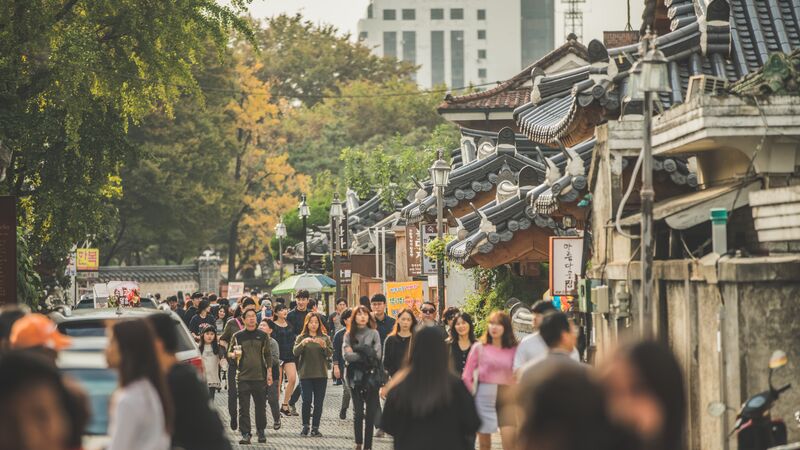
It turns out comparing countries isn’t all that easy to do…at least, not without a little help.
You might be under the impression that deciding which destination to travel to is the easy part, but the decision becomes a lot trickier when you’re choosing between two breathtaking Asian countries – Japan and South Korea.
Japan has the tradition and the food, but South Korea has the city of Seoul and K-pop so how are you supposed to pick one?
To help you out with this almost impossible dilemma, we’ve put together a comprehensive guide comparing the two countries when it comes to culture, landscapes, weather, cuisine, and cities so you can jet off knowing you made the right choice.
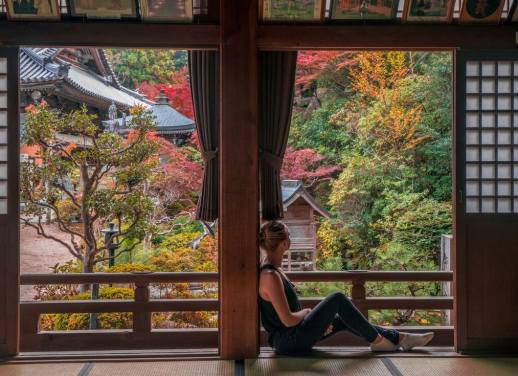
Japan might be the land of futuristic technology and vending machines that sell everything under the sun (no literally, you can buy fresh lobsters and lucky charms) but its ancient culture dates back thousands of years with traditions influenced by Confucianism (introduced in AD285) and Buddhism (introduced in AD522).
Although there are several elements of old-school Japanese culture practiced throughout major cities and rural areas such as tea ceremonies, sumo activities, bowing, geishas, and kendo, it’s actually Japan’s newer generations that are setting the cultural tone these days in a fast-paced world full of avant-garde fashion and virtual realities.
However, there’s still a focus on core traditional values such as modesty, respect, and discipline but this is more present in the older generation with the country’s young people preferring a life of flamboyancy and ostentation.
DISCOVER JAPAN ON OUR JAPAN: LAND OF THE RISING SUN TOUR
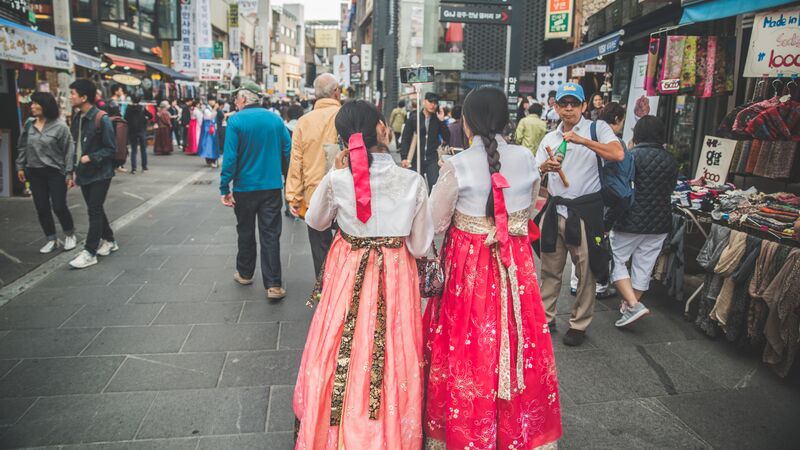
Thinking about South Korea’s culture can be overwhelming considering it dates back to 2,333BC but it prides itself on several core values that are still practiced today: respect, fairness, harmony, and adaptability (among others).
It’s these Confucius beliefs that underpin South Korea’s society with the majority of nationals participating in daily ancestral offerings, adhering to tiered interactions (strict hierarchal roles), and respecting community elders.
However, like with many other cultures, the younger generations are forging a new, less traditional path with less emphasis on humility and more importance placed on individuality and equality among all.
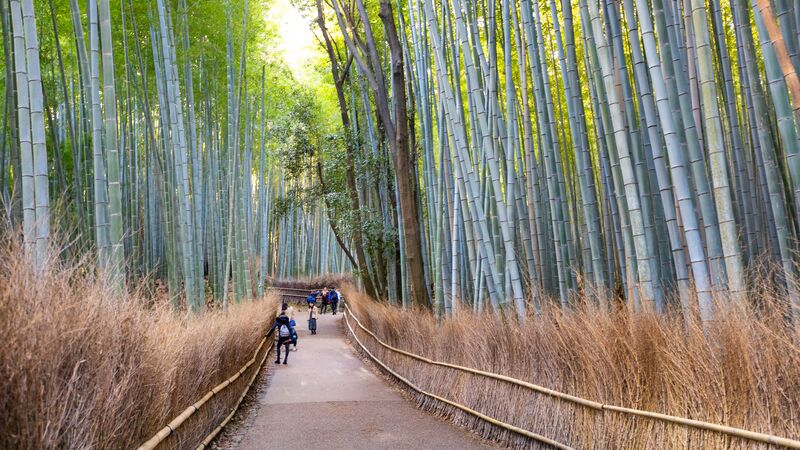
When you think of Japanese landscapes you might automatically think of Mount Fuji and while that’s definitely a landmark you have to set your sights on when you go to Japan, there’s so much more natural beauty to marvel at.
Boasting more than 6000 islands including Hokkaido, Kyushu, and Honshu, Japan’s geography consists of mountainous terrain, forested areas, natural hot springs, active volcanoes, and tranquil coastlines, as well as built-up cities, to explore.
Whether you feel like wandering through Aokigahara, a wildlife-infested forest on the outskirts of Mount Fuji, taking in the beauty of bamboo groves, or trekking up one of the many hiking trails on Mount Takao, this country’s wonders are both diverse and unique.
RELATED: NOW IS THE PERFECT TIME TO VISIT JAPAN
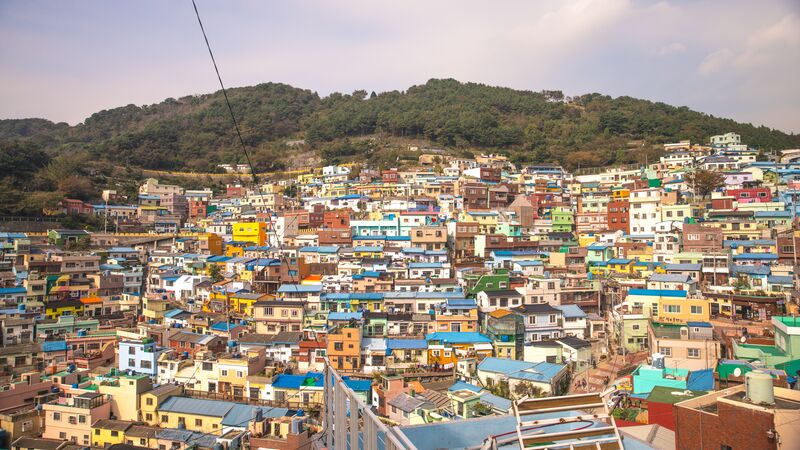
You’d be forgiven for not exactly knowing if there are any South Korean landscapes worth travelling thousands of kilometres for, but we can assure you the country is full of natural wonders from mystical forested mountain ranges to rocky and dramatic coastlines.
While Japan has Mount Fuji, South Korea has the smaller but no less impressive Halla-san – an extinct volcano that rises 6,398 feet high (compared to Mount Fuji’s 12,389 feet) and is located on Jeju Island. But that’s not all.
From UNESCO World Heritage-listed national parks like Seoraksan National Park with its unique rock formations and refreshing hot springs to Suncheon Bay with its extensive wildlife and breathtaking coastal areas, Mother Nature really did her best in South Korea.
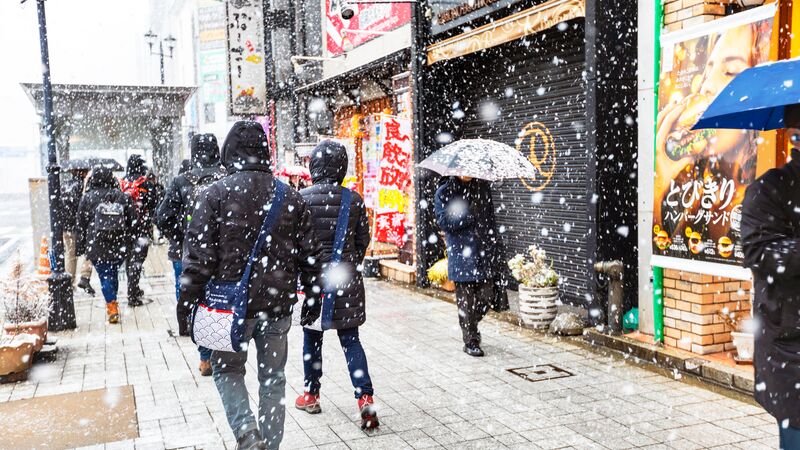
Japan’s weather tends to surprise a lot of people with different conditions and patterns experienced in different parts of the country from sticky, humid summers to cold, snowy winters but regardless of the season, Japan offers plenty to see and do.
If heavy snow (and the snow-based activities that come with it) tickles your fancy then head to the northern region of Yamagata from December to February, but if a light dusting is all you’re after, it might be worth visiting Hiroshima in the country’s south.
If you’re travelling during the summer and you’d rather keep humidity levels to a minimum, Tokyo’s the city for you with expected average temperatures around the 27°C mark (hot but not sticky). Osaka also experiences warm weather during the summer months and a mild winter making it one of the better year-round cities to visit.
JOIN OUR JAPAN EXPRESS SMALL GROUP ADVENTURE
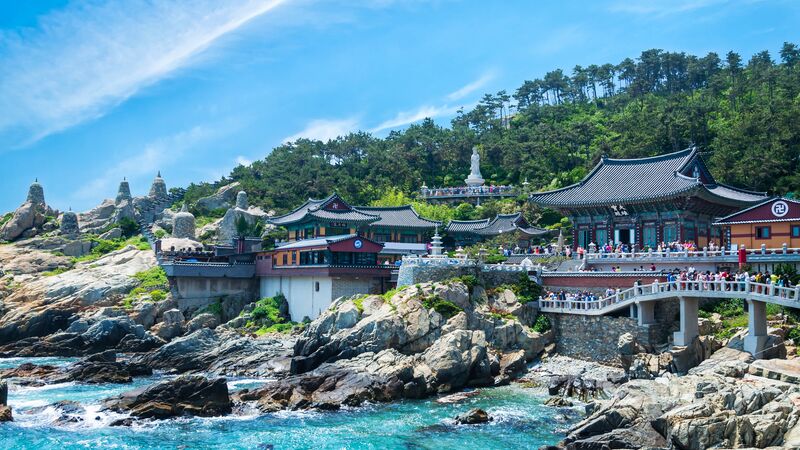
South Korea’s weather is much like that of its Asian neighbours – the summertime is considered the hot and rainy season and winter temperatures tend to drop below freezing in most parts of the country. For this reason, spring and autumn are generally considered the best seasons to visit.
During the months of March, April, and May, as well as September, October, and November, you can expect mild but comfortable temperatures without the rain and humidity experienced during the peak summer season. However, these optimal seasons never seem to last long so you really have to make the most of this country’s good weather while you have the chance.
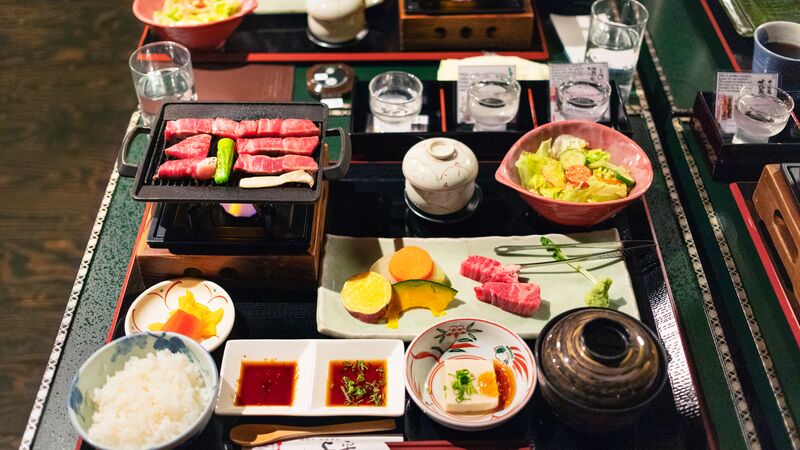
Your feet don’t have to do all of the exploring when you get to Japan. Embark on a culinary adventure and let your tastebuds take over with delicacies such as sushi, ramen, and okonomiyaki on the menu in most restaurants and eateries around the country.
Want to try something on-the-go? Pick up your next snack from one of the many vending machines you’re bound to see with seafood, ice cream, and hot meals all options for when you’re busy but peckish.
But a meal isn’t complete without a refreshing beverage to wash it down with; luckily, Japan has plenty of those. From traditional sake to antioxidant-packed green tea, trying out Japan’s cuisine is an experience you don’t want to miss.
RELATED: WHAT IS JAPAN FAMOUS FOR?
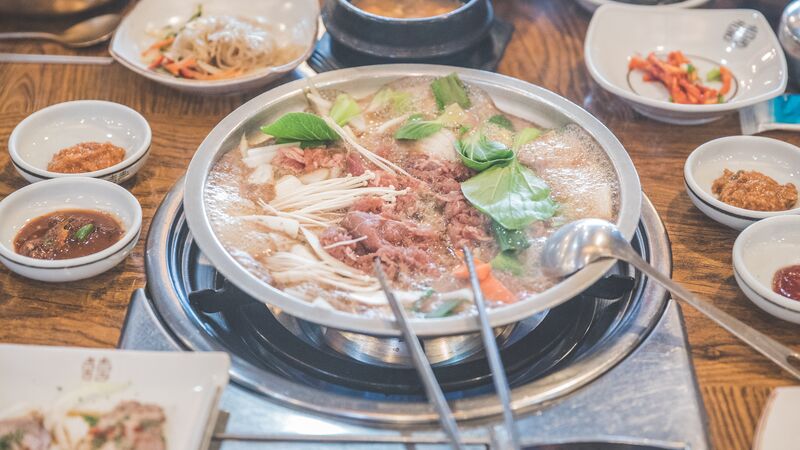
It’s hard to separate Japan and South Korea when it comes to their respective cuisines, like how can you pit sushi and kimchi against each other?! Answer: you can’t. But where Japanese food is centred on variety and balance, South Korean food is generally hot and spicy with ingredients such as fermented chilli paste and powdered red chilli the star of many traditional dishes.
However, long before Korean corn dogs stole the hearts of foodies around the world, traditional dishes such as bibimbap (a concoction of meat, vegetables, egg, and rice), jeon (a savoury pancake), and mandu (boiled, steamed, or pan-fried dumplings) were what travellers immediately sought out.
Other notable meals to try in South Korea are kan poong gi (spicy fried chicken), yook hwei (South Korea’s version of steak tartare), and gimbap (seaweed rice rolls). Oh, and you can’t forget to have Korean BBQ.
JOURNEY THROUGH SOUTH KOREA ON OUR SOUTH KOREA REAL FOOD ADVENTURE
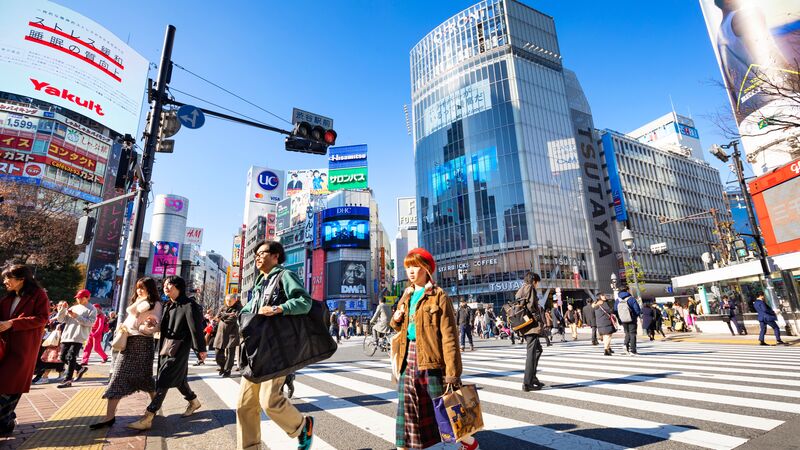
While Japan’s natural beauty can’t be denied, it’s the country’s vibrant, history-laden cities that steal travellers’ hearts the world over – think Kyoto with its ancient shrines and temples, Tokyo with its entertainment and neon-lit streets, and Hiroshima with its cherry blossoms and war memorials.
But Japan’s alluring cities go further than the popular, tourist-riddled ones. Take Nagoya for example. It’s actually Japan’s third biggest city but is often overlooked in favour of its bustling neighbours when in actual fact, it has a lot to offer in terms of attractions, culture, and cuisine.
From its collection of castles and religious monuments to the Osu district (the go-to place for second-hand goodies and delicious street food), Nagoya may just surprise you in the best way.
EXPERIENCE THIS DIVERSE COUNTRY ON OUR PREMIUM JAPAN TOUR
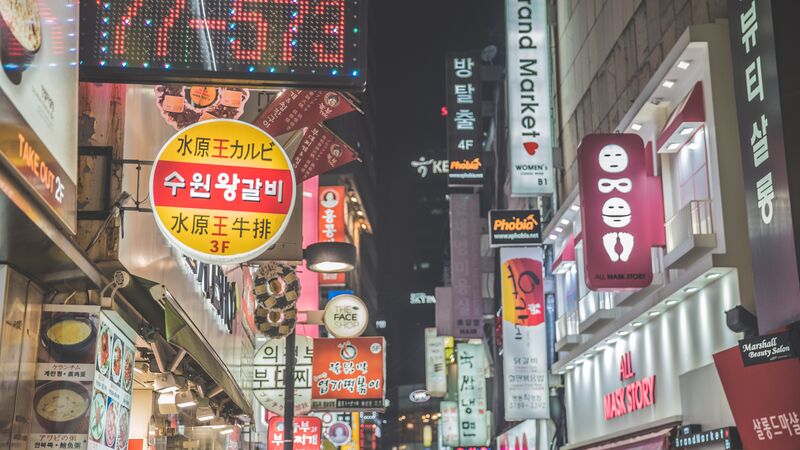
South Korea’s cities range from chaotic and concrete jungle-like to peaceful and history-filled with destinations such as Seoul and Gyeongju at the top of travellers’ lists – and with good reason.
Seoul is full of interesting things to see and do – Gwangjang market, Bongeunsa Temple, and Hanok Village are all must-visits – and even boasts plenty of breathtaking natural parks and gardens to wander around.
Gyeongju, on the other hand, is a slower-paced, ancient city that feels as if it belongs in a different time thanks to its UNESCO world heritage listed temples and historic monuments.
But these cities aren’t the only ones popular among tourists with several others such as Busan (a beachside retreat), Suwon (known for its impressive scenery), and Daegu (the economic hub of the country) all capturing hearts and taking up camera roll space.
The verdict
Japan and South Korea might be similarly located in Asia, but they couldn’t be more different, and to be honest, choosing between the two is pretty much impossible. Both countries offer incredible experiences thanks to their respective cultures, cuisines, and attractions – in fact, you can’t really go wrong with either of them. So, we’re calling this one a draw.
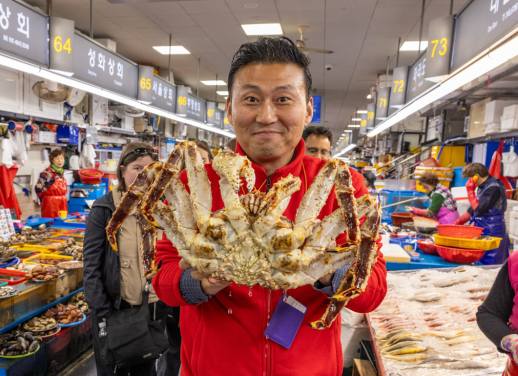
Kate Gazzard
When I was 11, my parents asked me whether I wanted a pool for the house or a trip to Fiji. I chose Fiji, and I've made travelling as much as I can a priority ever since.
You might also like
5 reasons to visit sri lanka in the..., why 2024 is the best year to see..., 6 unique experiences you can have in el..., from delhi to udaipur, here are the five..., cinque terre vs amalfi coast: which destination to..., california or florida which us state should you..., love at first bite: 10 famous sandwiches from..., galapagos or madagascar which unique destination should be..., central vs south america: how to plan your..., why road-tripping is the best way to see..., lessons learned on intrepid’s sabah adventure.
- Travel Planning Guide
A Travel Comparison for Vacations, Honeymoons, and Tours Japan vs. South Korea
Should you visit japan or south korea, which country is cheaper, south korea or japan.
Should I visit Japan or South Korea? This is a popular question for many travelers. By figuring out which country is more expensive, you'll understand where you'll get more bang for your buck. A week in South Korea can cost you about $770 (per person), while a week in Japan may cost you around $865. These differences become even more noticable if you plan to spend a longer time in the country. 10 days , two weeks , or even one month of travel to South Korea or Japan can really add to your travel budget.
Accommodation is often cheaper in South Korea compared to Japan ($50 vs. $59). Budget travelers usually stay in less expensive hostels and guest houses, while nicer hotels often appeal to families and upscale travelers.
Compare hotel prices here: Japan Hotel Prices and South Korea Hotel Prices .
Or, compare hostel and guesthouse prices between South Korea and Japan to find the cheapest accommodation here: South Korea hostels and Japan hostels .
When comparing food in Japan vs. South Korea they are not just different in cuisine, but also in price. Meal and restaurant costs in Japan ($30) are often cheaper than South Korea ($28).
- Japan Prices South Korea Prices
- Average Daily Cost Per person, per day Japan $ 124 South Korea $ 110
- Accommodation Hotel or hostel for one person Japan $ 59 South Korea $ 50
- Accommodation Typical double-occupancy room Japan $ 118 South Korea $ 100
- Local Transportation Taxis, local buses, subway, etc. Japan $ 18 South Korea $ 16
- Food Meals for one day Japan $ 30 South Korea $ 28
- Entertainment Entrance tickets, shows, etc. Japan $ 19 South Korea $ 26
- Alcohol Drinks for one day Japan $ 15 South Korea $ 12
- Water Bottled water for one day Japan $ 4.47 South Korea $ 2.17
How much are flights to Japan and South Korea?
The price of a plane ticket may help you decide which country you should visit.
Find a Hostel in Japan or South Korea
Hostels, guest houses, and locally owned B&B's are often the cheapest form of accommodation.
Related Articles for Japan
Related articles for south korea, when is the best time to visit japan and south korea.
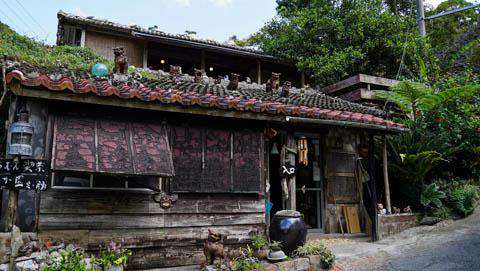
Why is Japan more expensive than South Korea?
What are the most expensive and cheapest cities and regions in japan and south korea.
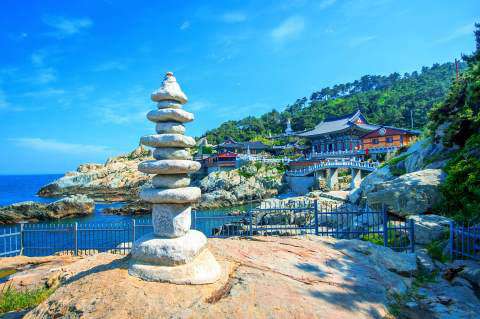
How you can save money when visiting Japan and South Korea?
Subscribe to our newsletter.
By signing up for our email newsletter, you will receive occasional updates from us with sales and discounts from major travel companies , plus tips and advice from experienced budget travelers!

More Country Comparisons
For south korea, pin this page.
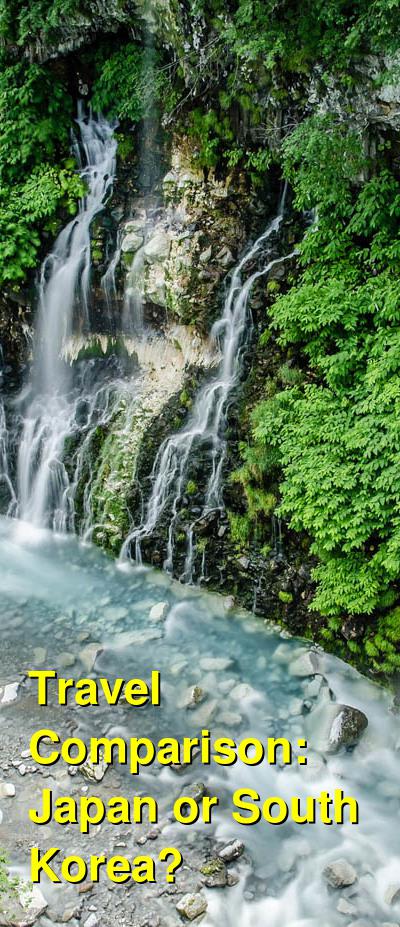
- Privacy / Terms of Use
- Activities, Day Trips, Things To Do, and Excursions

Travelling Without a Passport
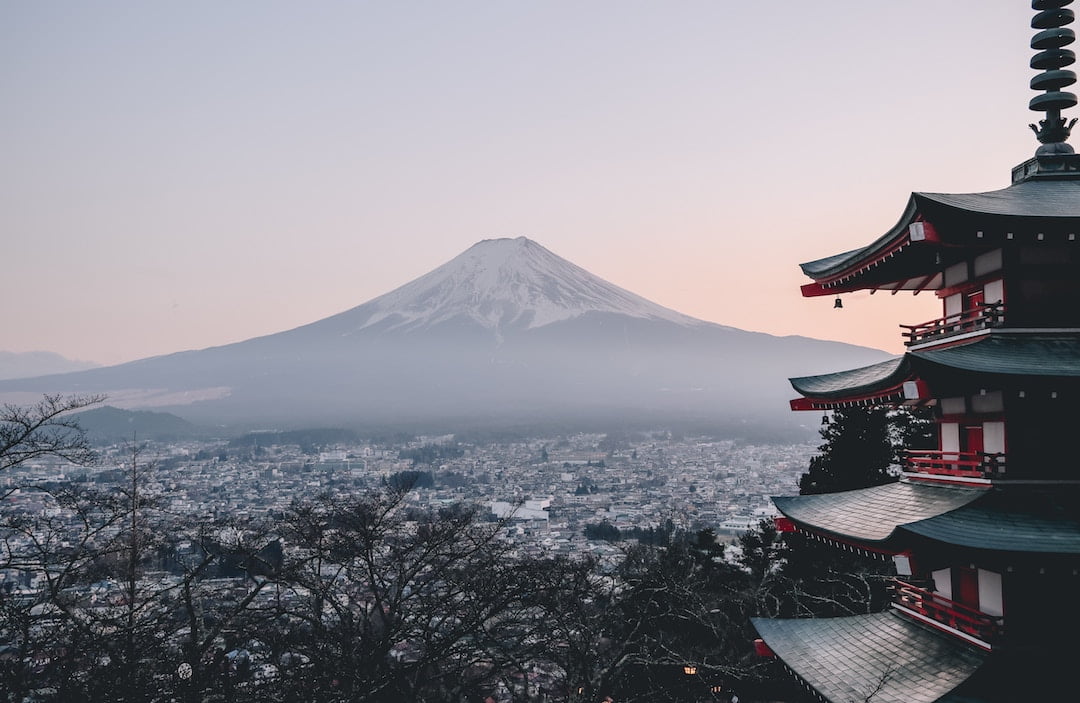
Japan Vs Korea: Where Should You Go On Tour Next?

It goes without saying that Japan and South Korea are two incredible destinations but deciding where you should visit on your next tour, however, is never an easy decision to make.
To save you losing sleep over choosing where to visit next, here are a few tips to help you with the decision: Japan or South Korea?
What type of traveller is best suited to Japan?
Japan is home to some of the best experiences in the world that are bound to suit the needs of all travellers. Thrill seekers can perch themselves on top of the Tokyo Tower to enjoy the sweeping views of the city from hundreds of meters in the air, or if you prefer to keep two feet on the ground, there are plenty of traditional Japanese spa experiences to be enjoyed. For the food lovers out there, of course, there are millions of new flavours and delicious cuisines that can be found across the country.
So basically, what we’re really trying to say is that anyone can visit Japan!
See Also: Where to Take the Best Photos of Japan: As Told by a Pro
Should you book a tour to Japan?
For travellers wanting an in-depth cultural experience, a multi-day tour to Japan is one of the best ways to go to experience the country. Not only will you get to learn all about Japan from your local guide, you can surround yourself with other like-minded travellers on your tour.
If you are determined to see Japan on your own, there’s always an option to join a self-guided tour so you can move at your own pace while exploring away from the beaten path.
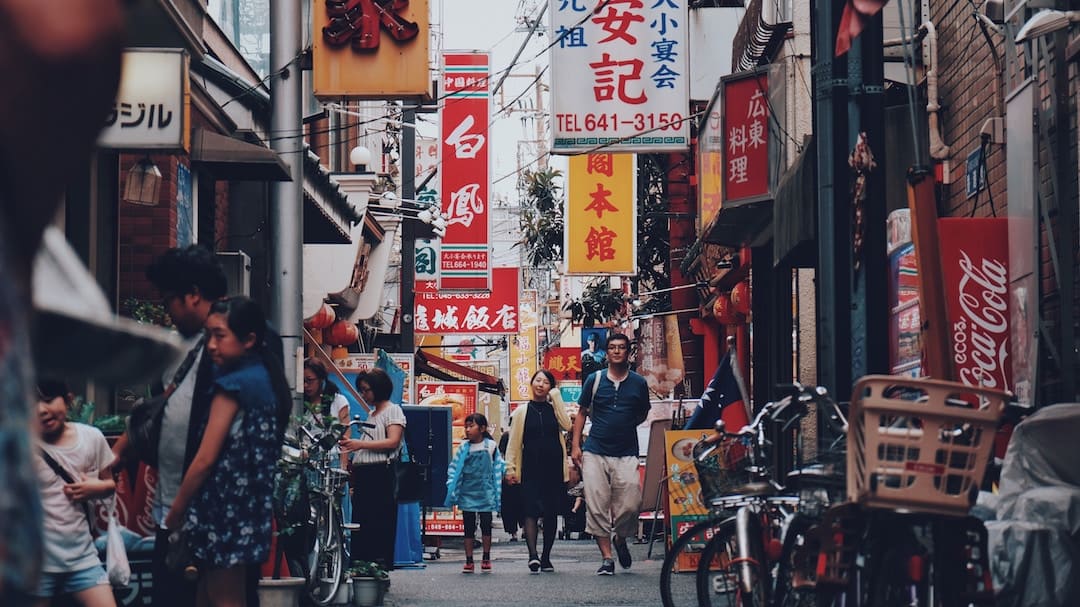
What is the best time to visit Japan?
Peak season for travel in Japan is dictated by the patterns of the colourful cherry blossom trees which causes a steep price hike during this time. The cherry blossom season is typically in full swing in early April, and between late-April to the start of May, the majority of the Japanese population take this week off work, and this is often referred to as ‘Golden Week’. If you are planning on travelling during this time, be wary that crowds at popular attractions will be much higher, and hotel rates will jump.
If you’re happy to settle for slightly cooler temperatures, late May to early June is a pleasant time to visit Japan as hotel accommodation prices will drop and crowds will lessen. Late-autumn through to early-spring is also an ideal time to visit Japan, although temperatures will be colder during this time.
- Spring – March, April and May
- Summer – June, July and August
- Autumn – September, October and November
- Winter – December, January and February
See Also: Hiking the Japanese Alps in Winter
What are the must-visit sites in Japan?
Mount fuji .
An undeniable icon of Japan is the beautiful and majestic Mount Fuji. Japan’s tallest peak can be seen up close with a drive up to the volcano’s 5th station, where travellers can enjoy the sweeping views of Japan’s countryside. Those seeking picturesque views of Fuji from afar can visit surrounding locations such as Lake Ashi.
Fushimi Inari Shrine

An endless stream of red torii gates, weaving and guiding travellers throughout a vibrant green mountain; the Fushimi Inari Shrine is a highlight that cannot be missed when visiting Kyoto. The shrine was founded in 711 AD and is comprised of over 10,000 torii gates. Although walking through the tunnels can be time-consuming, visitors are rewarded with panoramic views of Kyoto city.
Takeshita Street
Takeshita Street is a buzzing and colourful shopping lane of Tokyo, lined with unique stores, eateries and clothing boutiques. The spot is extremely popular due to its trendy stores which contain unique accessories that cannot be found elsewhere.
Sensoji Temple and Nakamise Shopping Arcade
Sensoji is Tokyo’s oldest temple, surrounded by charming and entertaining market strips. The temple was opened in 645 AD and still stands today as a much-loved tourist destination. Visitors can enter through the temples thunder gate and amble along the Nakamise Shopping Arcade through to the vibrant and grand structure.
Enoshima Bay
Enoshima is a small island, located approximately 1 hour south of Tokyo that can be accessed by car. Travellers can walk through the narrow shopping streets past traditional restaurants, through to the Enoshima Shrine. Trek through the shrine, respectfully participating in an array of Japanese customs before reaching the peak of the island for sweeping views of the surrounding area.
What are the must-try dishes in Japan?
- Sashimi: Thinly sliced raw meats, with the most popular being fish and seafood.
- Miso Soup: A soup made from fish stock, miso bean paste, green onion, and tofu. Commonly served alongside traditional Japanese meals.
- Tempura: Battered seafood and vegetables.
- Udon: Wheat flour noodles commonly served in soups.
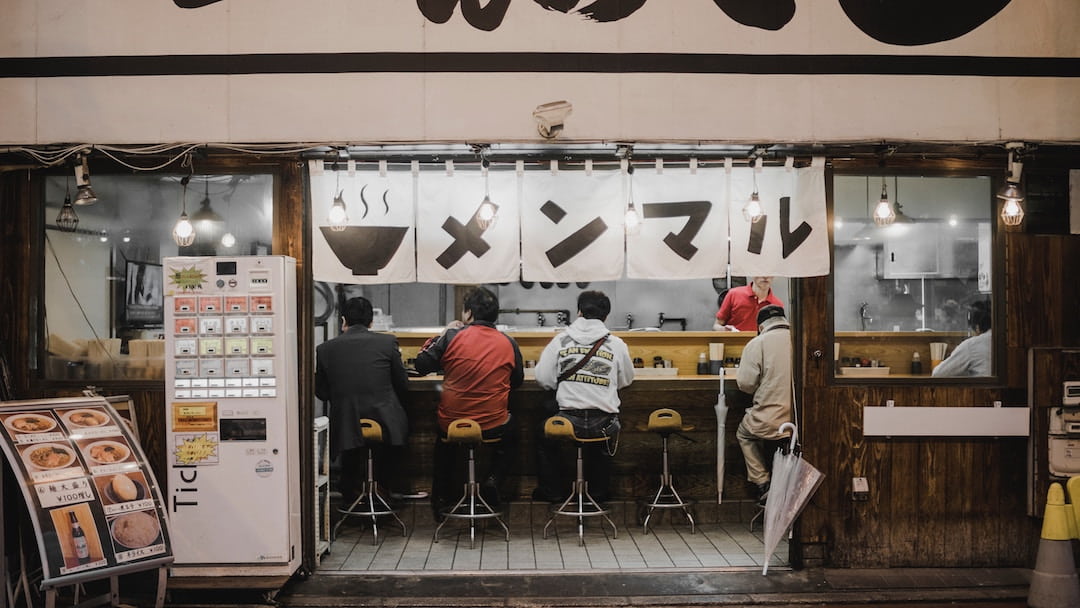
What are the best local experiences in Japan that I need to make time for?
Ride the shin kasen.
Japan’s extensive bullet train system is easily the most convenient and efficient method of getting between major cities. Reaching speeds of approximately 320 kilometers per hour, the trains are comfortable, spacious and popular among locals and travellers.
Wander among a bamboo forest
The opportunity to walk through a bamboo forest is an experience that simply cannot be overlooked in Japan. Walk beneath the towering tips of the bamboo, surrounded by greenery and fresh air.
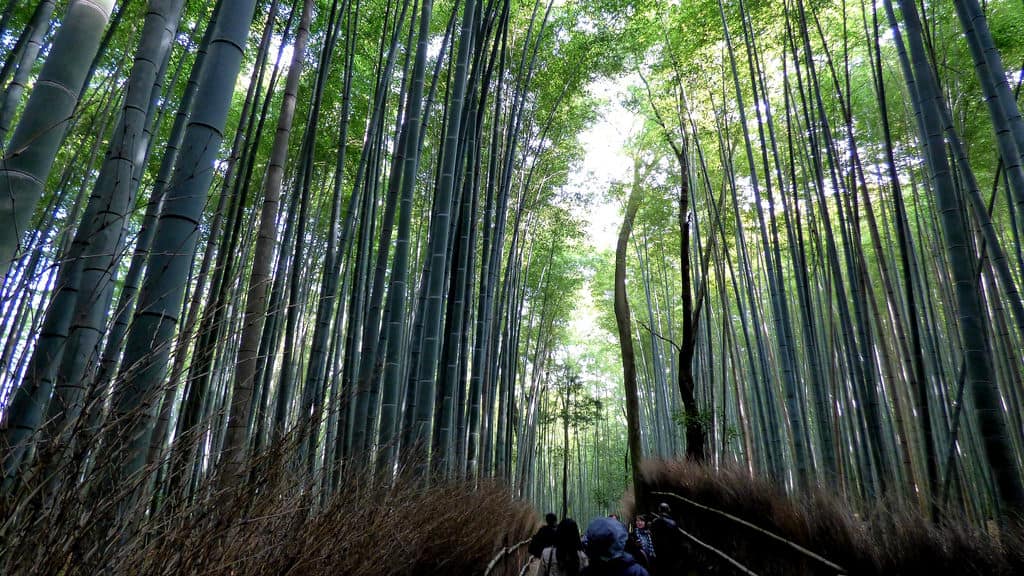
Feed the deer at Nara Park
One of Japan’s oldest parks, Nara Park is home to hundreds of roaming deer. Travellers come from all parts of the world to visit these creatures, with some even bow before receiving a treat.
Eat sushi in Tokyo
High upon many Japanese bucket lists is the opportunity to eat sushi while visiting, and Tokyo provides countless places to do just that. The city holds plenty of traditional sushi restaurants with a range of flavours to sample.
What do you need to know before visit Japan?
Jr rail pass.
The JR Rail pass allows travellers visiting Japan to ride the country’s bullet train system, for one fixed price, over a specific duration of time (7 or 14 days). This extremely cost-effective option is ideal for those wishing to venture between major cities. However, it should be noted that the pass must be purchased from home countries and can only be activated in Japan.
Learn a few phrases
While it is often easy to get your point across without the need for English, it may be worth learning a few phrases in case you find yourself in a situation where verbal communication is needed. Otherwise, online translators may be worthwhile. Here are a few Japanese phrases to help you with your journey.
See Also: Best Travel Podcasts If You’re Travelling to Japan
South Korea
What type of traveller is best suited to south korea.
Most travellers might be under the assumption that South Korea is a conservative place, however, in reality, this is not so much the case. South Korea is built for the curious traveller; someone who isn’t afraid to navigate the busy streets or to get lost and learn from locals who no doubt have a story to share. From the vibrant city of Seoul to the Seoraksan mountain in Gangwon and more, South Korea is filled with enough experiences to keep you entertained for a lifetime. Travellers with an open mind and an thirst for new experiences would be best suited for a trip to this exciting destination.
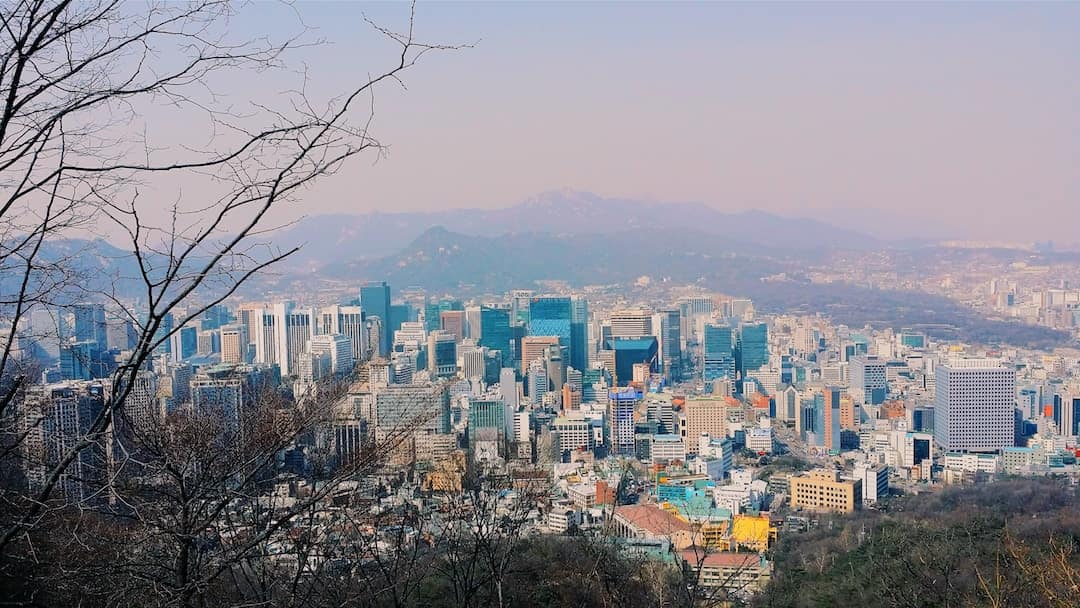
Should you book a tour to South Korea?
A multi-day tour of South Korea may be a good idea for those visiting for the first time. Aside from the obvious benefits of travelling with a local tour guide and a group of travel buddies, a tour can highlight the best secret places to visit that you might not find on your own.
What is the best time to visit South Korea?
The peak season for travel in South Korea is during the summer months of the year. During this time, crowds, hotel accommodation, and temperatures are at an all-time high.
The best time to visit South Korea is in spring and fall. Crowds are much lower than the peak season and weather is overall quite pleasant. Hotel rates are also much more reasonable.
- Spring: March, April and May
- Summer: June, July and August
- Autumn: September, October and November
- Winter: December, January and February
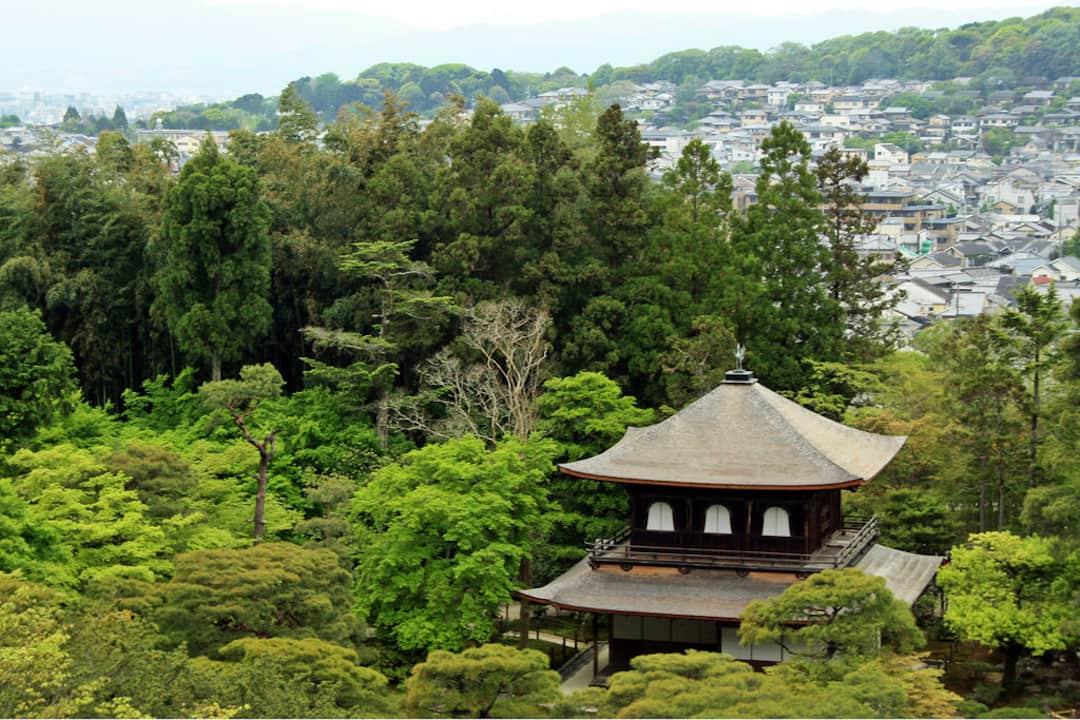
What are the must-visit sites in South Korea?
Myeong-dong.
The vibrant area contains big brands, department stores and charming eateries to enjoy. The streets are bustling with many tourists seeking delicious food and an energetic nightlife.
N Seoul Tower
Opening in 1980 and standing at an impressive 236m, N Seoul Tower is the perfect spot for those wanting to gain a unique perspective of the city. Some of the tower’s best features include a panoramic viewing platform, multiple restaurants, and a digital observatory.
Changdeokgung
Also located in the city of Seoul is Changdeokgung, a grand palace from the Joseon Dynasty. Within the grounds of the palace is a flourished, palace park, a rear garden and a residence for royal family members.
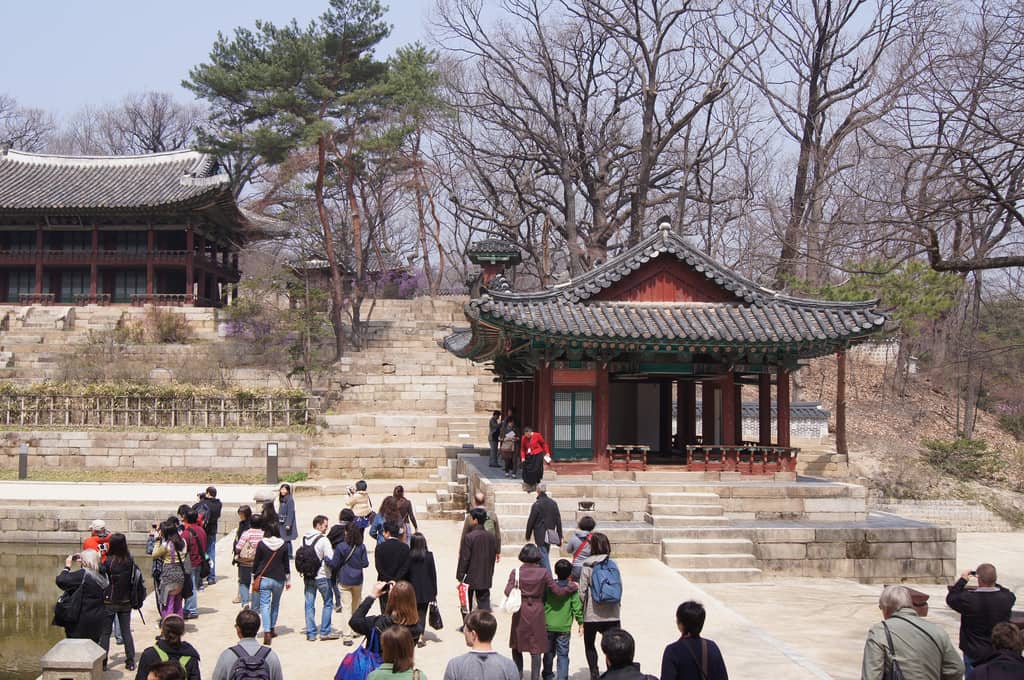
South Korea’s biggest theme park, Everland, is beloved by countless locals and tourists every year. The park houses thrilling rides, festivals throughout the year and a zoo. The park also features a wooden roller coaster, which is popular among guests.
See Also: Dress Codes in Asia: From Myanmar to Thailand and Beyond
What are the must-try dishes in South Korea?
- Korean spicy rice cakes (Ddeokbokki): Made of rice cakes, a fish cake, and sweet chilli sauce. The dish is popular in street markets.
- Pan fried chicken (Dakgalbi): A stir-fried, spicy, diced chicken dish served with sliced cabbage.
- Red bean shaved ice (Patbingsu): A popular dessert. The shaved ice is topped with sweet flavours, such as fruit syrup, and red bean paste.
- Stir-fried octopus (Nakji Bokkeum): Served with udon noodles and a spicy sauce.
What are the best local experiences in South Korea to make time for?
Try korean bbq.
For those looking to indulge in some traditional foods while visiting South Korea, Seoul is home to some of the best Korean BBQ restaurants. For those unsure about what Korean BBQ is, a grill is built into the table and guests purchase raw meats, commonly beef, pork and chicken to cook.
Noraebang (Karaoke)
A way of life for people of all ages in South Korea, Karaoke is a fun way for travellers to sing their hearts out in a unique, welcoming setting. It is very easy to come across a Noraebang when visiting, as they are scattered thoroughly around major cities.
Visit a temple
An excellent way to experience the remarkable history of South Korea first hand, the country is home to countless Buddhist temples to wander among and enjoy. Some of the must-see colourful temples include the Bongeunsa Temple and Haedong Yonggung Temple.
What do you need to know before visit South Korea?
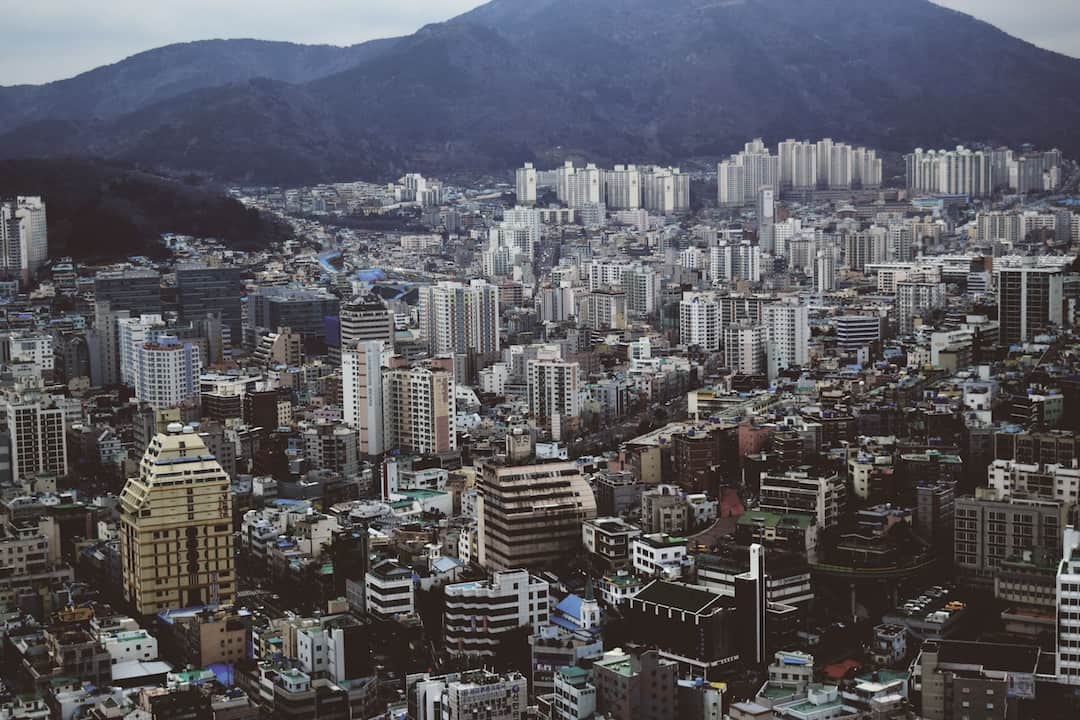
Transportation
Getting around the major cities of South Korea is very simple due to the country’s extensive and cost-effective public transport system. Purchasing a T-money card is a wise investment, as it can be topped up and used on public buses and subways. It also allows travellers to avoid purchasing a single ticket whenever the subway is used
See Also: 12 Safest Countries in Asia for 2018

Nicholas Hastie
Nicholas Hastie is a writer located in Brisbane, Australia. He enjoys documenting his journeys through travel and photography, hoping to inspire others to create unforgettable memories. He has travelled to 9 countries himself, Japan being his favourite. Follow his adventures on Instagram via @NicholasHastie and @WonderfulRoaming
Related Articles
- Food & Drink
Your Guide to Amsterdam’s Secret Bars and Speakeasies
One of the most popular cities in Europe, Amsterdam has no...
- Tips & Tricks
Best Destinations for People with Disabilities
The world and its wonders should be available to one and...
The Seven Most Scenic Train Rides in Europe
Forget planes, buses or automobiles: 2024 is the year of the...
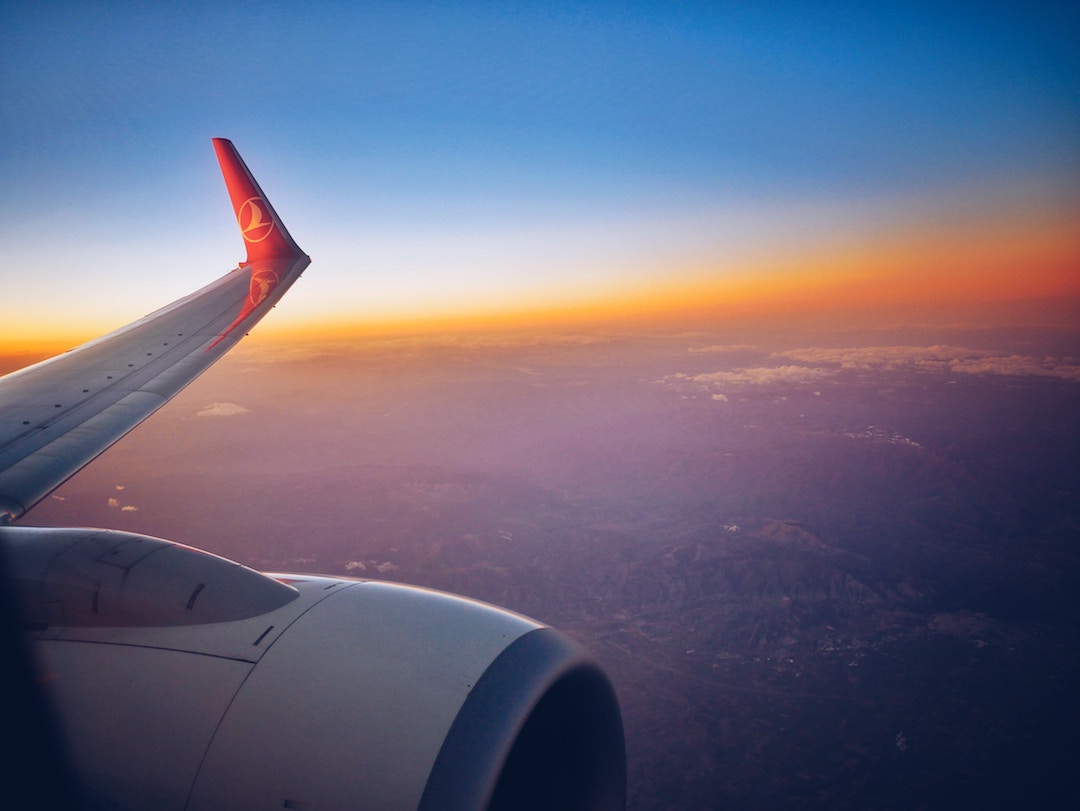
The 20 Most Pet-Friendly International Airlines Ranked
Get unlimited access to the world's best travel stories. subscribe now., privacy overview.
Korea or Japan – Which is Better to Travel

With the rise of the Hallyu wave and the sustained popularity of Japanese culture globally, it’s no wonder that you’re torn between choosing South Korea or Japan for your next travel destination.
Both countries offer unique experiences, brimming with rich history, diverse cuisines, stunning landscapes, and vibrant modern culture.
This article aims to provide a balanced overview of traveling to both these East Asian giants, assisting you in deciding which destination aligns best with your travel desires.
Apply Online
In this article…
A Tale of Two Capitals: Seoul vs. Tokyo
Seoul: a fusion of past and future.
Seoul, the capital of South Korea, is a metropolis where sleek skyscrapers coexist with centuries-old palaces and temples. The city’s districts are diverse in their offerings.
Gangnam, known globally thanks to Psy’s viral song, is a place of luxury boutiques and high-tech businesses. In contrast, Insadong boasts traditional tea houses, antique shops, and art galleries.
Seoul’s palaces, such as Gyeongbokgung and Changdeokgung, provide a glimpse into the country’s royal past. For a futuristic perspective, head to the Digital Media City or Lotte World Tower, the country’s tallest building.
Tokyo: Where Tradition Meets Innovation
Tokyo, Japan’s bustling capital, is equally captivating. It’s a city where you can experience Japan’s traditions and its futuristic vision side-by-side.
Historic temples and serene gardens lie minutes away from towering skyscrapers and neon-lit entertainment districts.
Visit Asakusa to experience old Tokyo, with its famous Senso-ji temple and Nakamise shopping street.
Contrast that with a visit to Shibuya or Shinjuku, bustling with life and bright lights after dark. Don’t forget to enjoy the view from the Tokyo Skytree, the tallest structure in Japan.
💡 Tip: Buy travel health insurance before your trip.
Check out popular travel insurance plans and choose one that suits you.
Most plans only cost less than $20 a day.
Cuisines: K-BBQ vs. Sushi
Savory delights of korea.
Korean cuisine is a paradise for food lovers, with dishes that are diverse, flavorful, and healthy.
Barbecue, or gogi-gui, is a must-try, with places serving everything from marinated beef (bulgogi) to pork belly (samgyeopsal).
Equally popular is bibimbap, a bowl of warm rice topped with sautéed and seasoned vegetables, chili pepper paste, soy sauce, and a raw or fried egg.
Don’t forget to try kimchi, the spicy fermented cabbage that’s a staple of every Korean meal. For the adventurous, there’s even a live octopus dish called sannakji!
Savoring Japan’s Culinary Artistry
Japanese cuisine, known as washoku, is praised for its balance, aesthetic, and depth of umami flavors. The most internationally recognized dish, sushi, is an art in itself.
Quality sushi restaurants, like Sukiyabashi Jiro in Tokyo, serve sushi that melts in your mouth.
Japan’s culinary delights go beyond sushi, though.
Ramen shops dot city streets, serving steaming bowls of noodles in various broths. Don’t miss out on tempura, tonkatsu (breaded pork cutlet), and street food like takoyaki (octopus balls) and okonomiyaki (savory pancakes).
Nature & Scenery: Hanami vs. Jeju
Discovering korea’s natural wonders.
South Korea is home to stunning natural landscapes.
Its star attraction is Jeju Island, often referred to as the “Hawaii of Korea.” Jeju is known for its volcanic landscape, complete with the stunning Hallasan mountain, lava tubes, and beautiful beaches.
Mainland Korea is equally captivating, from the cherry blossom-lined streets of Jinhae during spring to the vibrant autumn colors in Seoraksan National Park.
For a more tranquil experience, visit the picturesque Suncheon Bay Wetland Reserve.
Japan’s Seasonal Splendors
Japan’s natural beauty is world-renowned, offering an enchanting spectacle each season.
In spring, the country is awash with the soft pink of cherry blossoms (sakura) for hanami (flower viewing) season. Autumn turns the landscapes into vibrant hues of red, orange, and yellow, providing breathtaking sights in places like Nikko and Kyoto.
But it’s not just about the seasons.
The iconic Mt. Fuji, the tranquil bamboo groves of Arashiyama, and the scenic coasts of Hokkaido showcase Japan’s varied landscapes.
The southern island of Okinawa offers tropical beaches and great diving spots, providing a contrasting experience to mainland Japan.
Culture & History: K-Pop vs. Geisha
Korea’s vibrant culture and rich history.
South Korea may be known for K-pop and dramas, but its cultural canvas is far richer. Traditional arts like calligraphy, silk weaving, and pottery are still alive.
History buffs will love visiting the ancient Silla capital, Gyeongju, often referred to as “the museum without walls.”
At the same time, modern culture is equally enticing. Seoul’s Hongdae district is known for its underground music scene, art markets, and street performances.
Visit during the annual Busan International Film Festival, and you may catch a glimpse of Hallyu stars!
Japan’s Timeless Traditions and Innovative Spirit
Japan skillfully balances respect for traditions with a constant drive for innovation.
Traditional arts such as tea ceremony, ikebana (flower arranging), and kabuki theatre coexist with modern manga, anime, and robotics.
The historical districts of Kyoto are the best places to catch a glimpse of geisha culture.
Meanwhile, Akihabara in Tokyo represents the epitome of Japan’s pop culture and tech advancements. Attending a sumo match or visiting during a matsuri (festival) allows you to experience traditional Japanese culture firsthand.
Final Thoughts: Korea or Japan?
The decision between South Korea and Japan ultimately depends on your personal preferences. Both countries offer unique and enchanting experiences, making them worthy additions to any traveler’s bucket list. Here’s a quick summary:
- For modern culture and lively nightlife, both Seoul and Tokyo shine.
- For historical attractions, both countries offer remarkable insights into their rich pasts, with Kyoto being a standout in Japan, and Gyeongju in Korea.
- For natural beauty, both countries have their distinct offerings, from Jeju Island in Korea to Mt. Fuji in Japan.
- For foodies, it’s a tough call between Korean BBQ and Japanese sushi. Why not try both?
Remember, there’s no rule stating you can only visit one of these fascinating countries. Who knows? You might just find yourself planning to visit the other soon after your first trip! Safe travels!
- What Documents Do I Need To Travel to Japan
- Should I Exchange Money Before I Travel to Japan
- Do I Need Travel Insurance for Japan
- Best Travel Insurance for Japan: Complete Guide
- Japan Travel Restrictions – Everything to Know
Apply Online easily.
Leave a reply cancel reply.
Your email address will not be published. Required fields are marked *
Save my name, email, and website in this browser for the next time I comment.

3 Weeks In South Korea and Japan Itinerary
DISCLAIMER: This post might have links to travel services and products that we enjoy. We might make a commission from it at no extra cost to you.
For various reasons, Japan and South Korea are on almost everyone’s bucket list. Aside from the beautiful scenery and a variety of healthy foods, people are also fascinated with their culture, anime, manga, K-dramas, K-pop, and of course, their history.
One of the most famous beef varieties, which is Kobe beef, can be found in Japan. You can also see the world’s shortest escalator here, only five steps, and the tallest mountain.
South Korea, on the other hand, has the fastest internet speed in the world. They have over 200 kimchi varieties, and their capital, Seoul, is where The Simpsons and South Park were processed. If it’s your first time in South Korea, these apps for Korea will help you get around and plan your upcoming trip.
You might be wondering why we’ve mentioned all of these facts. Well, it’s because this article will focus on 3 weeks in South Korea and Japan. That’s right, why travel to these countries on separate occasions when you could spend 3 weeks visiting both?
I compiled the most famous places to visit and things to do during your 3-week stay. How to spend 10 days in each country.
RECOMMENDED TRIPS: 3 weeks in the Philippines or 3 weeks in Cambodia and Vietnam
TIPS BEFORE GOING TO SOUTH KOREA AND JAPAN

We know you’re already excited and want to proceed with the itinerary. But first, there are some essential things that you need to know and be prepared first before you book anything.
When is the best time to go to South Korea and Japan
If you are fond of skiing and seeing the snow, the perfect time to go to these countries is during their winter season, which is from December to February in Japan and late December to mid-March in South Korea .
For those who want to witness the famous cherry blossoms personally, go during the spring season , which is from March to May, in both countries. Japan’s summer season is from June to mid-September and July to August in South Korea.
If you don’t want to go during the peak seasons, the best time to visit South Korea is from April to May and September to October because those are the months when the tourist numbers are low.
While in Japan’s off-peak season would be from late autumn through March . For those who are planning to avoid typhoon season, try not to book a flight to Japan from July to October and mid-June through September in South Korea.
Are 3 weeks enough for South Korea and Japan
If it’s your first time visiting these great countries, planning to spend 10 days on each will give you plenty of time to see all the top sites. Since both countries are small with reliable public transportation and short flights between them, you can really make the most of your time.
Remember to book your flight arriving in the first country you wish to visit first, then the flight home from the other country. This way, you don’t need to waste time flying back to the previous country.
Average cost of 20 days in South Korea and Japan
At $ 1,800, you can explore Japan and South Korea in 20 days. If you want to save a bit more, you can stay in a dorm room instead of a private one. On that low budget, you can expect to spend around $1,200 , especially if you also eat street food than dining at restaurants. If you want to splurge, $3,000 will allow you to stay in luxury hotels and try fancier restaurants.
These costs are per person, if you’re travelling with another person, you can bring the accommodation cost down if you don’t mind sharing a room.
Getting around
There are tons of ways to get around South Korea. There are trains, buses, cabs, cars, subways, and aeroplanes . If you’re planning to ride the bus, the most convenient way to do so is to buy a T-money transit card beforehand to avoid any hassle.
If the place you’re planning to visit is really far from where you currently are, then the fastest option would be to ride a plane, but it would be more expensive compared to the other modes of transportation.
Railways are the most common means to get around in Japan . They have two train types: the bullet train and the night train. Aside from that, they have taxis, buses, ferries, and offer car and bicycle rentals.
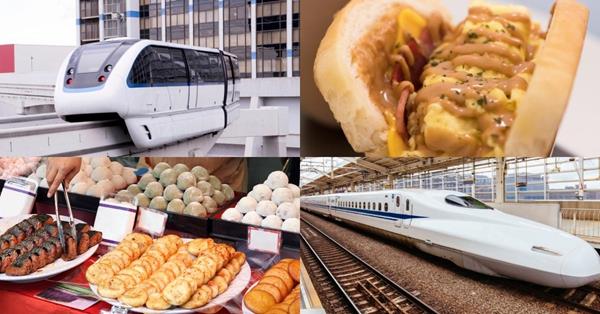
Visa/Covid policy
South Korea and Japan have quite different visa policies. Travellers with passports from North America (including Mexico), Argentina, Chile, Uruguay, Suriname, French Guinea, most of European, some of Southeast Asia, most of Oceania, and its neighbour South Korea, can enjoy visa-free travel to Japan for 15-180 days depending on the passport you have. Still, you must get the K-ETA which is only about $9.
For people who wish to visit South Korea, passport holders of most of America (excluding Bolivia and Cuba), almost all of Europe, some of Central Asia, some of North and South Africa, some of Southeast Asia and East Asia, and most of Oceania can enter the country as a tourist and stay for 30-180 days.
Unfortunately, as of the first quarter of 2022, Japan and South Korea have yet to open their borders to tourists. Bookmark this Japanese government site and South Korean government site to keep updated.
Basic travel tips
Here is a list of sites and travel services I use when travelling anywhere in the world. Many of these sites offer flexible cancellations and various choices depending on your budget and travel style. If planning to visit during peak season, make sure to book at least 6 months in advance especially for accommodations.
HOW TO TRAVEL BETWEEN JAPAN AND SOUTH KOREA
The most common and fastest way from Japan to South Korea (and vice versa) is to take a non-stop 2.5-hour flight . If you take on a connection, the travel time extends up to 6 hours.
There used to be a ferry service between these countries which was relatively uncommon. The travel time takes about 21 hours, and the ports are between Busan, South Korea to Hakata/Fukuoka, Japan.
You can choose from two companies: Kampu Ferries and Camellia Line Ferries. However, in 2019, Kampu Ferries limited their services to Japanese nationals. You can read more information here .
PACKAGE TOURS
If you prefer to sit back and relax, you can book a package tour where the tour operator will arrange everything for you, including transportation, hotels, food, tours, porters, and guides. Check out this 18-day trip for Japan and South Korea.
MUST-SEE PLACES IN SOUTH KOREA AND JAPAN (pinned map)
Click the icon on the top-right to enlarge the map. Credit: Map Data: Google
3 WEEKS IN SOUTH KOREA AND JAPAN
Due to the size of both countries and the distance from each other, you can easily cover Japan and South Korea in one go. You can spend about 10 days in each place or move things around if you want to spend more or less time in the other.
Although this doesn’t mean you can’t pay for the entire 3 weeks in a single country, you can very well, which will let you see many more places and travel slower.
Day-to-day overview:
- Day 1 : Arrive in Seoul, South Korea – get transferred from the airport or take the train/bus, get a local sim card if needed and train/bus passes
- Day 2 to 4 : Go sightseeing around Seoul and the surrounding areas
- Day 4: Get to Busan from Seoul by car or train or bus
- Day 4 to 6 : Explore Busan
- Day 7 : Travel from Busan to Jeju Island by plane
- Day 7 to 9 : Explore Jeju Island with East bus tour
- Day 10 : Fly to Tokyo from Jeju Island, get pocket wifi for Japan or local sim card with unlimited data , book an airport transfer to your hotel
- Day 10 to 14 : Go sightseeing around Tokyo , nearby areas such as Nagoya, Kyoto, and Osaka
- Day 15 : Get to Hokkaido by plane or train
- Day 15 to 17 : Discover Hokkaido
- Day 18 : Travel to Hiroshima from Hokkaido
- Day 18 to 20 : Discover Hiroshima
- Day 21 : Get to Tokyo to catch your flight home
10 days in South Korea
Various K-pop acts are now well-known worldwide, starting when Psy’s song Gangnam Style propelled to stardom. Very recently, the movie Parasite gained numerous prestigious awards, and the web series, most recently, Squid Games, paved the way for gaining worldwide recognition.
Not only that, even some of their variety shows, including Running Man, have been famous outside of South Korea for years. Their entertainment industry drew people to be interested in their culture as well. So much so that more people started learning Hangul.
Of course, their tourism industry skyrocketed along with these positive changes. That’s why we created a South Korea itinerary for 10 days where you’ll get to stay in Seoul, Busan, and Jeju.
Seoul for 5 days
Eight mountains and the Han River border Seoul, so it’s perfect for those who are fond of hiking, go for a stroll, or picnicking by the river. Here are some other places to visit and things to do in South Korea’s capital:
- Namsan Tower
- Seoul city tour
- Bukchon Hanok Traditional Village
- Lotte World Tower – get your e-ticket to avoid any hassle
- Nanta – enjoy a day trip to Nanta or Korean Folk Village
- Demilitarized Zone – you can book a half or full-day trip
- Seoul Museum of Art
- Join a cooking class and market tour
- Attend Yeouido Spring Flower Festival – join a cherry blossom tour
- Experience South Korean nightlife – book a pub crawl
- Experience Ultra Korea, a huge music festival that happens during the summer
- Ghost stories walking tour
Accommodations in Seoul:
- Affordable: 24 Guesthouse or Good Stay
- Mid-range: Standford Hotel or Hotel Skypark
- Luxury: Lotte Hotel or Four Seasons
Busan for 3 days
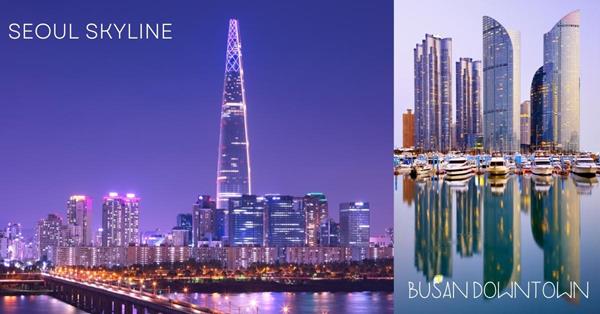
The easiest way to reach Busan from Seoul is by KTX high-speed train, which takes under three hours. You can also take the slow train, which is more affordable than the KTX. It would take you anywhere between 2.5 hours to 5.5 hours, depending on the train type that you will ride.
The costs also vary. Riding a bus would take you four hours to reach your destination. You can also ride the plane, which is the fastest and most expensive option.
One of the reasons why Busan is well-known is because they have the largest traditional market and seafood market in South Korea. There is also a great variety of street foods which are perfect for foodies, their speciality being eomuk or fish cakes or tasty Korean instant noodles , which are available in grocery stores and even food stalls. With that being said, here are the places to visit/ things to do in Busan:
- Attend Lantern Festival, which they celebrate during the spring season (May)
- Book a full-day city tour
- Haeundae beach
- Gwangbokdong food street or join a traditional food cooking class
- Samjin Eomuk main storer and museum
- Enjoy an afternoon cruise
- Busan Tower & Yongdusan Park
- Day trip to Oedo Island or Tongyeong
- Visit the cool Jusangjeollidae
Accommodations in Busan :
- Affordable: No.25 Hotel or Seri Inn Guesthouse
- Mid-range: Residence Mumum Hotel or Toyoko Inn
- Luxury: The Westin Josun or Arban Hotel
If this list is not enough for you or you don’t find suitable accommodation, check this detailed article about where to stay in Busan .

Jeju for 2 days
There are six ways to reach Jeju from Busan, one of which is by ferry. The travel time would last for 11 hours. You can also ride the train or bus and then ride a plane for about a little over 3 hours. Car rentals are also an option, then riding the ferry, which would take more than 6 hours.
The most recommended option would be to take the subway and ride the plane afterwards, which would take around 2 hours and 40 minutes.
Aside from otherworldly natural scenery, Jeju is also famous because of its unusual theme parks and commercial attractions. Here are some of the places to visit in Jeju:
- Osulloc Tea Museum
- Attend the Jeongwol Daeborum Fire Festival, which usually happens during the winter season (February or March)
- Mount Hallasan – go for a hike with local lunch
- Take a Submarine tour
- Manjangul Cave – you can book a transportation to and from
- Yeomiji Botanical Garden
- Book an organised full-day tour for Jeju Island
- Explore the famous Museum of Sex and Health
Accommodations in Jeju City :
- Affordable: You&I Guest House or Bricks Stay
- Mid-range: Ganderak Guesthouse or Ventimo Hotel & Residences
- Luxury: LOTTE Hotel or Grand Hyatt Hotel
10 days in Japan
Aside from anime and mangas, Japan is well-known for the plethora of snacks and beverages that can be found in its convenience stores and vending machines. They have a wide variety of fresh foods and snacks that you seriously won’t run out of options.
Japan also have a vast expanse of beautiful natural scenery, as well as places and trinkets with a kawaii aesthetic. Japan has such visual diversity that you’ll indeed find your trip to this country unforgettable. But most importantly, tourists love Japanese cultural etiquette.
The places are clean, the trains are always punctual, and most people are courteous and polite. If you are a history buff, there’s also something waiting for you. Hopefully, we’ve piqued your interest in having a vacation in this country and for that, here’s the Japan itinerary for 10 days.
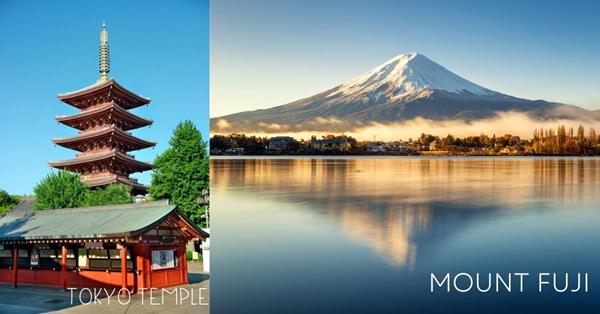
Tokyo for 5 days
Tokyo is a bustling yet organised city. Public transport is often on time, so you don’t have to worry about being late. You can get around the city pretty easily or get a hop on-hop off bus ticket or a Tokyo metro pass . There are many things to do and places to see in Tokyo, but some are only seasonal. Let’s first talk about places you can visit and things you can do in Tokyo all year round:
- Tokyo Skytree observation deck – get your ticket
- Visit Kawaguchi Lake with a Mount Fuji view – book a tour with lunch
- Digital Arts Museum – great for all ages, but for people with autism (especially with light sensitivity, this might be overwhelming) – buy your entrance ticket in advance
- Imperial Palace – join a walking tour with a local guide
- Visit Tsukiji Market (fish market) and learn how to roll a sushi – book a tour
- Enjoy a traditional Yakatube dinner on a cruise
- Learn about rame through this ramen tasting tour
- Join a half-day cycling and cruise tour
Accommodations in Tokyo :
- Affordable: Hotel Owl or bnb Hostel
- Mid-range: Hotel GrandBach or Shiomi Prince Hotel
- Luxury: The Capitol Hotel or The Gate Hotel
Here are some of the places you could visit during the winter:
- Skating rink at Toshimaen amusement park
- Tokyo German Village
Some of the things you could do during summer:
- Attend a fireworks summer event
- Try out kakigori , one of their summer foods
Things to do or places to visit in spring:
- Attend a Japanese Spring Festival
- Try out sakura-flavoured foods and delicacies
- Walk in parks to see cherry blossoms up close
Hokkaido for 3 days
Hokkaido has been included as one of the top destinations for travellers in Japan. They have various natural scenery, coastline villages, historical sights, and the freshest seafood. You could ride a plane, a bullet train, or a ferry or rent a car to reach Hokkaido if you come from Tokyo.
Here are some of the places to visit and things to do in Hokkaido, or you can book a customised city tour :
- Attend Sapporo Snow Festival during the winter
- Take a stroll at Matsumae Park during the spring season
- Daisetsuzan Mountain Range
- Noboribetsu Onsen
Accommodations in Hokkaido :
- Affordable: Tune Hostel or Tmark City Hotel
- Mid-range: Hotel Amanek or Toyoko Inn
- Luxury: Hotel Nets or Tenza Hotel and Sky Spa
Hiroshima for 2 days
Hiroshima is known to be the first city hit with an atomic bomb, but that’s not what the city is only known for. Hiroshima is famous among museum lovers because of the abundance of museums there. They also have tons of parks, historical wonders, and festivities all year round.
To reach Hiroshima from Hokkaido, the fastest and most recommended mode of transportation would be to ride a bus, then a plane, which would last for four hours. Some other options include taking a train, driving a car, taking a car ferry, or taking the bus. The travel times for these could last between 13 hours to 32 hours.
Here are some of the things to do and places to visit in Hiroshima once you’ve reached your destination:
- The Island Shrine of Itsukushima
- Hiroshima Castle – explore Hiroshima on a bicycle
- Shukkei-en Garden
- Have fun shooting arrows traditionally
- Hiroshima Museum of Art
- Learn about Japanese culture – book this cultural tour in a Kimono
- Hiroshima Peace Memorial Park
- Explore the city through this cycling tour
- Hiroshima Atomic Bomb Dome
- Explore Hiroshima and Miyajima in a day – book a guided tour
Accommodations in Hiroshima :
- Affordable: Capsule Hotel Cube or Santiago Guesthouse
- Mid-range: Daiwa Roynet Hotel or Candeo Hotels
- Luxury: Hilton Hotel or Sheraton Grand Hotel
SUMMARY OF 3 WEEKS IN SOUTH KOREA AND JAPAN
Combining all the days spent in these places, you’ll get to stay for 3 weeks in South Korea and Japan. With that being said, here are some other additional know-how during your travels:
When in Seoul, you could get an integrated palace ticket which will grant you entry to all five palaces and costs way less than buying separate tickets for each. You could also look on different sites for discount passes, and if you’re planning on doing physical activities, you might want to consider getting travel insurance.
You can also study some of the most common phrases used in your destination countries, purchase a travel dictionary, or download an app to make conversations more seamless. That’s about it, we hope that you’ll have a great time visiting these countries that have so much to offer and that you found this itinerary of 3 weeks in South Korea and Japan helpful in creating your own itinerary .
SAVE THIS TRAVEL ITINERARY ON YOUR PINTEREST:
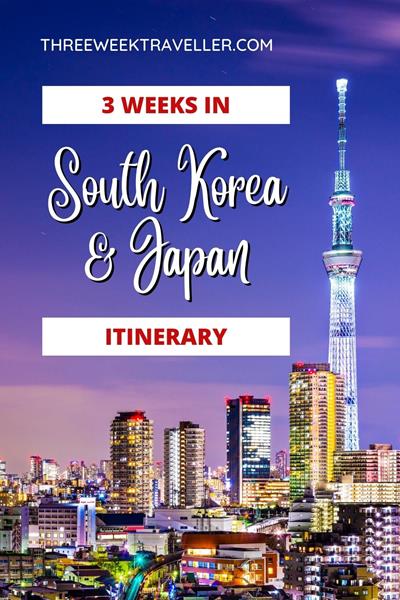

- Best Hikes In The World
- Appalachian Trail
- European Hikes
- Nepal Hikes
- Patagonia Hikes
- See All Hikes
- Mount Kenya
- Mount Kilimanjaro
- Mount Toubkal
- See All Mountains
- South Africa
- New Zealand
- Switzerland
- United Kingdom
- Packing Lists
South Korea vs Japan: Which Country Is Best For Adventure Travel?
Both South Korea and Japan are filled with adventure opportunities alongside the rich cultural experiences they offer. Deciding which country is best ultimately depends on what adventure experiences you’re looking for.
In this guide, we’ll explore some of the main adventure travel activities you can do in each country to see where you should travel next.
Wherever you go, make sure that you soak up the unique culture as well!
Joining small group or private tours to Japan is a great idea if you want to see the absolute best this destination has to offer. The same can be said of South Korea tours - having the logistics handled and a professional guide to show you around allows you to experience the country like a local.
If you love mountains, hiking, and outdoor adventure in general, then you’ll have a great time in either country. Just make sure that you plan your trip carefully to visit at the right season for the activities you want to do.
South Korea: Hiking Options
Jirisan national park: hiking for all levels.
Jirisan National Park is also a hiker's paradise with trails for everyone. The Baemsagol Valley Trail is perfect if you're up for a challenge, winding through lush greenery and offering a real sense of accomplishment.
For a more relaxed hike, the Nogodan Trail provides breathtaking views without the intense climb. It's a great choice for families or beginners.
This national park is covered with lush green mountains and epic views wherever you look. It’s the perfect escape into nature while you’re in South Korea.
Seoraksan National Park: Epic Hiking in Nature's Beauty
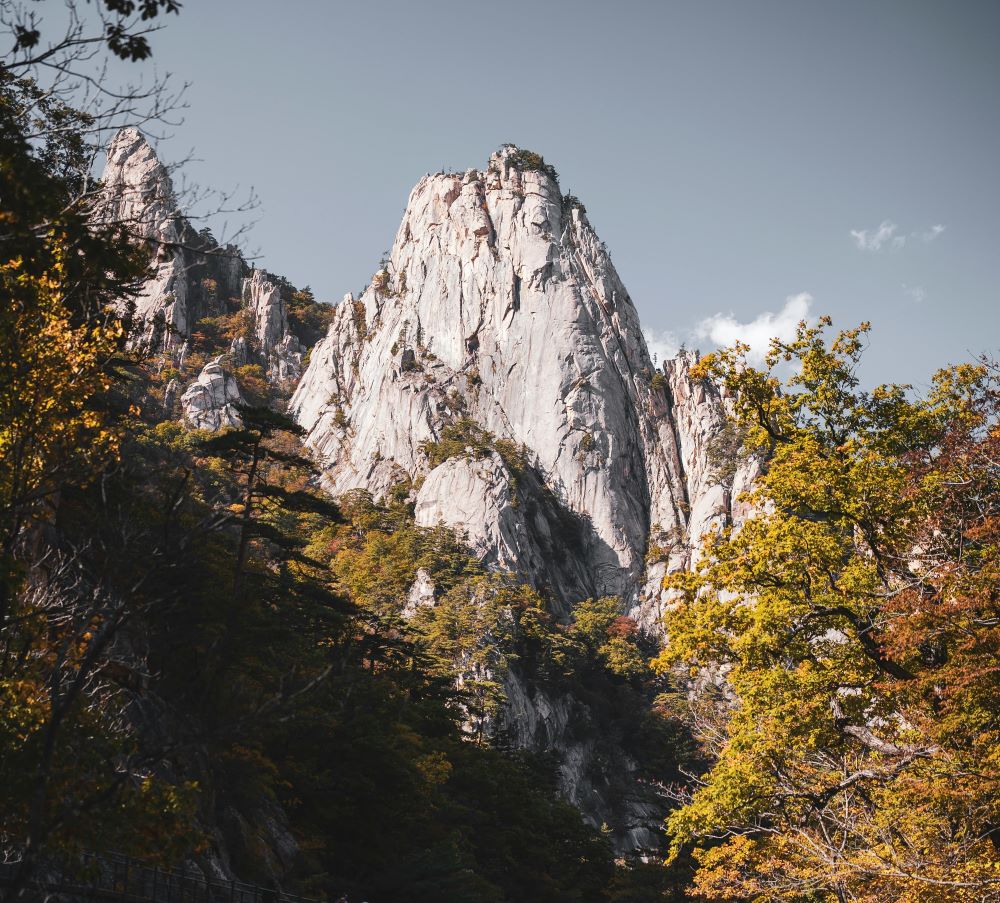
Seoraksan National Park is a dream for hikers. This park is filled with beautiful hiking trails, which are suitable for hikers of all experience levels.
The Dinosaur Ridge Course is one of the most popular trails. It’s like a rollercoaster for your legs, with steep climbs and rocky paths that keep your heart pumping. But the reward at the top is unbeatable panoramic views and a thrilling adventure.
For those who prefer a more laid-back hike, there are easier trails like the Ulsanbawi Rock Course, offering stunning views of the park's unique rock formations.
Hallasan Mountain on Jeju Island: South Korea’s Tallest Peak
Hallasan Mountain is the king of peaks in South Korea. If you’re going to go hiking in this country, then this is the peak you’ll want to conquer.
The Eorimok Trail is a favourite among adventurers, taking you through diverse landscapes to the summit. The views from the top are mind-blowing.
If you're into volcanic landscapes, the Manjanggul Cave nearby is a fascinating exploration. A day in Jeju can easily mix hiking and visiting unique natural wonders - a top recommendation if you’re visiting this part of South Korea.
Japan: Hiking Options
Mount fuji: japan's iconic peak.
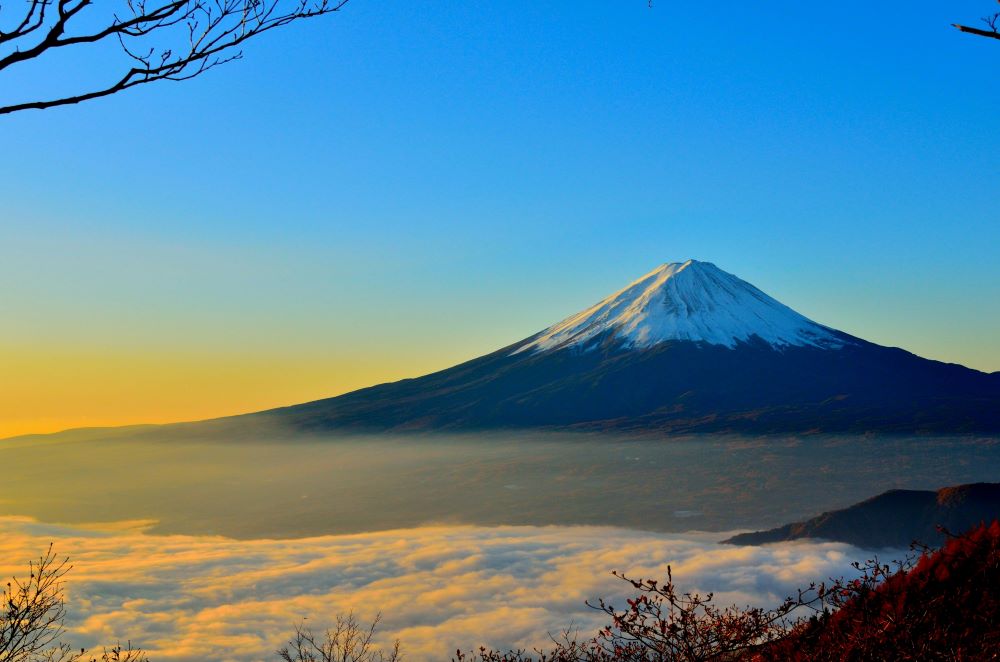
Mount Fuji is the star of the show when it comes to hiking in Japan. This is Japan’s tallest peak and the country’s greatest natural icon; it’s often considered one of the best hikes in Asia .
There are a couple of different routes available if you want to climb Mount Fuji . This includes variations for hikers of all levels. The Yoshida Trail is a classic route, offering a challenging yet rewarding climb. The sunrise from the summit is legendary and attracts adventurers from around the world.
For those seeking a less crowded experience, the Subashiri Trail provides a more serene journey through forests and volcanic landscapes. Both trails promise stunning views and a sense of accomplishment.
Being one of the most beautiful mountains in the world , Mount Fuji is an incredibly rewarding hiking experience. From the base to the summit, hikers are rewarded with some of Japan's most amazing views and scenery.
The Japanese Alps: A Haven for Hikers
If you’re going to hike in Japan , then you’ll also want to experience the Japanese Alps.
The Japan Alps, divided into Northern, Central, and Southern ranges, offer diverse hiking experiences. The Kamikochi Valley in the Northern Alps is a picturesque destination with easy trails suitable for beginners. The Tateyama Kurobe Alpine Route in the Northern Alps combines hiking with breathtaking scenic views.
The Kiso Valley in the Central Alps boasts the Nakasendo Trail, connecting historic post towns. It's a perfect blend of cultural exploration and moderate hiking. The Southern Alps, with the Senjojiki Cirque, present a challenging yet mesmerizing alpine environment.
Hikers can spend weeks here exploring the many different trails on offer. The scenery also changes dramatically with each season, with hiking being at its best during the Spring when the cherry blossoms are out.
Yakushima: Mystical Forests and Coastal Wonders
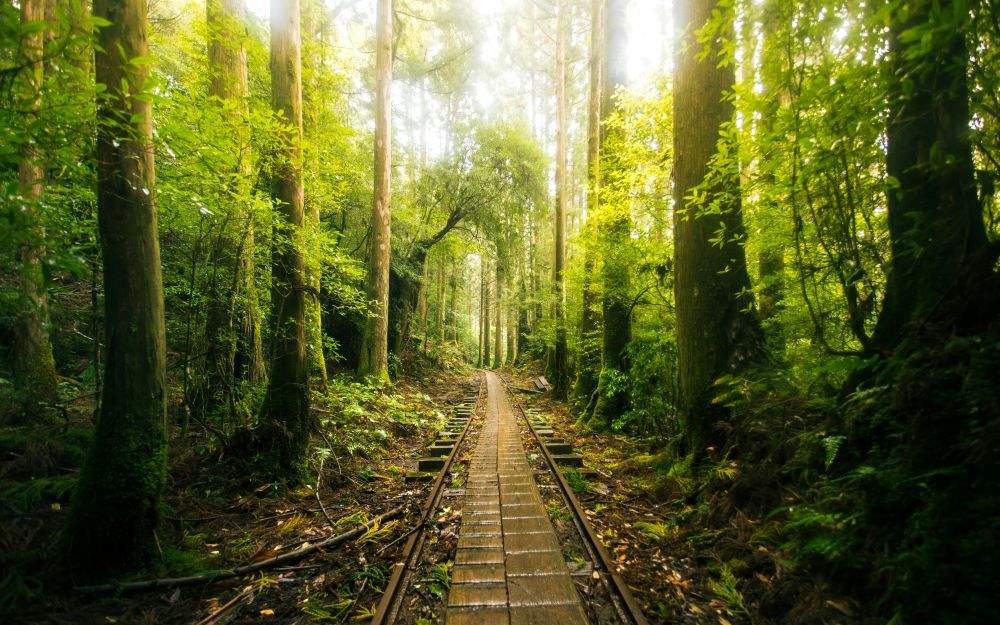
Yakushima, a UNESCO World Heritage site , invites adventurers to explore mystical forests and coastal wonders. The Shiratani Unsuikyo Ravine is a highlight for hikers, with moss-covered trails and ancient cedar trees creating a surreal atmosphere.
The challenging trek to Jomon Sugi, one of the oldest cedar trees in Japan, is a must for experienced hikers.
The island's diverse landscapes make Yakushima a unique destination for nature enthusiasts. Whether you want to go on a challenging hike or just want to soak up Japanese nature, then this is one of the best places to do it.
Japanese Via Ferratas: Scaling New Heights
Japan offers thrilling via ferrata experiences, combining hiking with rock climbing.
The Daikanbo Via Ferrata in the Northern Alps provides stunning views of the Chubu Sangaku National Park. It's an adventure suitable for both beginners and seasoned climbers.
The Karasawa Via Ferrata, also in the Northern Alps, offers a more challenging route with exposed sections and breathtaking alpine scenery.
Other Adventure Travel Activities in South Korea
Riding rapids on the donggang river.
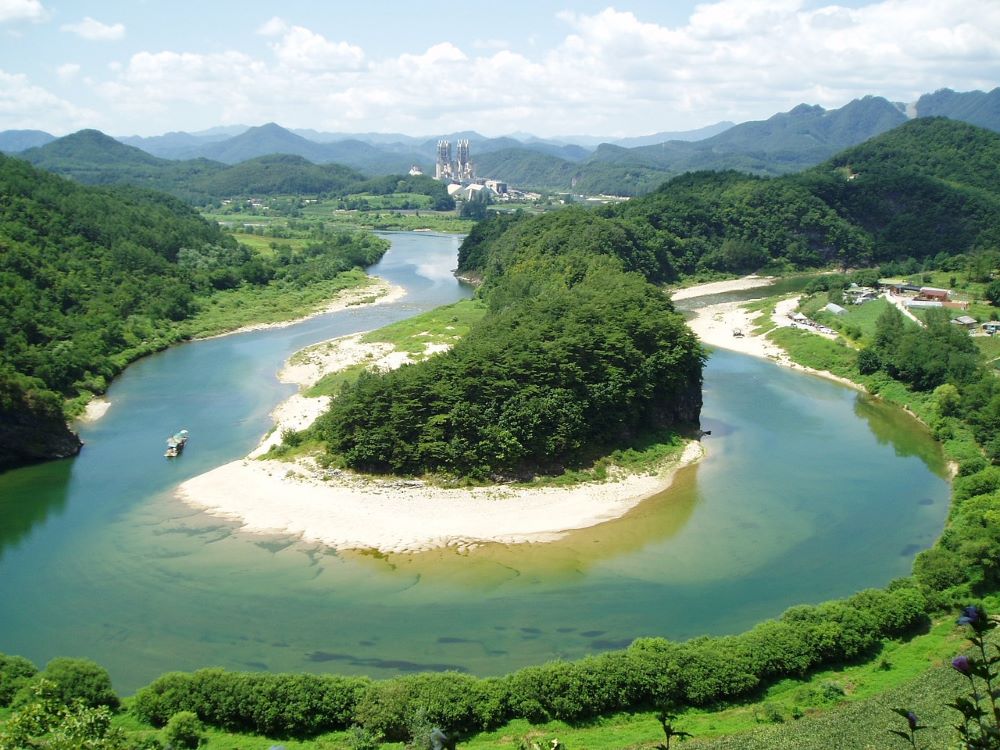
For water thrill-seekers, the Donggang River's white-water rafting is an absolute blast.
The rapids add an exciting twist to your adventure, and you don't need to be an expert to enjoy the ride. You can take guided white river rafting trips down the river to experience the thrill of these rapids in a safe environment.
Rock Climbing in Bukhansan National Park
South Korea's adventure scene isn't just about hiking - rock climbing is another well-loved activity here.
Bukhansan National Park is a rock climber's haven with challenging routes. Whether you're a pro or just starting, the varied terrain has something for everyone.
If you want to experience the best of this park, then consider doing the 5 Summits Traverse - a classic adventure day that leads you up to an intense ridge. There’s also the Seoninbong - a tall peak known for its difficult bolted slab routes.
Baekundae is the highest peak in the park at 836m. There are fewer routes up here and it can get quite crowded. Of course, the views from the summit are awesome.
Uiam is another climber's favourite. This is a single monolith with a few routes to climb up. It’s a more moderate climbing option for those who don't want to take on the more intense climbs in the park.
Ice Climbing in Cheongsong
South Korea's adventure scene doesn't hibernate in winter. Cheongsong Valley becomes an ice-climbing paradise. Of course, you need to prepare for the cold, but the thrill of scaling icy heights is a unique experience you won't forget.
You can take guided ice-climbing trips, which include all of the gear you need for this adventure activity. This is suitable for new and experienced ice climbers.
Scuba Diving
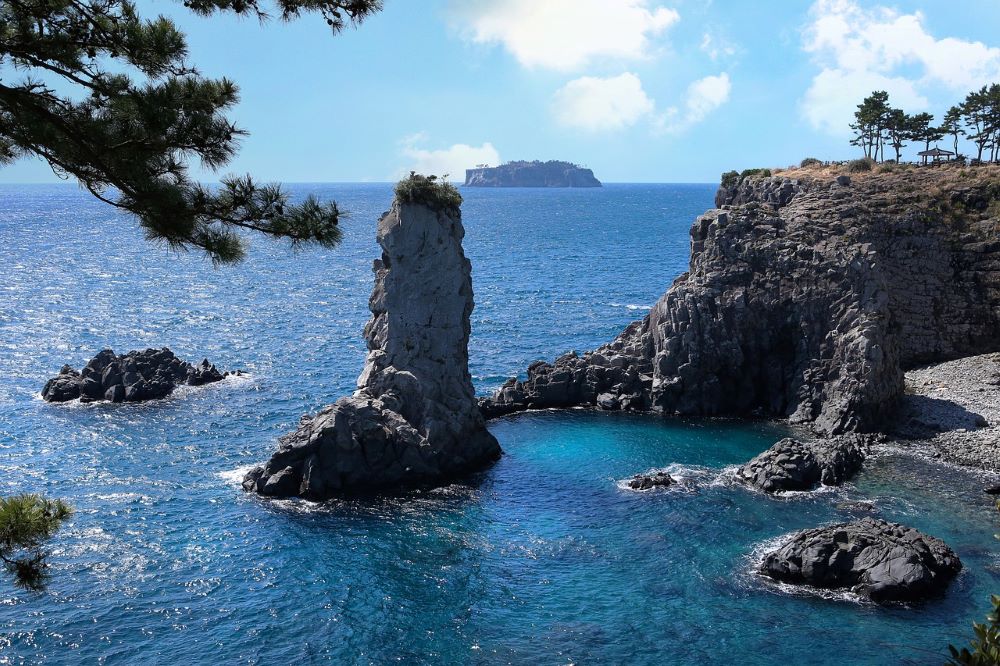
While there’s plenty of fun to be had in the mountains of South Korea, head to the coast and you’ll also find some amazing scuba diving opportunities.
Scuba diving is mainly done along the sojourn part of the country’s east coast, as well as around Jeju Island. The waters are warm, and you can experience a range of sandy bottom dives, beach dives and reef dives.
Experiencing New Heights
If you’re after some high-flying adventure, then South Korea has a range of adrenaline-fuelled options.
You could go sky diving or hot air balloon riding over the country. Bungee jumping the country’s highest jump at Jecheon City (62m) is another thrilling option.
Adventure travellers can also enjoy a seriously impressive ziplining course at the Hadong Alps Leports. It’s possible to reach 120km/hr on this 1.5 km-long ziplining trail.
And with all of the mountains comes plenty of paragliding opportunities. You can do this across the country, with many popular launch sites existing along booking trails.
Other Adventure Travel Activities in Japan
Ski and snowboard the mountains.
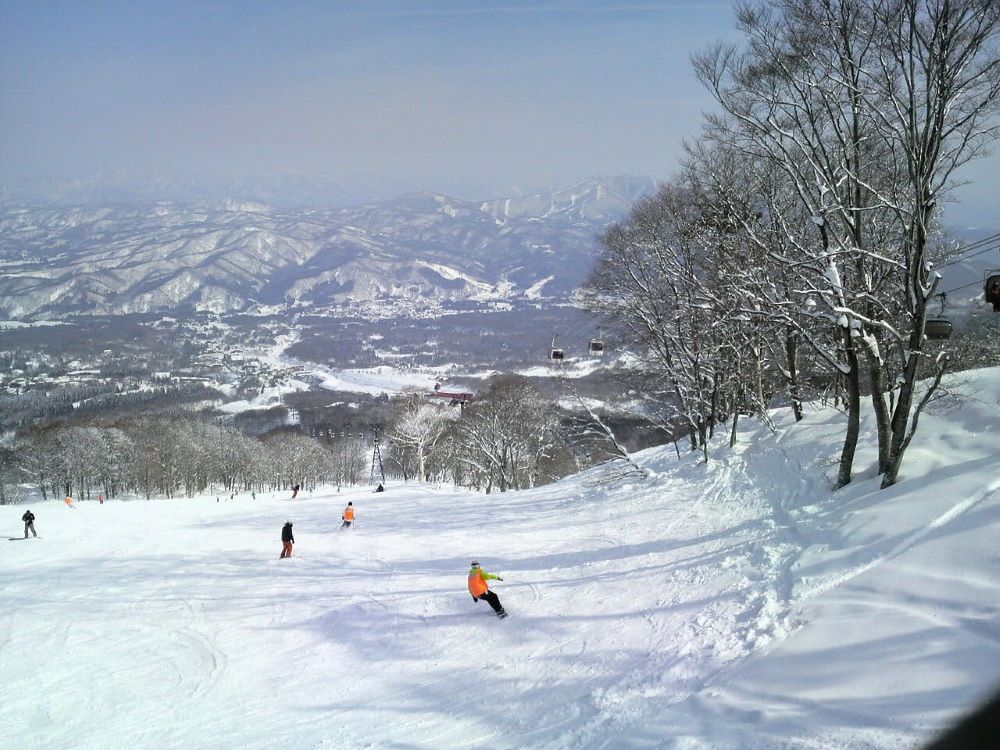
Japan's adventure scene adapts to each season. In winter, the country transforms into a winter sports paradise, with skiing and snowboarding in places like Niseko and Hakuba.
There are plenty of great ski resorts around these parts of Japan, with slopes suitable for all experience levels. If you’re after some of the best winter skiing outside of Europe, then Japan should be on your list.
Shirakawa-go and the Noto Peninsula: Cultural and Coastal Adventure
For a unique blend of cultural exploration and outdoor adventure, head to Shirakawa-go and the Noto Peninsula. The traditional thatched-roof villages of Shirakawa-go are surrounded by scenic landscapes. Hiking through this cultural treasure provides a glimpse into Japan's rural history.
The Noto Peninsula offers coastal hiking with stunning views of the Sea of Japan. The Noto Kongo Coastline Trail is a great way to combine seaside exploration with outdoor adventure.
Surfing and Kayaking
Japan's extensive coastline provides excellent opportunities for surfing and kayaking enthusiasts. The beaches of Shonan near Tokyo and the Chiba Peninsula are popular surf spots, offering some great waves - especially during typhoon season.
For kayaking, the crystal-clear waters of Okinawa provide a serene yet exciting adventure. You can explore sea caves, coral reefs, and hidden coves, immersing yourself in Japan's coastal beauty from a different perspective.
South Korea vs. Japan: Which Country is Best for Adventure Travel?
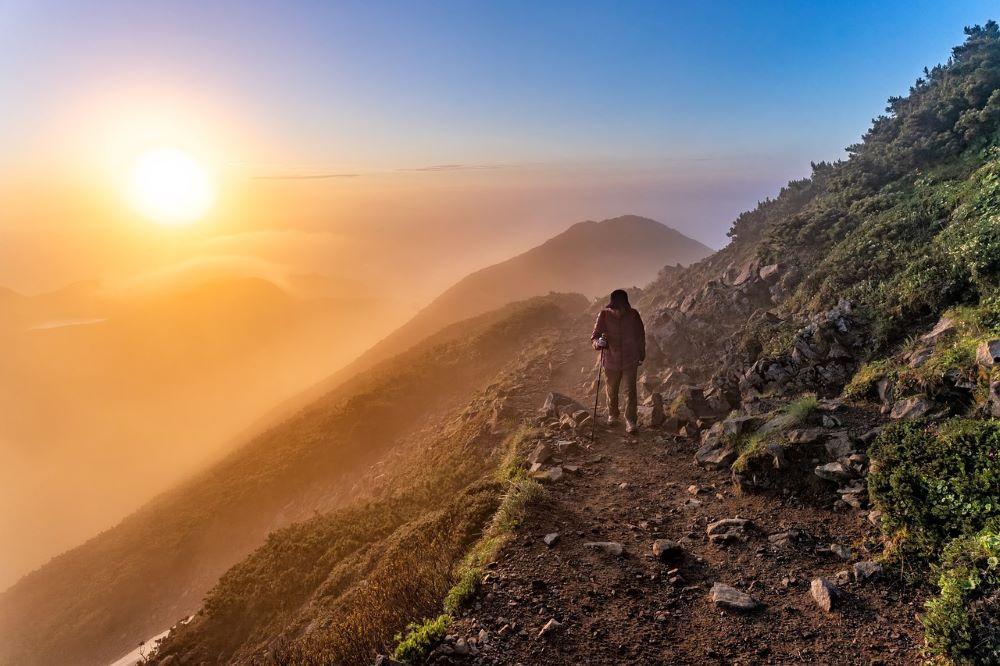
So, which country is better for adventure travellers?
Both South Korea and Japan offer many thrilling activities, including plenty of mountains and hiking opportunities.
Overall, Japan is a more popular and iconic adventure destination, as it includes the impressive Mount Fuji, the tall Japanese Alps, and offers a greater range of winter sports activities.
However, South Korea still has plenty of amazing national parks, with beautiful protected mountains, and it tends to be cheaper to visit. Jeju Island is also the better option for sunny beaches and ocean adventures.
If you’re looking to tick off bucket list hikes, go to Japan. If you’re looking for a lesser-known adventure destination, consider South Korea.
About the author
Alison Macallister
With a degree in Nature Conservation and experience working with wildlife including the Big 5, Alison used to work as a guide for a 5-star safari reserve in South Africa. Today she is a full time traveller and editor for Mountain IQ. She has travelled and hiked extensively in South America, including many solo hikes in Patagonia, the Cusco region of Peru, Ecuador and Chile.
Leave a Reply
Your email address will not be published. Required fields are marked
We work with local guides to offer great value adventures at unbeatable prices.
- Destinations
- Travel Tips
- Community Trips
- TTIFridays (Community Events)
- SG Travel Insider (Telegram Grp)

- South Korea
Itinerary Planning Cheatsheet For East Asia — Japan, South Korea, Taiwan (incl. deals and pro-tips)
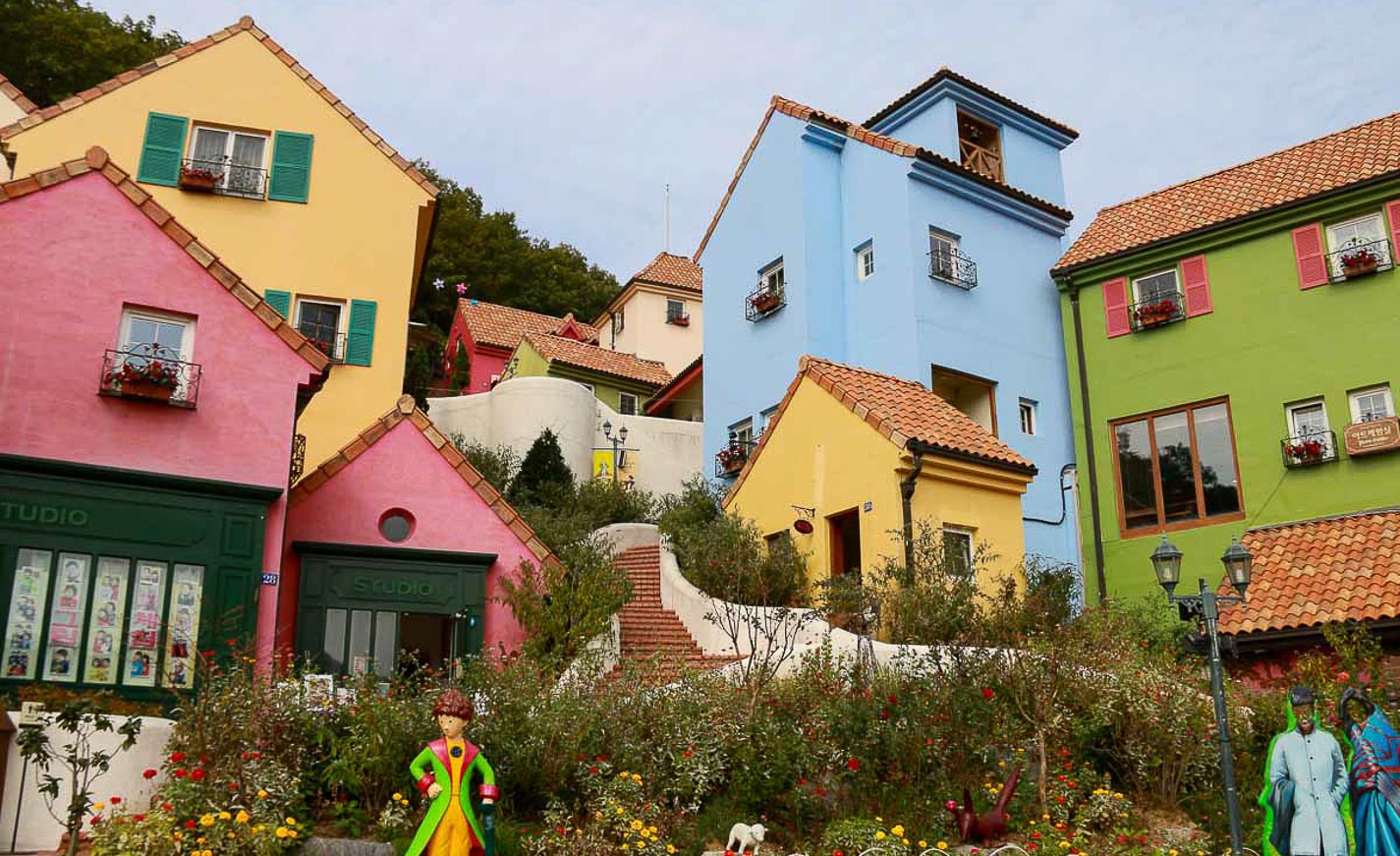
1-for-1 flash deals, promo codes, and other exclusive deals for those travelling to Taiwan, Japan or Korea this year-end!
First it was Korea, then Japan and finally, Taiwan opened its borders on 13 October. Stretch out those fingers — now all that’s left to do is to book that holiday you’ve been waiting for!
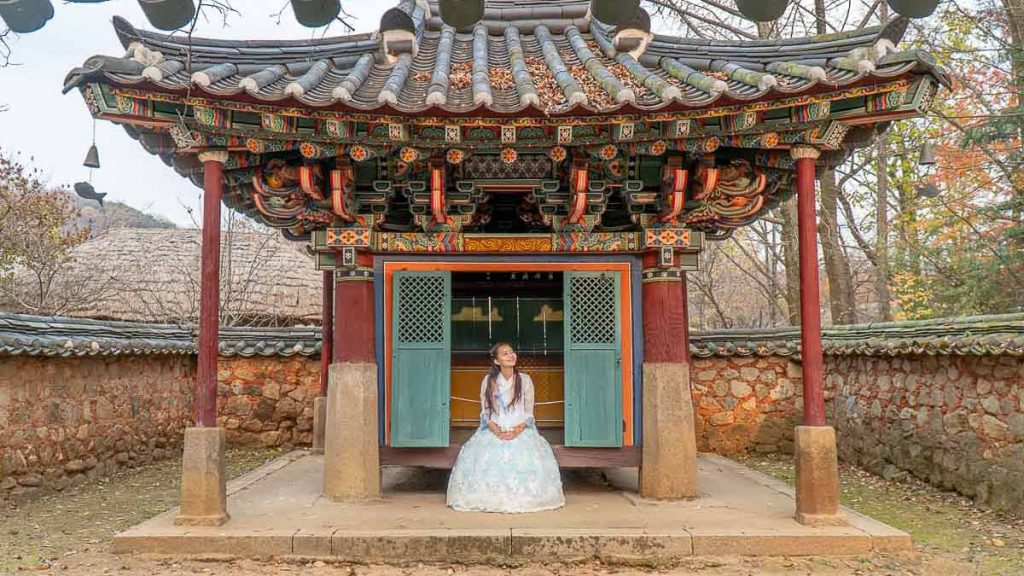
Yet the thing with holiday-planning, there’s just so many bookings to account for. Hotels, transport passes, SIM cards, attraction tickets — the list goes on.
If you’re having trouble creating your “List of things to book”, we’ve collated a checklist of travel essentials and highly recommended activities for that East Asia trip. Bookmark this article for your next holiday to any of these East Asian countries!
There are also attractive deals to score this weekend at Klook’s Travel Fest — more details at the end !
Jump to: Japan | Taiwan | Korea
Travel Necessities
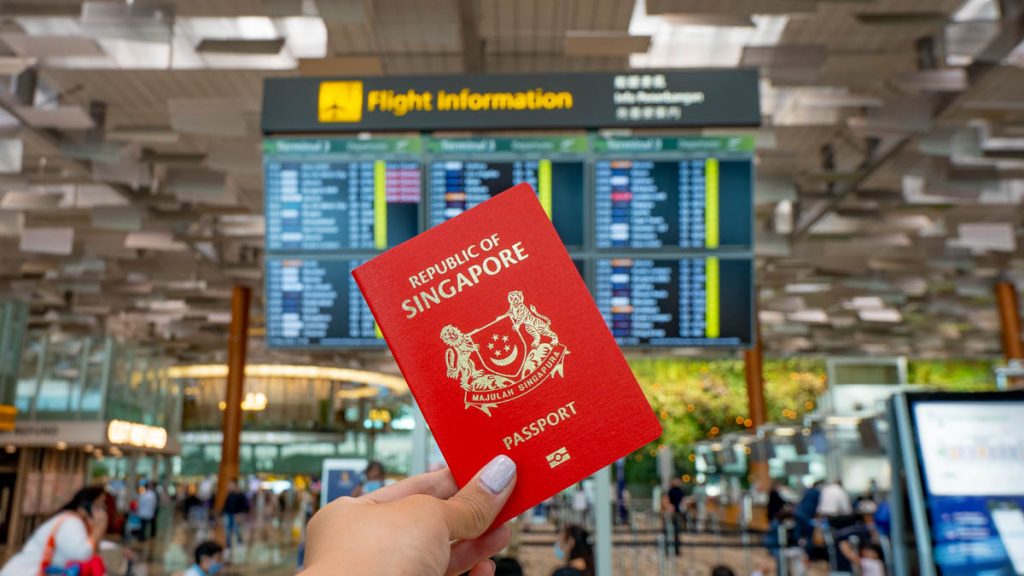
Before diving head-first into the exciting activities, let’s get the important stuff out of the way.
Travel insurance: Be sure to find a plan that has Covid coverage, covers adventurous activities you might be planning to do, and worldwide travel assistance — TravelCare
SIM Card and Hotel Transfers: Get connected once you land by pre-booking your SIM Card. Book your hotel transfer too, if you usually struggle to find your bearings in a new place, and want to save that hassle when travelling with family.
Transport Passes
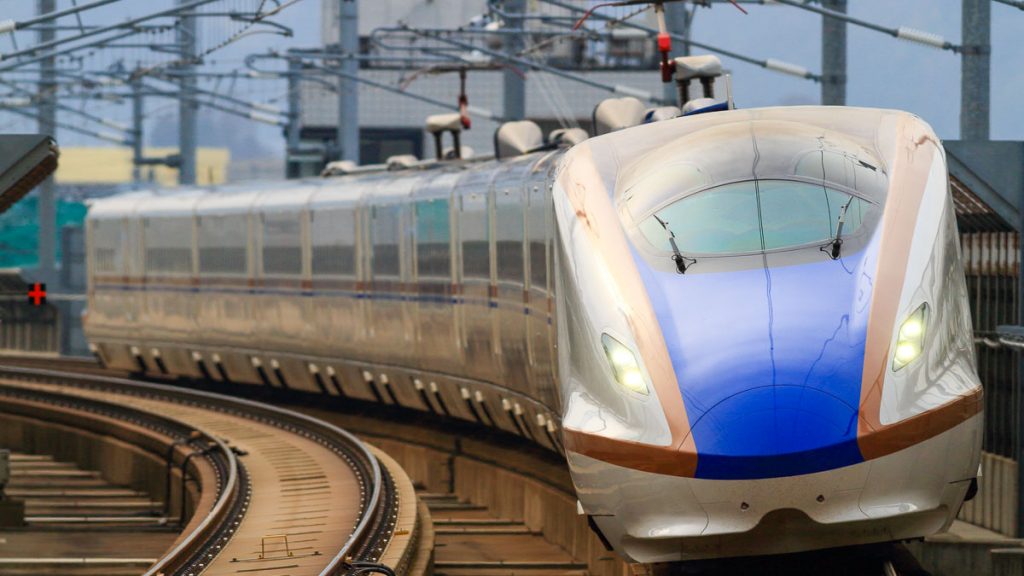
Photo credit: Central Japan Area
Japan’s transport networks are extensive but can be disorienting for first-timers. Save yourself some confusion by booking transport passes pre-trip and checking out this Japan Rail JR Pass guide .
Do some research before booking your passes as they vary in coverage categorised by prefecture. Some options include the JR Kansai WIDE Area Pass (~S$95), JR West Kansai Pass (~S$23), Hokkaido Rail Pass (~S$237), JR EAST PASS (Tohoku area) (~S$192) and more.
Read also: 10-Day Japan Rail Itinerary For First Timers Under S$900 — Tokyo to Osaka
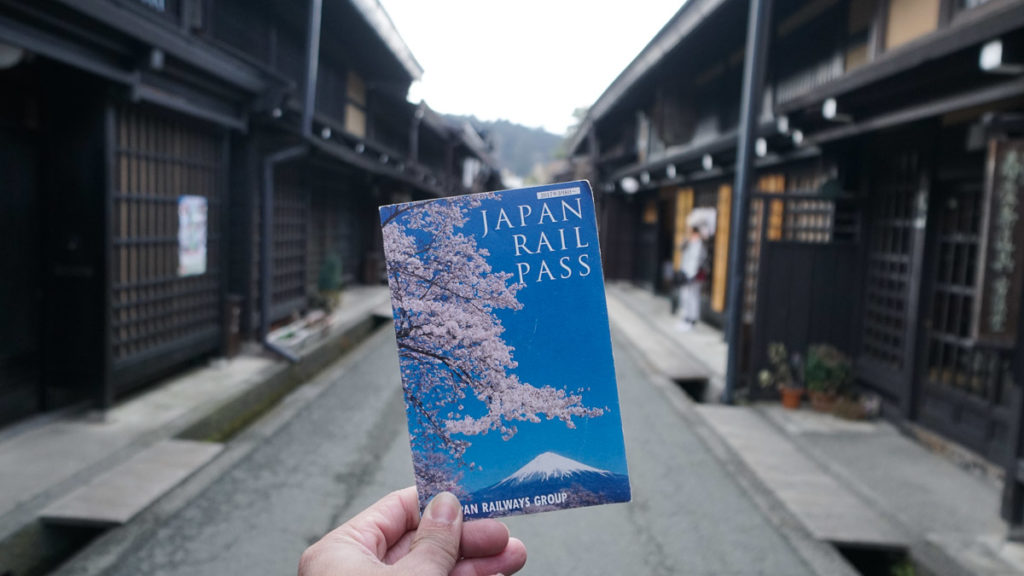
Alternatively, the Whole Japan Rail Pass (from S$284) is great for travellers exploring the whole of Japan. For your choice of 7, 14, or 21 consecutive days, it covers travel along the Hokkaido Shinkansen, Tokyo Shinkansen, Kyushu Shinkansen, and more.
All-inclusive/Activity Passes
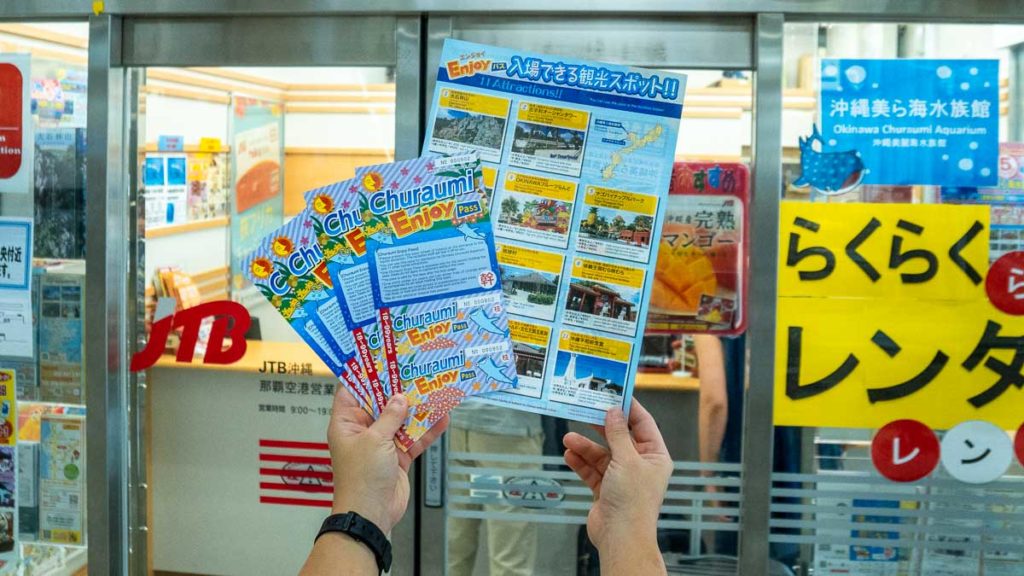
A good budget tip when exploring city areas is to purchase activity passes. These passes cover a range of tourist essentials including unlimited trips on subways, buses, free entry to attractions, redeemable vouchers, and more.
Each pass varies in coverage. For example, some operate on a day-basis (eg. 1-day inclusive pass), while others work on an activity basis (eg. 3 free activities chosen from a list of options). Some cover transport rides while others do not, so double check these details.
Some activity passes to consider in Japan:
Theme Parks
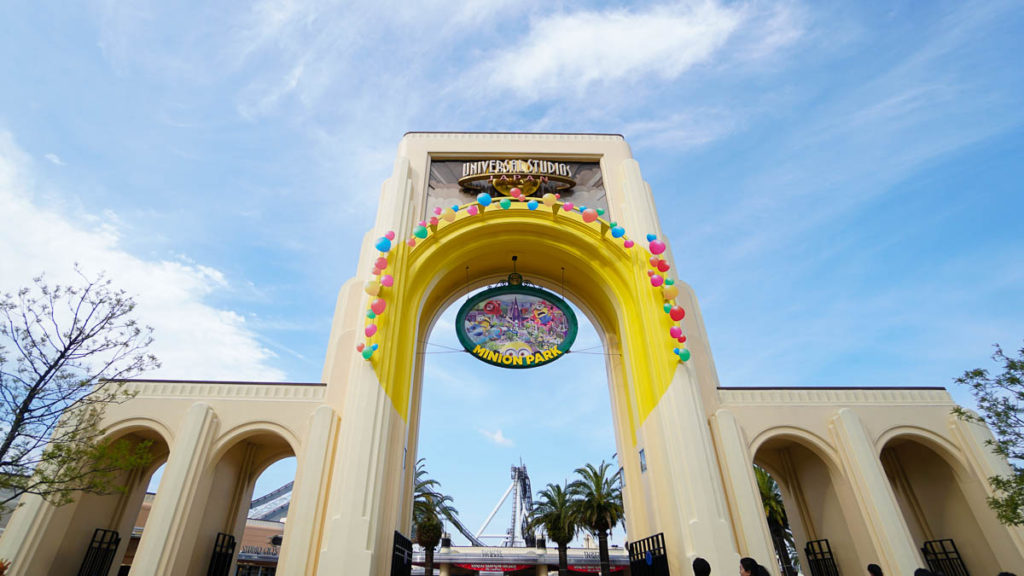
Japan’s theme parks are notoriously crowded all year round. While you can purchase tickets on-site, save time on queueing by pre-booking these tickets — more time chasing rides!
Consider pre-booking these if they’re in your Japan itinerary: – Universal Studios Japan (USJ) (~S$80) — with 1, 1.5 and 2-day studio passes – USJ Express Pass 4 (from S$65) or Express Pass 7 (from S$103) – 1-Day Passports to Disneyland or DisneySea (from S$85)
Check out our ultimate USJ guide and Disneyland and DisneySea guide to find your way around!
Cultural Experiences
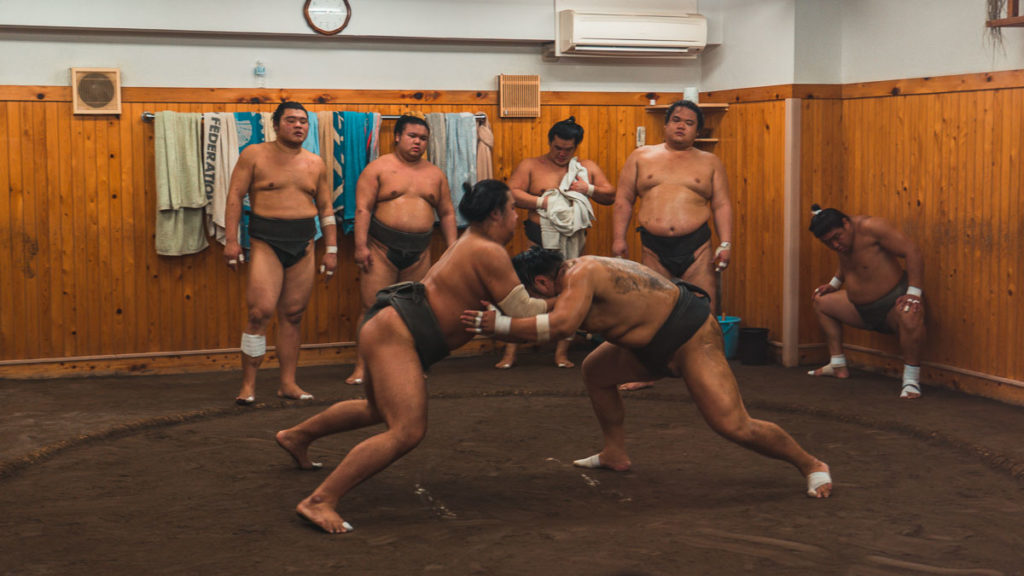
Check out lesser-known cultural experiences like this Sumo Morning Training Visit (~S$144) where you’ll get a sneak peek into the lives of professional Sumo wrestlers.
If you love dressing up, check out the Kyoto Kimono Rental and Maiko Dinner Show (~S$670), or this Ninja Experience in Tokyo (S$74) — learn ninja tricks like the shuriken and blowgun as you visit some of Japan’s iconic shrines in a ninja outfit.
Guided/Day Tours
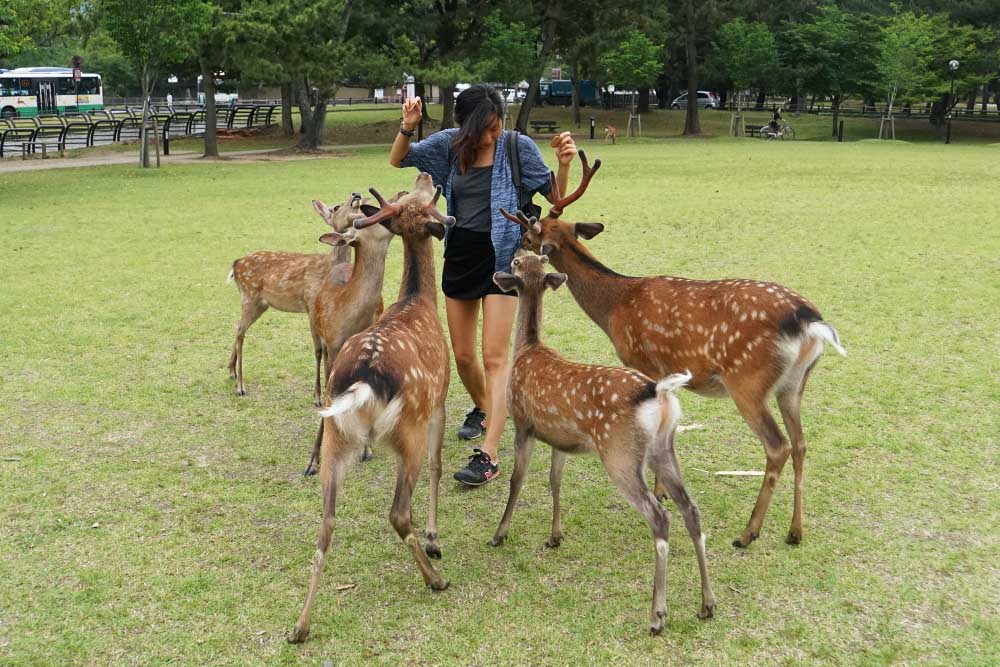
Remember to explore other neighbouring cities too! If you’re short on time to plan, consider booking day tours. They offer both the flexibility of a self-planned trip together with the convenience of guided tours. Some options include the Nara Park Half-day Bus Tour from Kyoto (~S$77), the Hakkoda Ice/Snow Monsters Snowshoeing Guide Tour (~S$74), or a Mt. Fuji and Hakone Day Trip (~S$122).
Limited-time Exhibitions
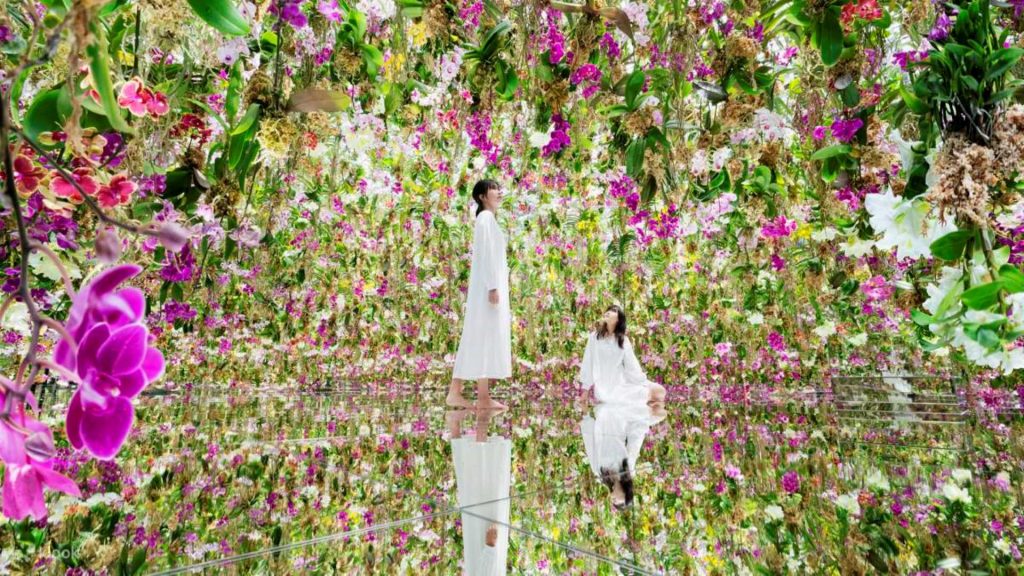
Photo credit: Klook
If you’re travelling before the end of 2023, check out TeamLab Planets TOKYO Toyosu (S$30). This is a limited-time exhibition offering visitors a barefoot museum experience with a collection of 9 artworks discovering teamLab’s concept of “Body Immersive”.
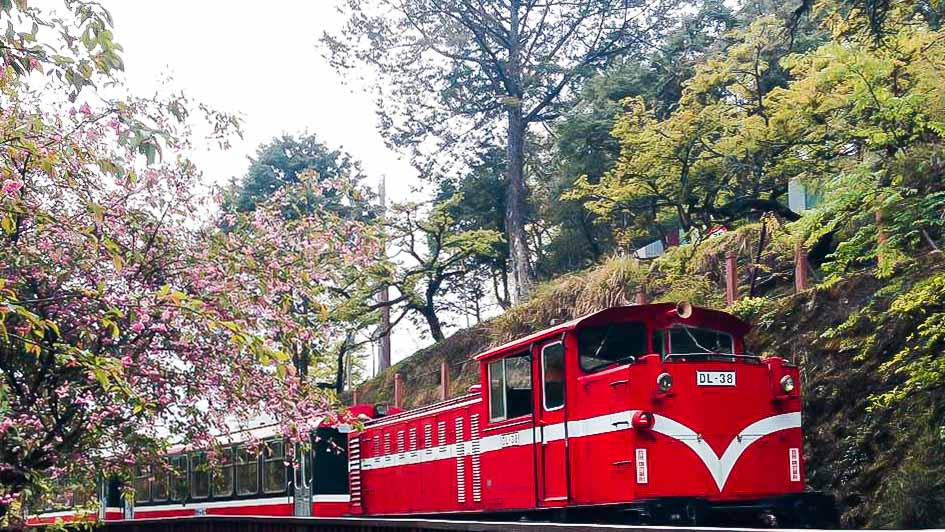
Taiwan’s transport system includes three types of train services: Taiwan High-Speed Rail (THSR), Taiwan Railway Administration (TRA) and Taipei Metro (MRT) train services.
The THSR travels up to 300km/h across Taiwan, connecting travellers from the Northern end of Taipei to the Southern tip of Kaohsiung. The slower TRA connects smaller cities uncovered by the THSR. Lastly, the Taipei Metro serves areas in New Taipei.
Choose transport passes that best suits your Taiwan itinerary best:
You can also get discounted individual tickets for the THSR starting from Taipei , Taichung , Taoyuan , Zuoying , Tainan , Banqiao , Chiayi , Hsinchu or Nangang
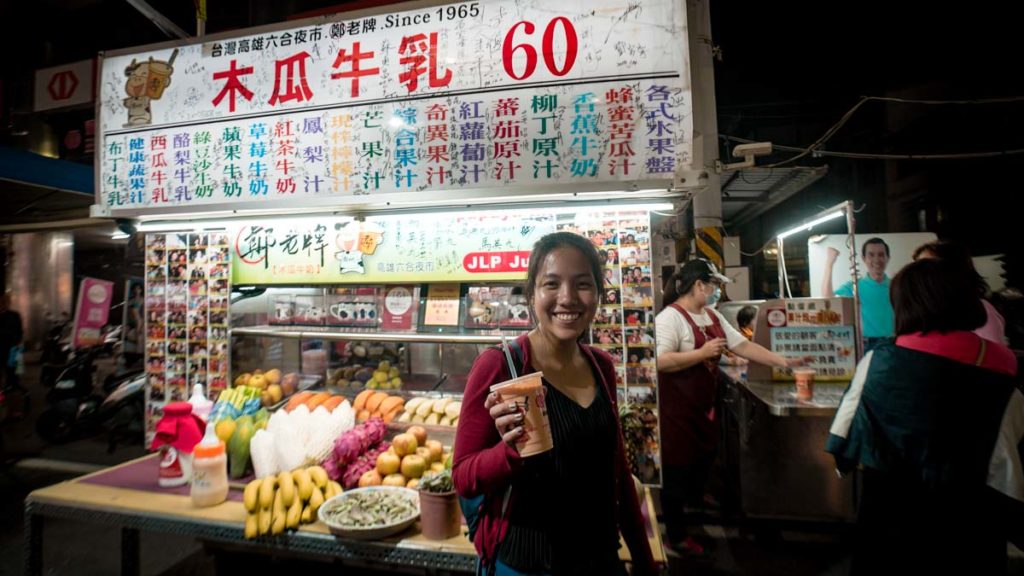
One of the best ways to discover the best food in a country is to ask a local! If you’re too shy to talk to strangers, consider a Shihlin Night Market Food Walking Tour (~S$15) for a blend of food and vibrant culture!
Travelling solo? Meet up with other like-minded travellers by signing up for a Taipei Pub Crawl (~S$30).
After a night of alcohol, consider detoxing with a Taipei Tea Culture Day Tour (~S$120) at Bagua Tea Plantation.
Iconic Attractions
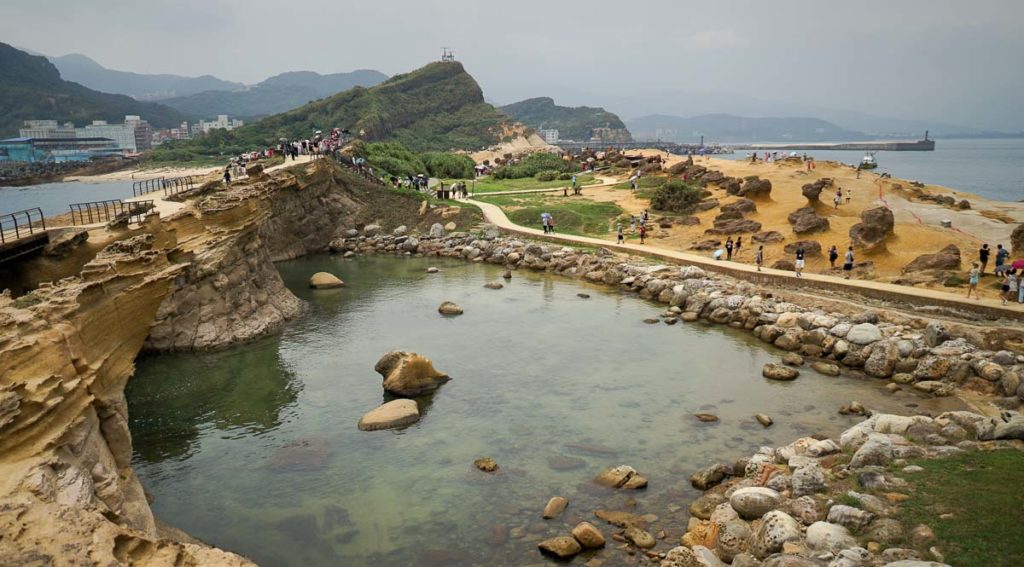
Catch Taipei’s famous night view from the Taipei 101 Observatory Tower (or the sky lounge) (~S$24).
Then head to Yehliu Geopark for its natural landscapes (~S$5) showcasing an array of unique rock formations. While you’re there, also stop by the Yehliu Ocean World (~S$16) for a fascinating water show with underwater animals.
Transport Passes & T Card
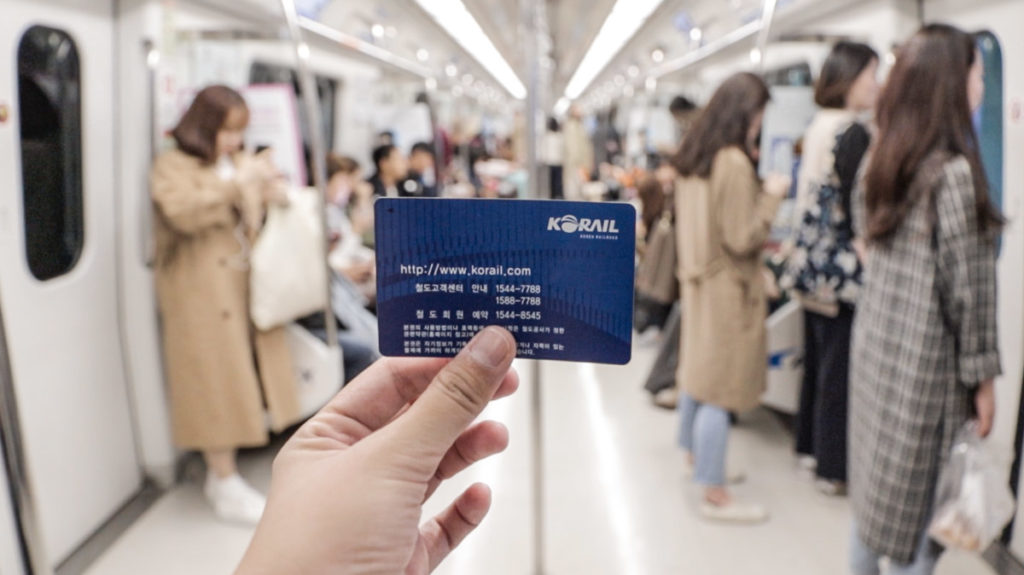
The Korea Tour Card (T-card) also offers discounts at tourist spots and allows payment at retail outlets. Any unused balance at the end of your visit can be refunded.
*Note: The Discover Seoul Pass acts as a T-money transportation card as well, so you won’t have to purchase the Korea Tour Card separately if getting the Discover Seoul Pass.
All-inclusive/Activity Passes
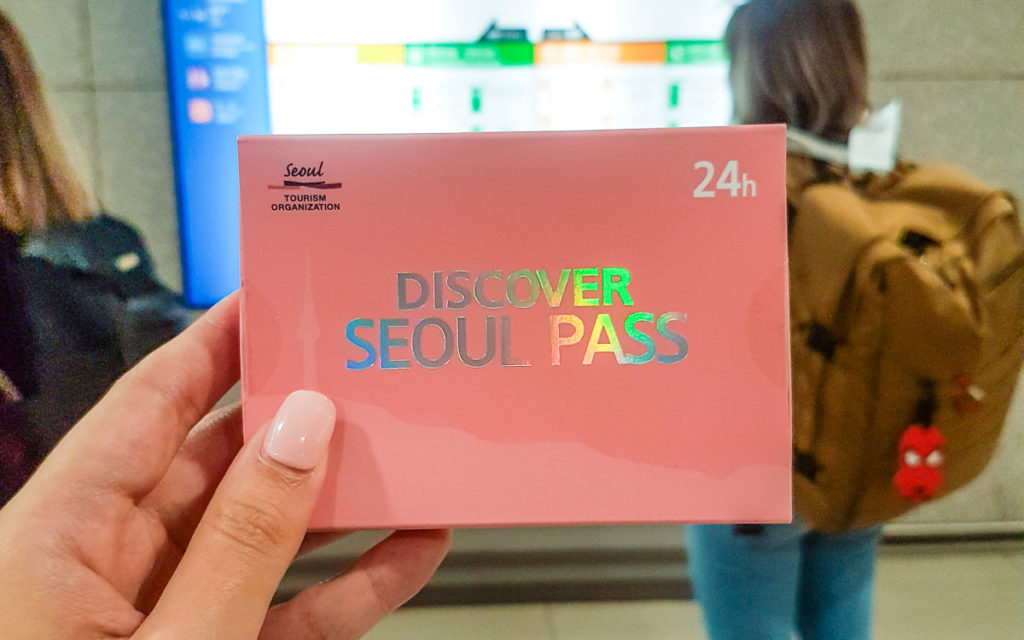
With many tourist attractions to visit in Seoul, you’ll want to grab activity passes to enjoy additional discounts when touring the city. There are two options for touring Seoul: one operates on a day basis (eg. 1-day inclusive pass), while the other works on an activity basis (eg. 3 free activities chosen from a list of options).
Attractions
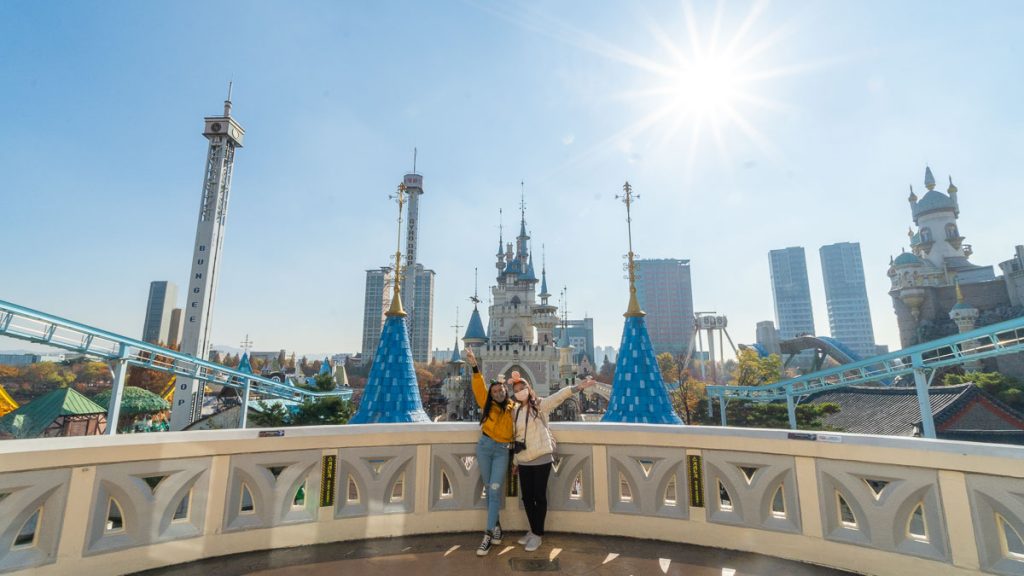
Korea’s theme parks too are often packed with long queues. Pre-booking entrance tickets help you skip queues and save time. If these are in your Korea itinerary, definitely have them pre-booked: – Everland (~S$30) – Lotte World (from S$40)
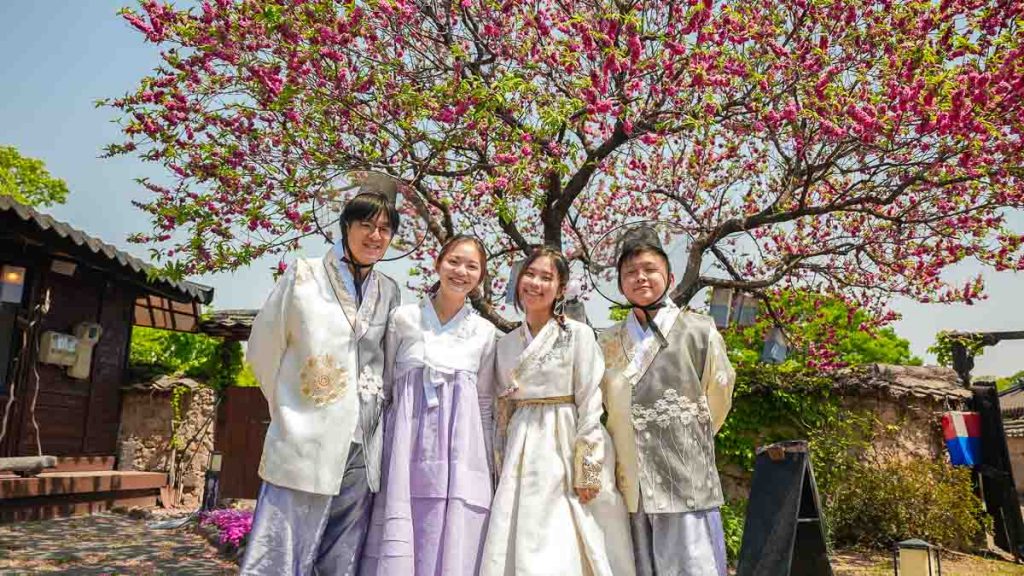
A Korean holiday must-do — don a Hanbok with Korean hairstyling (~S$6.50) as you stroll Gyeongbukgong Palace. For a closer look into Korea’s culture, check out the Nami Island and Gwangjang Market tour (~S$144). For Hallyu fans, there’s also a Seoul Hallyu Kpop tour (~S$45) for a chance to meet your favourite idols!
Seasonal winter experiences
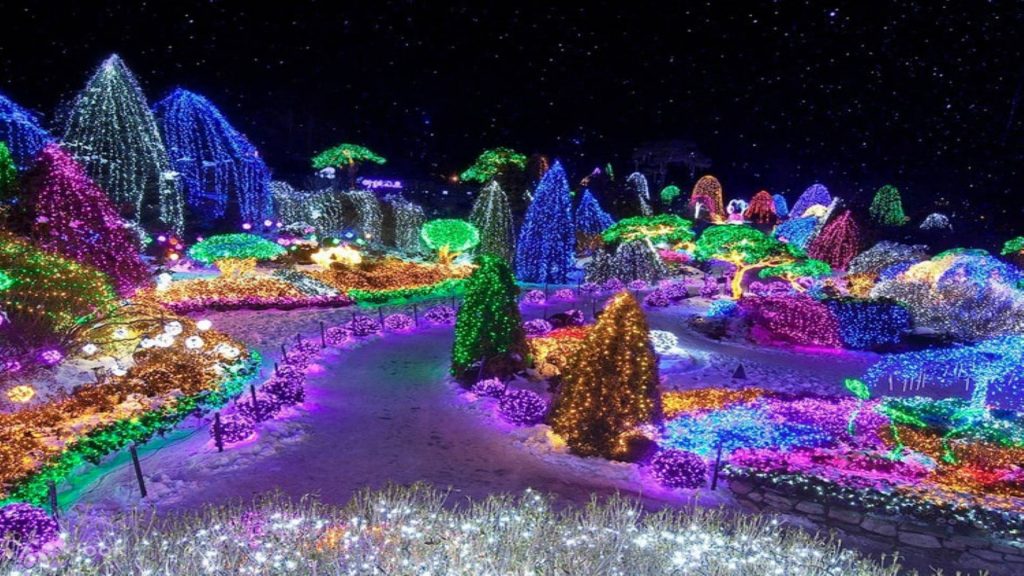
For those heading over during Winter, check out the Cheongyang Ice Fountain Festival (~S$60) or the Garden of Morning Calm Lighting Festival (~S$80).
Score attractive travel deals at Klook’s Travel Fest from 29th – 30th Oct 2022

Alright, if you’re heading to East Asia this year-end, Klook’s Travel Fest is the event you won’t want to miss.
This includes event-exclusive 1-for-1 flash deals for top attractions like Everland, Universal Studios Japan, Osaka Amazing Pass, Taiwan High-Speed Rail, and other items mentioned in this article.
Not only can you redeem event-exclusive promo codes offering up to $80 off , but the first 100 visitors for each day also win goodie bags with extra promo codes. One lucky visitor will also find a golden ticket in the goodie bag to redeem a 3D2N Genting Dream cruise! Other prizes to redeem include $800 Klook e-Gift Card, a Swiss Travel Pass, etc.
Prepare yourself and check out the full list of deals and promotions before heading down!
Meet us there
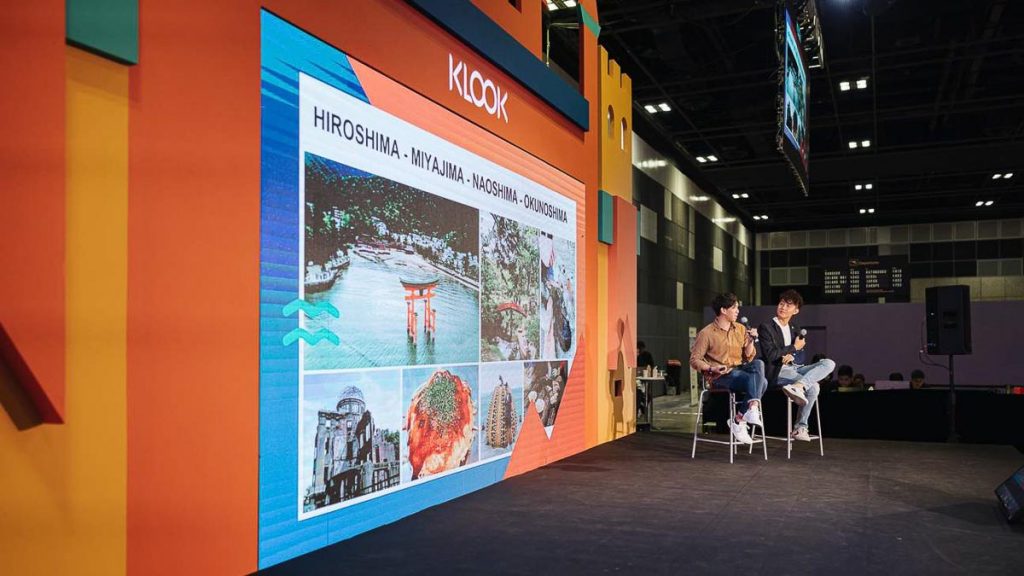
The Klook Travel Fest will be held at Suntec City West Atrium on 29 and 30 October 2022, from 11am to 9pm. Entry is free, but note that registration is required .
On 30 October, TTI will be sharing a Japan spotlight at 3:30pm — join us for an overview on travelling with the JR Pass and car rental! Check the full schedule for sessions with other travel gurus as well.
Make a note on your calendars, and be sure to say hi when you catch us there!
Which East Asian country are you visiting this year-end? Share with us in the comments below!
This post was brought to you by Klook .
Like what you see? Follow us on Facebook , Instagram , and YouTube for more travel updates!
View this post on Instagram A post shared by thetravelintern.com 🇸🇬 (@thetravelintern)
LEAVE A REPLY Cancel reply
Save my name, email, and website in this browser for the next time I comment.


11 Things to do in Clark, Philippines — A Quiet Adventure...

20 Things to Eat-See-Do in Sabah’s Capital Besides Climbing Mount Kinabalu

Experience Macao Singapore Roadshow: Get Exclusive Deals, Experience the Macau Grand...

Ultimate 6-Day Adelaide Itinerary — The Best of South Australia’s Underrated...

31 New Deals and Attractions in Singapore this April 2024

- Terms Of Use
- Privacy Policy
16 things to know before heading to South Korea

Feb 18, 2024 • 10 min read
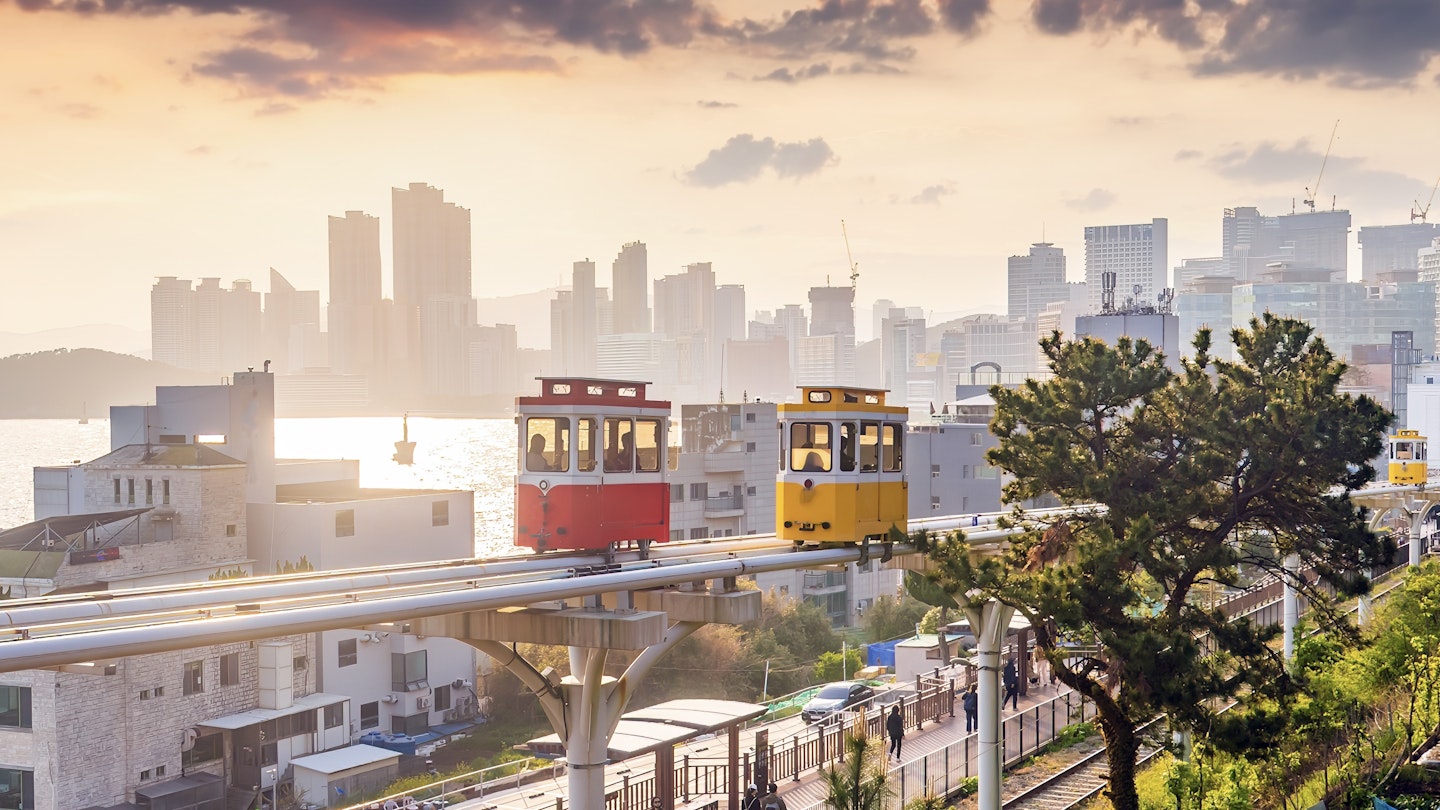
South Korea’s public-transport choices – including Busan’s Sky Capsule – are the envy of the world. As you plan your trip, count on using the nationwide network © By f11photo / Shutterstock
Has any place been on a run of late like South Korea ?
The country is on the lips of travelers around the world, thanks to its cutting-edge technology, world-class cuisine, chart-topping pop bands and some of the most exciting movies and TV series being made anywhere.
Add to all this centuries of tradition and copious natural blessings, all in a country scarcely larger than Ireland, and you’ve got one of the planet’s great travel destinations.
Safe, friendly and possessing superb infrastructure, South Korea is a truly easy – not to mention rewarding – place to explore. Read on for tips to make your visit even easier.
1. Complete your pre-trip registration three days before your flight
Most travelers – including citizens of the US, Australia and the UK – can visit South Korea visa-free for up to 90 days (up to six months for Canadians). You’ll still need to apply for a Korea Electronic Travel Authorization on the K-ETA website , however, at least 72 hours before departure. It’s a simple process, and your K-ETA is valid for two years from the date of approval.
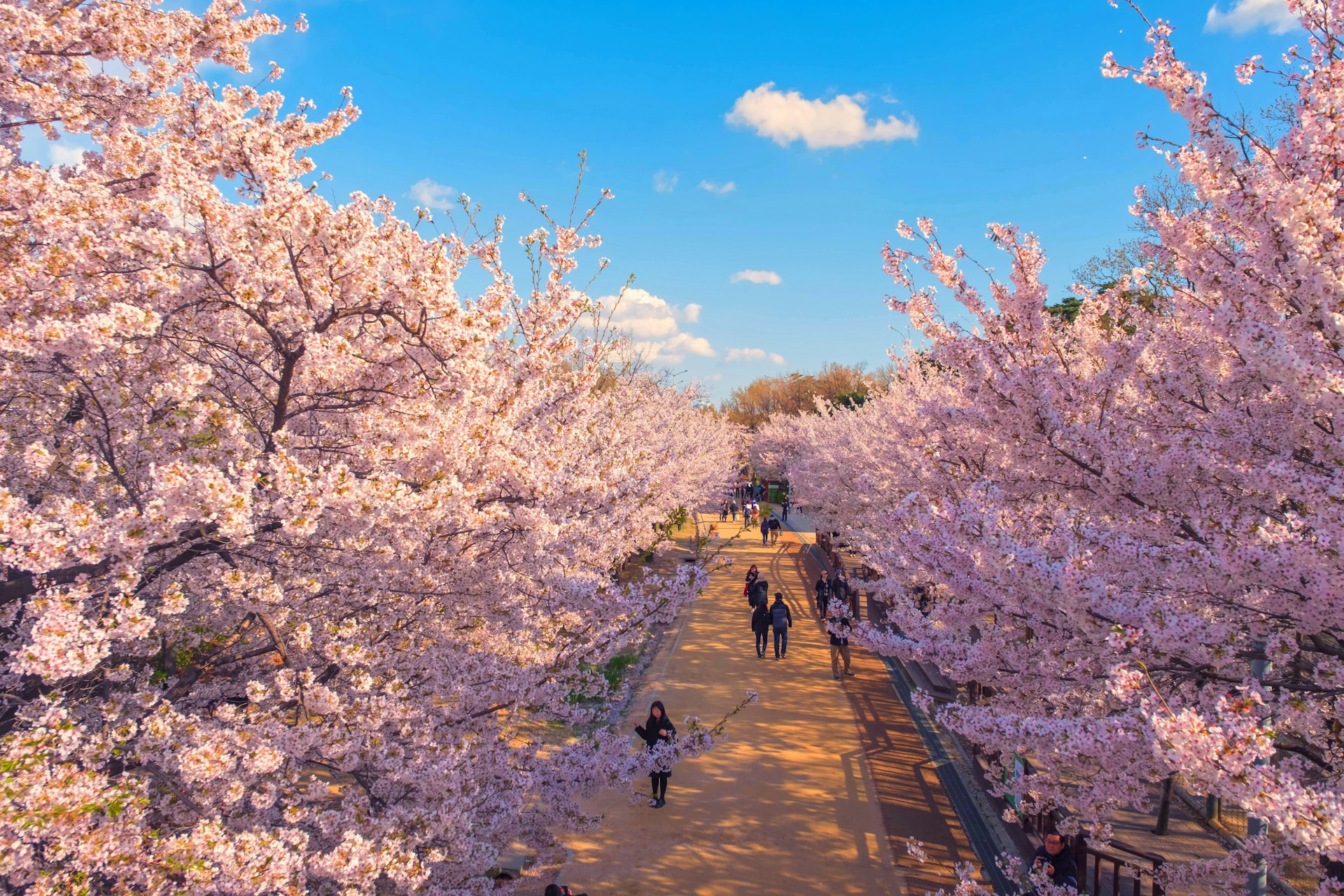
2. Time your visit with the trees
We recommend planning your visit to South Korea for spring or fall , when the peninsula gets its most temperate weather. Bonus points if you can time it to coincide with one of the country’s two periods of arboreal magic. Korea’s cherry blossoms start blooming in mid-March on Jeju-do Island , off the south coast, and typically appear in Seoul in early April. In late October and early November, the leaves of Korea’s many ancient ginkgo trees turn into brilliant golden torches, giving Seoul and other cities a particularly regal look for several weeks.
3. Mind these two major holidays
The two periods that can cause travelers real problems are the multi-day Lunar New Year and Chuseok (fall harvest) holidays. On these two occasions every year, Koreans hit the road en masse, making booking a bus or train ticket nearly impossible. The dates change each year, so be sure to check when these are before making travel plans.
If you can’t avoid a holiday, base yourself in Seoul or Busan for its duration. Plenty of businesses stay open, and the cities can be surprisingly peaceful with everyone out of town.

4. Take advantage of Korea’s world-class public transportation
Korea’s subways, trains and buses are clean, convenient and efficient . It can sometimes seem like a new station is added to the Seoul metro every month, and the rail and intercity bus networks will take you to every corner of the country. Public transportation is cheap: bus and subway fares in Seoul start at just ₩1250. In all of South Korea, Jeju-do is the only place where renting a car might make sense, and even there it’s probably not necessary.
With plentiful English information and sensible design, public transportation in Korea makes getting from here to there a breeze. To get moving, start by picking up a T-money transit card at a convenience store or from a vending machine in any subway station. Separate kiosks can be used to load money onto your card. Tap your card both when you board and get off the subway or bus. Fares are calculated by distance, so if you forget to tap when disembarking, you’ll be charged more and won’t be able to transfer for free. You can also use T-money cards in most taxis.
When traveling longer distances, it’s simple enough to just buy intercity bus or train tickets at stations. For the high-speed KTX train and some of the more popular routes and times – departing Seoul on Saturday morning, for example – it’s a good idea to purchase in advance. Bus tickets are typically readily available for purchase from machines and counters in bus stations. Buy train tickets on the website of KORAIL , the national operator.
5. Stay connected with these essential apps
Wi-fi is so prevalent in Korean cities that you can do without a local SIM card, but if you decide that you want one just in case, or if you plan to head to rural areas, the easiest place to pick one up is at one of the many telecom roaming centers at Incheon Airport upon arrival. You can also rent a phone if you didn’t bring your own.
Helpful apps to download include Naver Map ( iOS and Android ), which works better than Google Maps in South Korea; MangoPlate ( iOS and Android ) for finding restaurants and cafes; Subway Korea for navigating cities’ metro systems; and Kakao T ( iOS and Android ), which is like Uber but for taxis.
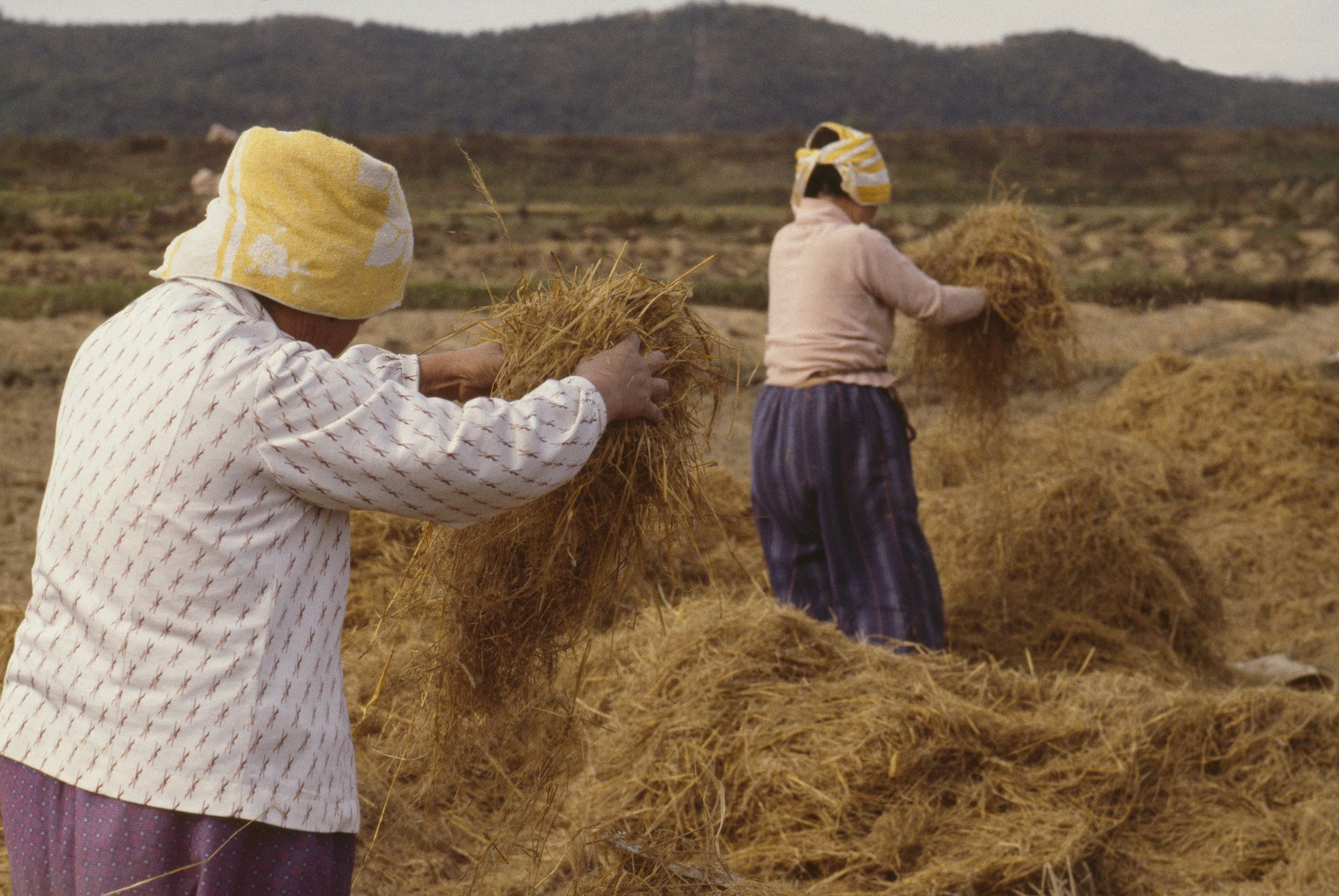
6. Get out of town
There are two Koreas. We don’t mean North and South, but rather Seoul and everything else – or, a bit more broadly, urban Korea and rural Korea. The country has a reputation for being a hyper-paced, highly wired pop-culture dynamo, but its hinterlands present a much different picture, and you’d be missing out big time if you skip them.
The Korean countryside is beautiful, mountains and rivers make for beautiful vistas, and life is lived differently here than in the cities. The population is older – most people under 40 have decamped to the cities – and the pace is slower. At least once on your trip, get out of the cities and immerse yourself in this more traditional side of Korea.
7. Learn your ga , na , da , ra , ma , bas
Basic English is widely understood in Korea by folks under 50, and signage is almost always in both Korean and English. Yet it’s still a good (and respectful) idea to learn a bit of the language.
Beyond memorizing a few essential Korean words and phrases, learning hangul, the Korean alphabet, is like gaining access to a secret bonus level of Korean travel. If you can sound out the letters, you’ll find that you already know what things like 카페 모카 ( ka-pe mo-ka ), 비빔밥 (bibimbap) and 사우나 ( sa-oo-na ) are.
Hangul is easy to learn. King Sejong the Great, who oversaw its creation in the 15th century, declared that a wise man could pick it up before noon and even an idiot could learn it in 10 days. Let’s Learn Hangul teaches the Korean alphabet in an interactive, easy-to-follow way.
8. Roll with the nudges
Koreans live life in a hurry, and they do so in a densely populated country, so you shouldn’t expect the same sense of personal space or public courtesies you find in your home country. Koreans won’t hold doors open for you or apologize if they bump into you when walking. When getting on or off the subway, they likely won’t say, “Excuse me” – they’ll just nudge you aside. They’re not being rude, though.
When you live in a city as crowded as Seoul, it’s just not practical to say sorry every time you knock shoulders with someone – you’d be apologizing constantly. This can be maddening to outsiders, but just accept it and roll with the nudges.

9. Be ready to get personal
The typical greeting here is a quick bow – nothing dramatic, just a head nod deep enough for your gaze to meet the floor – but you’ll sometimes be offered a handshake instead. If you are, expect more of a gentle clasp than the old squeeze-and-pump.
You’ll likely be asked questions more personal than you’re accustomed to by someone you just met. At the top of this list is your age. This data point is essential to Koreans, as it informs how they talk to one another: how formal their verb endings should be and whether to use honorifics. Inquiries about marital status, occupation and your opinion of Korea are also common. Answer politely, and feel free to return the question.
10. Wear what you like, but don’t pack anything too risqué
As a traveler, you can feel free to dress for the weather and comfort. Koreans are pretty relaxed about attire, even if they’re more modest than you might expect. If visiting a temple , while shorts are fine, tank tops and miniskirts are not. Both men and women frequently wear t-shirts at the beach (though it’s best to leave the Speedo or thong at home). Korean women almost never wear low-cut tops, and female travelers could find that doing so brings unwelcome looks. Tattoos are now common among young people, yet even still some bathhouses will deny entry if you show any ink.

11. Eat with others and don’t be afraid to shout for service
Eating is a communal activity in Korea, and many restaurants, especially barbecue joints, don’t offer single servings. So if you’re traveling solo, you might either have to drag someone from your hostel along with you (not a tough sell) or loosen your belt and order pork belly for two (poor thing).
At restaurants, servers won’t come check up on you, and most places have call buttons on each table. Give it a push, and someone will be right over. Otherwise, to grab the waitstaff’s attention, raise your hand and shout, “ Yogiyo !” (“Over here!”) Water is usually self-service, and occasionally side dishes are, too. If your server doesn’t set a bottle of water on your table, look around for a water dispenser and stacks of metal cups. At the end of your meal, take the check to the front counter to pay. There’s no tipping.
12. Is North Korea a concern?
Despite international headlines, South Koreans don’t worry about an attack from North Korea – and neither should you. Military clashes are very rare, and danger to civilians is rarer still. A guided tour to the DMZ can be a fascinating and truly find-it-nowhere-else experience. From afar, North Korea can seem almost comical in its eccentricities, but when you’re looking at South Korean soldiers looking at North Korean soldiers looking at you, the geopolitical stakes hit different. Plus, many tours offer what may be your only chance to actually step foot in the world’s most secretive country.
13. Monitor the air quality
Even in post-pandemic times, it’s a good idea to always carry a mask, as air quality can occasionally drop to pretty nasty levels. This is especially true in spring, when dust blown off the deserts of Mongolia and northern China combines with local pollution to create unhealthy air. Download an app like IQAir Air Visual (for iOS or Android ) to keep track of current conditions and the upcoming forecast across the country.
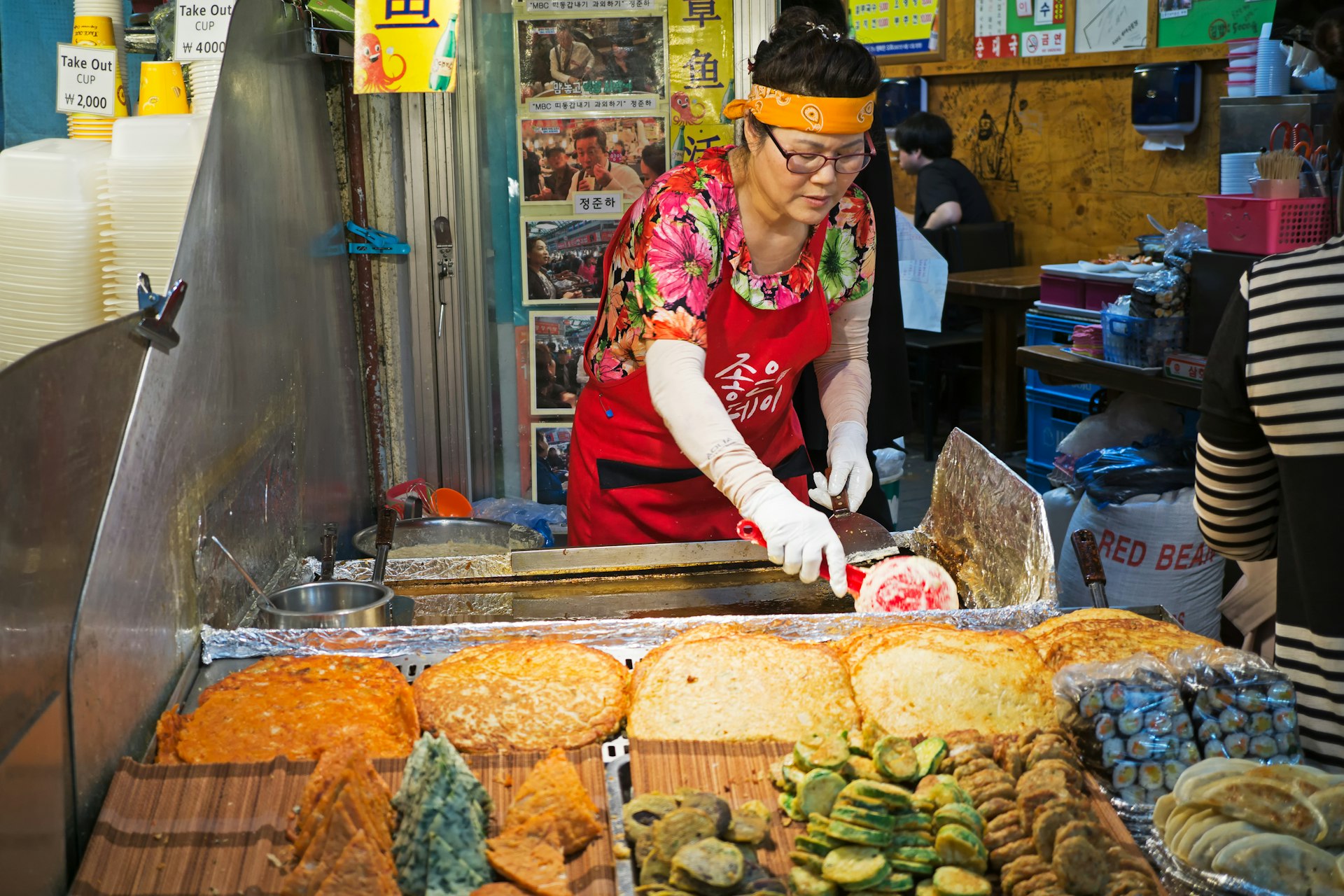
14. You might have to be flexible about your diet
If you have food allergies or a specific diet, you may have a hard time finding places to eat or getting clear information about ingredients. Vegetarianism and veganism are slowly gaining popularity in Korea, but not many restaurants cater to these diets. Even dishes that you might think are vegetarian are often made with anchovy broth or fermented shrimp.
15. Recognize that LGBTQI+ acceptance still has a long way to go
While attitudes are slowly changing, Korea remains a conservative society in many respects, and anti-LGBTQI+ prejudice is common. Even so, LGBTQI+ travelers are more likely to be on the receiving end of curious – if misinformed – questions than any sort of open hostility. Public displays of affection are generally frowned upon (though this goes for straight couples, too).
Seoul has small gay districts in Itaweon and Jongno-3-ga, while the Hongdae-Sinchon-Ewha university corridor is another place where LGBTQI+ Koreans feel comfortable being themselves.
16. Use common sense and keep these numbers handy, just in case
Theft and violent crime are rare in South Korea. Scams and pickpockets targeting travelers are virtually nonexistent, and Koreans typically go out of their way to be hospitable to visitors. Nonetheless – as anyone should anywhere – do exercise basic caution and common sense. South Korea has strict drug laws, and don’t even think about trying to sneak past them. Nightlife often revolves around heavy drinking, so know your limit to avoid putting yourself in a sketchy situation.
If you do have an emergency, call 112 to reach the police, 119 for emergency services or 1330 to reach the Korea Travel Hotline, where an operator will connect you to the appropriate service and serve as an interpreter. That number can also be used to reach the Korea Tourist Police .
This article was first published July 2022 and updated February 2024
Explore related stories
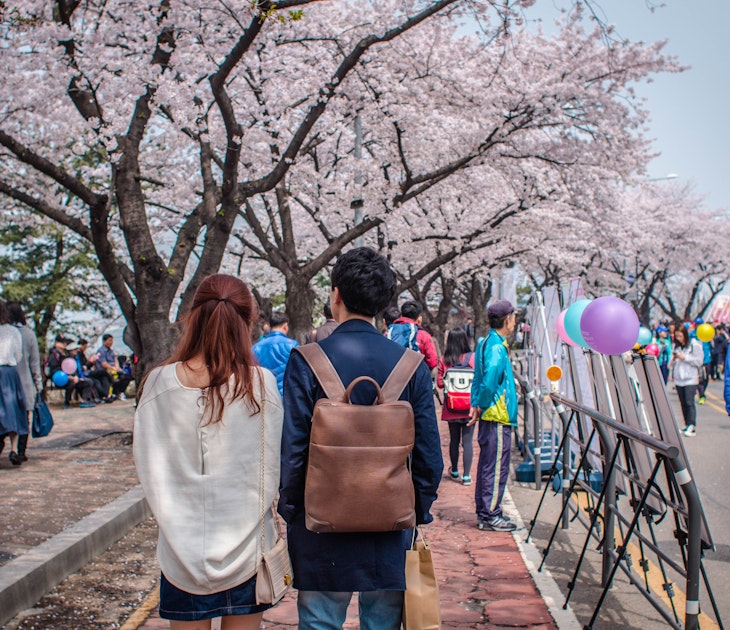
Public Transport
Feb 10, 2024 • 8 min read
Make the most of Seoul's incredible public transport but don't miss out exploring on foot.

Mar 28, 2024 • 7 min read

Feb 27, 2024 • 6 min read
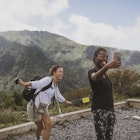
Feb 20, 2024 • 6 min read
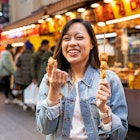
Feb 19, 2024 • 8 min read

Feb 18, 2024 • 4 min read
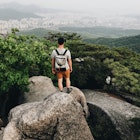
Feb 18, 2024 • 7 min read

Feb 17, 2024 • 10 min read
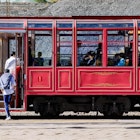
Feb 17, 2024 • 8 min read
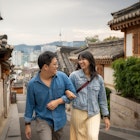
Feb 17, 2024 • 6 min read
- Skip to primary navigation
- Skip to main content
- Skip to primary sidebar

Destinations
Experiences.
- Photography
Plan Your Trip

Is Korea Really the Poor Man’s Japan?
January 7, 2023 by Robert Schrader Leave a Comment
When the topic of Korea vs Japan travel comes up, you might assume the discussion is historical, political or even racial—that’s not what this post is about. Rather, I’m going to explore the key differences between these two amazing countries where travelers are concerned, and help you decide which is best to visit.
Some of these will be practical in nature, whether you’re asking “is Japan expensive?” (either in comparison to South Korea , or as a standalone question), or want to know how far English will get you in either country (Spoiler alert: not very!).
I’ll also be exploring the difference between Japan and Korea in a more esoteric sense, weaving in stories from my two dozen combined trips to the two countries to entertain you a bit as you make your decision. (Assuming you don’t simply decide to extend your trip and visit both!)
When it comes to Korea or Japan, which is better to travel?
My Own Experience with Korea vs Japan
Before my first trip to Korea, a well-meaning friend of mine told me that “Korea is the poor man’s Japan” (which, side note, is a ridiculous statement, since Korea is at least as expensive as Japan—but I digress). I landed in Seoul the first time very much in love with Japan and believing Korea couldn’t possible measure up; this prophecy was largely self-fulfilling. Why is Japan more popular than Korea? Part of it may be simply because so many people ask this question.
Indeed, my views have moderated as I’ve traveled in Korea more, but I still wouldn’t say that the question of Japan vs South Korea travel is a draw. Japan is still a far superior country for travelers in my opinion, even if South Korea has more redeeming factors (and, to be sure, a slightly wider array of destinations and experiences) than I initially gave the country credit for.
Key Ways to Compare Korea vs Japan
Japanese culture vs korean culture.
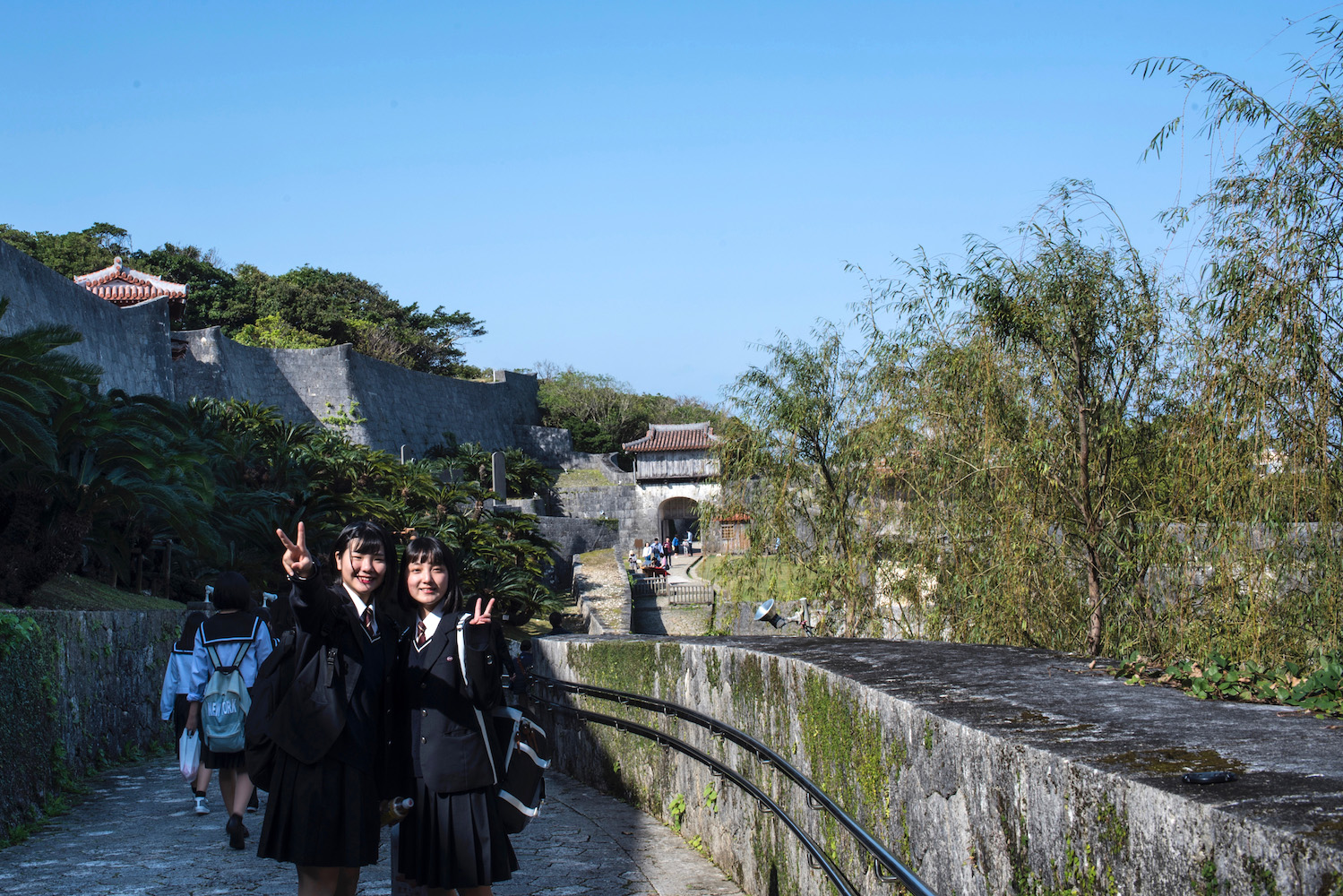
Let’s be clear: A post on a travel blog is not the proper venue to have a sophisticated discussion of Korea vs Japan culture. However, from practices like the Japanese tea ceremony and the Korean hanbok costume, to the way people in Japan and Korea welcome strangers (or don’t), I prefer Japanese culture in every conceivable way. One (possible under the influence of my aforementioned) friend I wholly believed that the entire of Korean culture was a rip-off of Japan’s (and China’s), though I’ve somewhat walked that back in recent years.
Korean Food vs Japanese Food
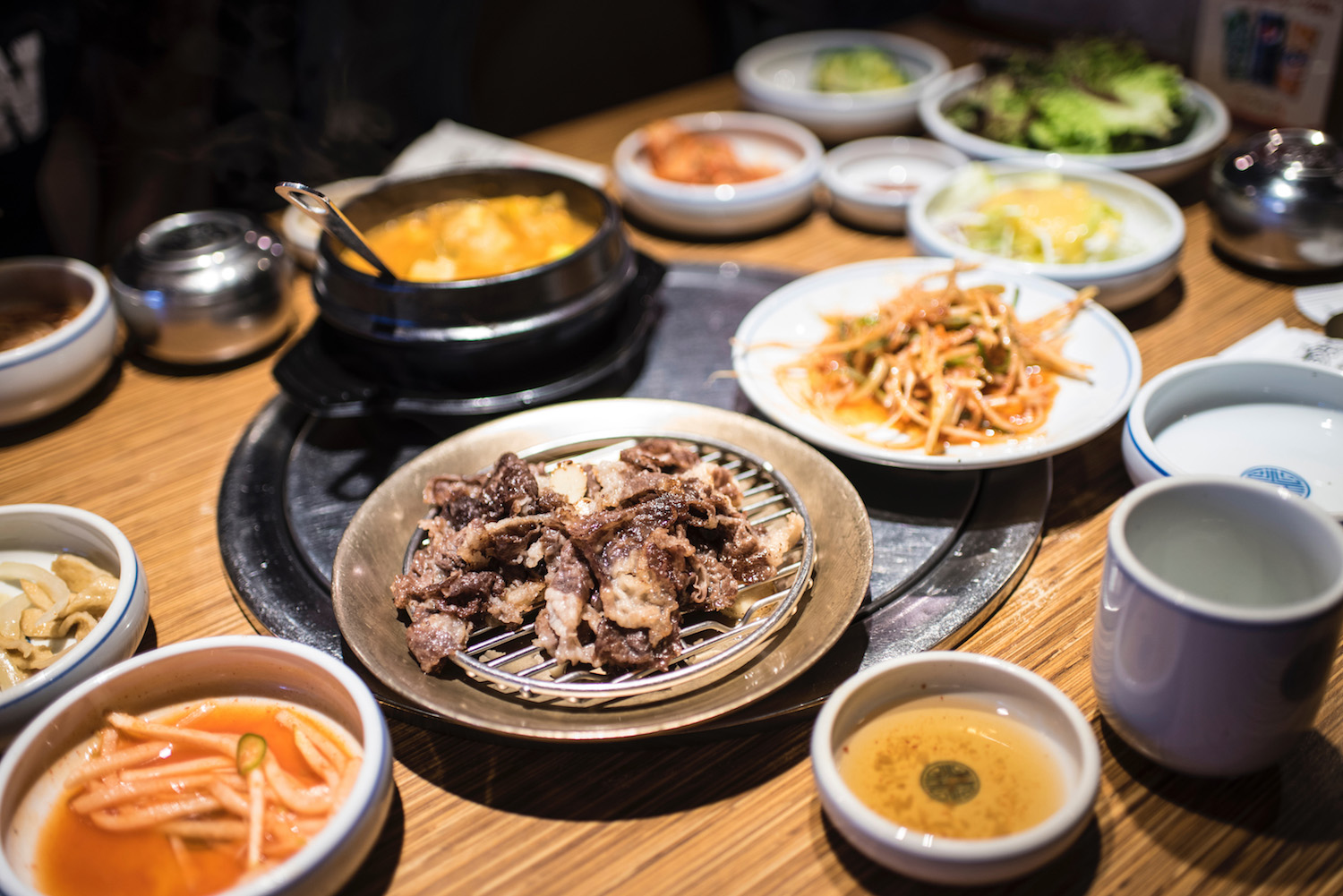
Whether you travel from South Korea to Japan or vice-versa, you’re in for a culinary treat. Largely, I would say that Japan’s cuisine is more diverse , ranging from delicate dishes like sushi and sashimi to down-home comfort food like tonkatsu fried pork cutlet and ramen noodle soup. Korean food has some range too (beyond kimchi and bibimbap , you can enjoy kimbap rolls and dakgangjeong fried chicken), but I still give the nod to Japan overall in this category.
Destinations in Korea and Japan
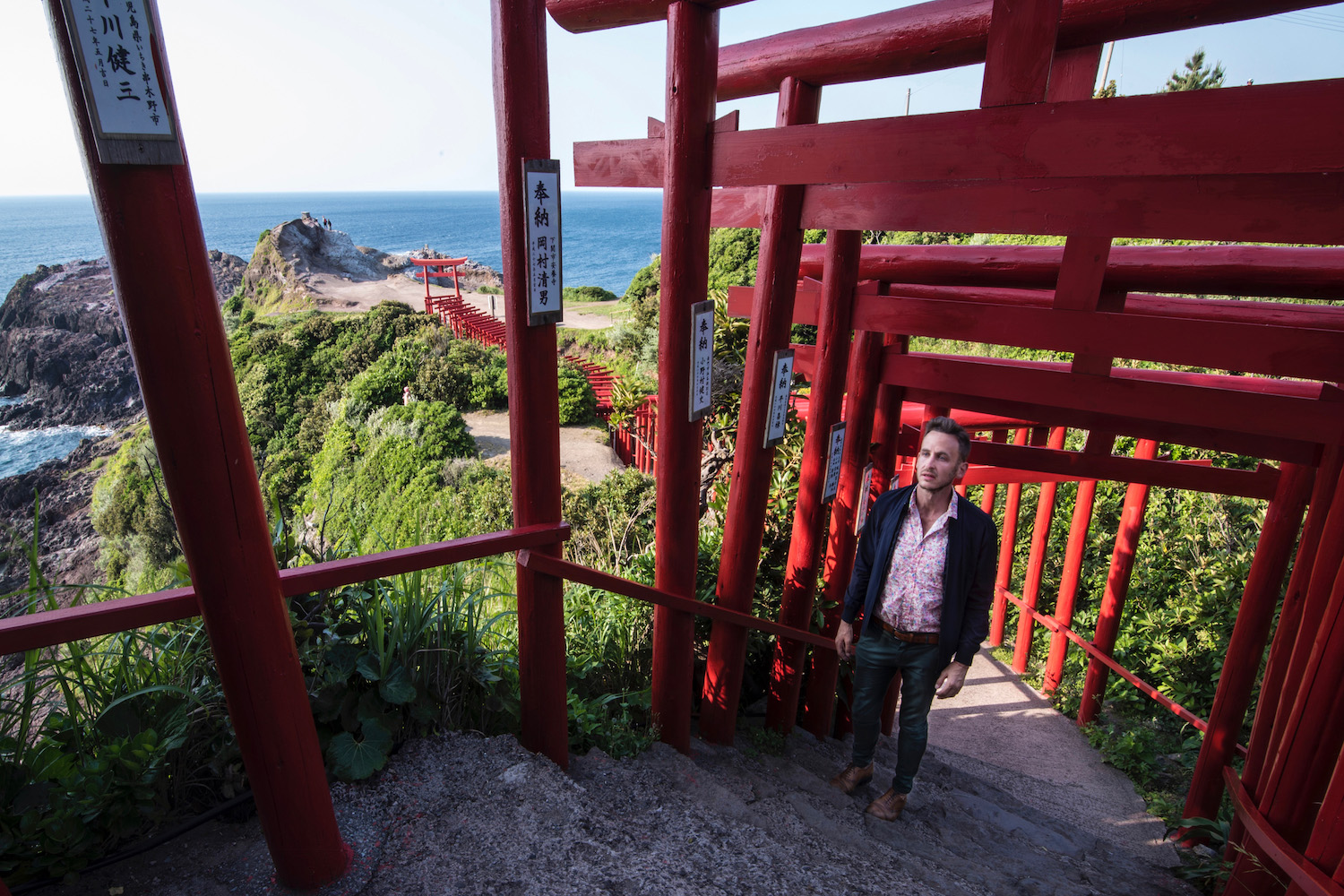
Comparing Korea or Japan in terms of destinations (and experiences), there is simply no contest: Japan wins hands down! Japan destinations , for example, span several exciting regions: Tohoku , Kanto , Chubu , Kansai and Chugoku ; as well as the islands of Hokkaido , Kyushu and Shikoku ; and the Okinawa archipelago. While I’ve slowly come to realize that Korea is more than just Seoul and Busan as time has passed, it’s just got nothing on Japan in the variety department.
Cost of Travel in Japan vs Korea
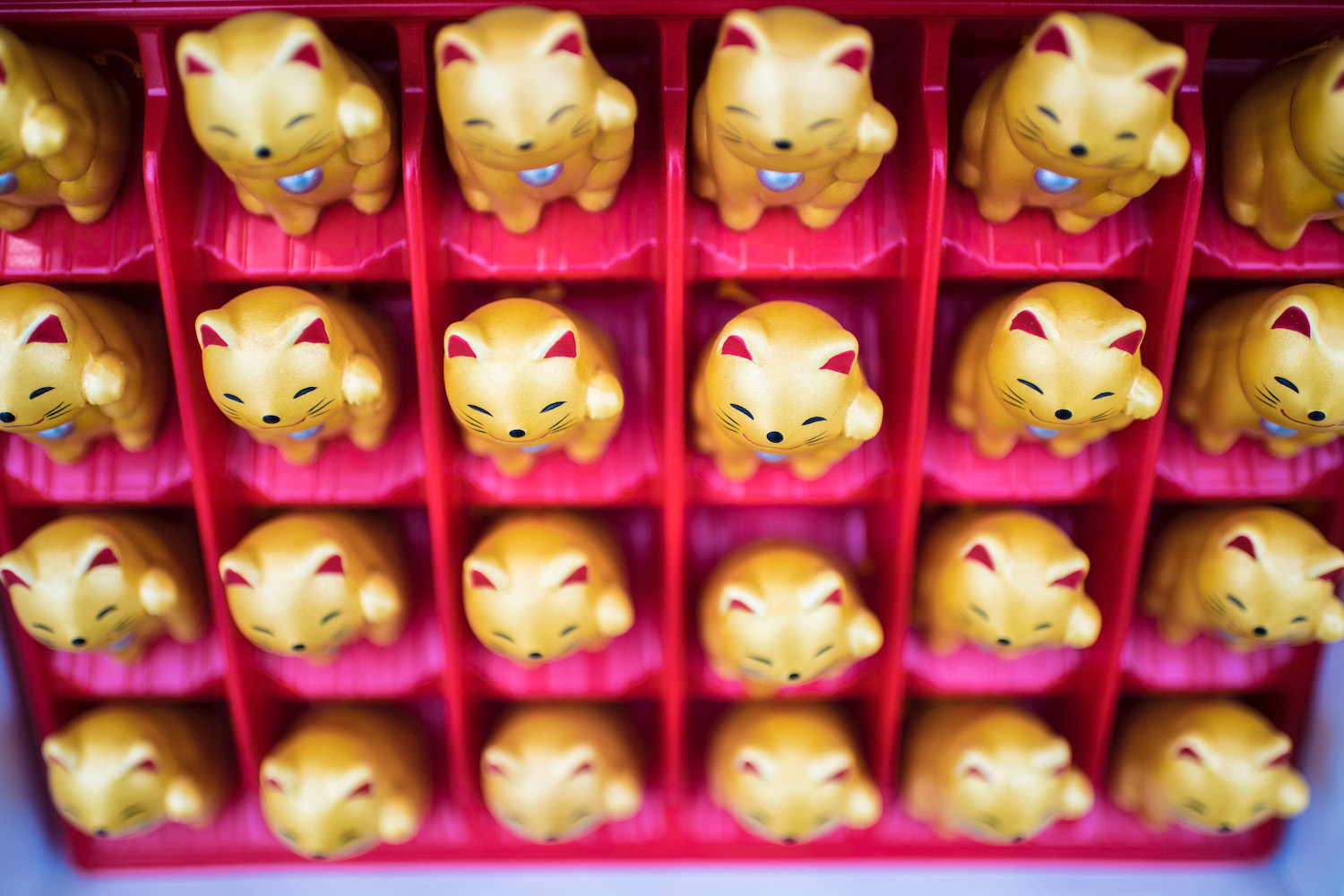
Is Korea expensive? Of course it is—and so is Japan. However, while prices of some things like city hotels (say, Tokyo’s Hotel Felice Akasaka and Makers Hotel Seoul ) tend to be pretty congruent, I would generally say that Korea is slightly cheaper. Korea’s smaller cities and towns, for example, are significantly cheaper than major metro areas; this is not the case in Japan. On the other hand, Korea’s paltry rail pass falls far short of the savings offered by the Japan Rail Pass .
Speaking English in Korea vs Japan
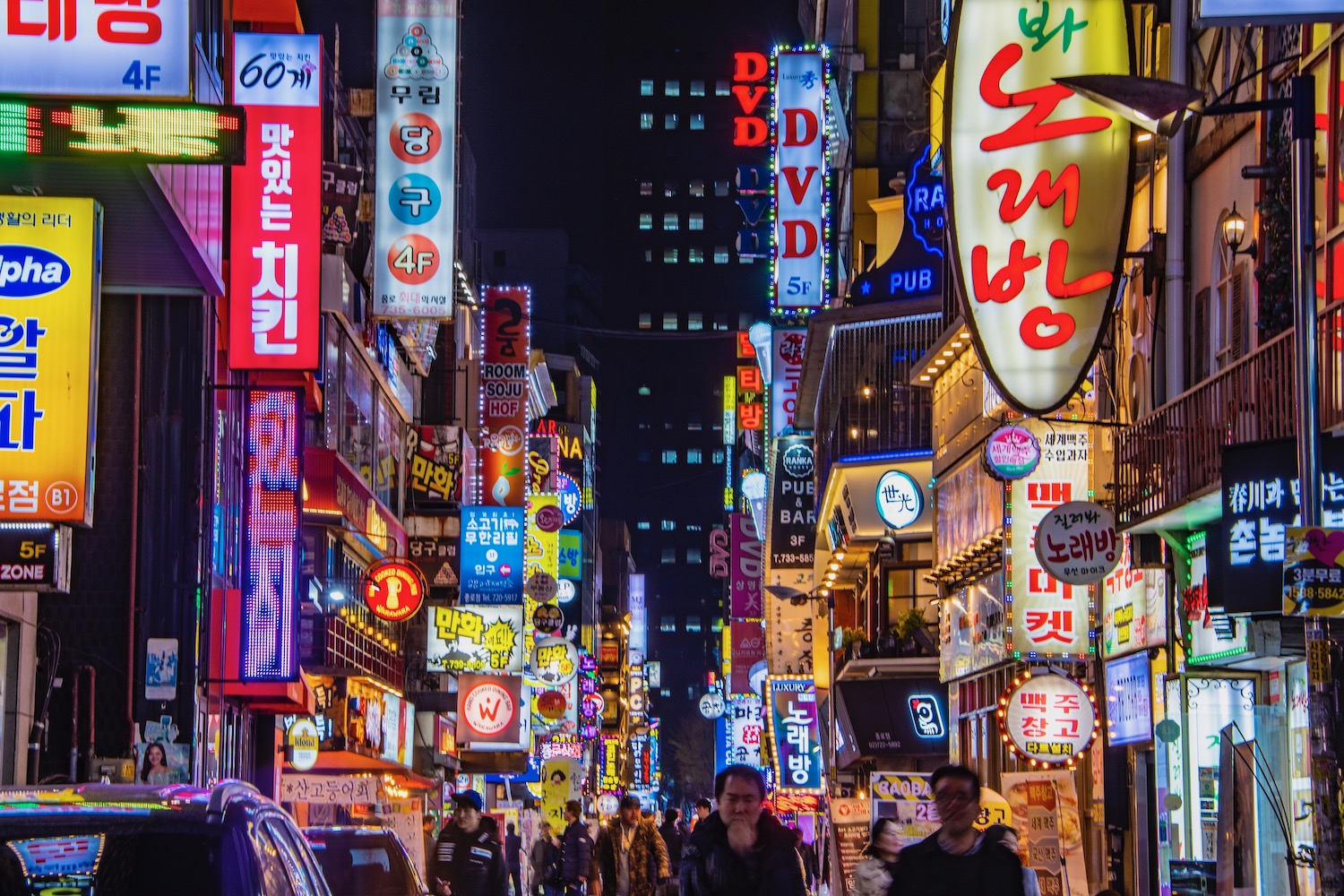
How Long to Spend in Japan and Korea
An important practical element of the discussion of Korea vs Japan travel is how long to spend in each. Japan has significantly more regions (which are significantly more interesting, and have many more destinations within them) than Korea—your trips to Japan will be longer than those to Korea out of sheer necessity.
In general, I would say that the shortest itinerary you can get away with for your first trip is 3 weeks in Japan vs about a 10 days in Korea itinerary. Naturally, this element of Japan vs Korea travel becomes less important if you’ve already visited either country, or if you’re 100% sure you’ll be able to return to either (or both) in the future.
Plan Your Trips to Korea and Japan
Regardless of what you end up deciding RE: Japan or Korea travel (i.e. whether to visit one country or both, at what time of year and for how long), planning your trip can be a whole other animal. This is at once a matter of nuts and bolts (which cities and regions in Japan do you visit, and how do you structure your food trip to Korea) as it is an esoteric question: How do you want to feel when you step back on the plane to go home, and how do you translate that into an itinerary?
Other FAQ About Korea vs. Japan
How is korea different from japan.
The main difference between Korea vs Japan, in my opinion, is that technology is slightly more important than tradition in Korea, while slightly less so in Japan. Additionally, while both Korea and Japan are relatively xenophobic countries, I feel that the Japanese tend to tolerate foreigners better, at least in public.
Is Japan richer than Korea?
Although Japan has a higher GDP (and GDP per capita) than Korea, I don’t necessarily think that Japan feels richer than Korea in reality. There’s a certain austere manner to the Japanese, and a very profound level of dilapidation in some more rural prefectures, even in smaller cities—you don’t see this in Korea. This isn’t as obvious in Korea vs Japan travel, of course, as it is if you live in either country.
Is South Korea cheaper than Japan?
Honestly, this depends on which aspect of Japan vs Korea travel you’re talking about! While hotels in Korea are perhaps cheaper than those in Japan on an absolute basis, I think the value of Japanese hotels (at least in major cities) is better. Korea is cheaper than Japan, but Japan offers more richness as a travel destination.
The Bottom Line
Japan or Korea—which is better for holiday? The question of South Korea vs Japan travel is a contentious one—even before broaching the topic of travel, and to say nothing of the Seoul vs Tokyo debate. But while both of these countries offer travelers a great deal of return-on-investment, they’re not the same, whether because of practical factors like the cost of travel in either, or the historical and cultural differences that underlie both ancient and modern tensions between their people. Taking a short trip to Asia, but want to squeeze Korea and Japan into your itinerary? Hire me as your Travel Coach!

Subscribe to email updates!
Words, images and design ©2009-2024 Robert Schrader, All rights reserved. Read Privacy Policy or view sitemap .
East Asia Two Weeks Itinerary: South Korea, Taiwan and Japan
East Asia Essentials: Seoul, Busan, Taipei, Osaka, Kyoto and Tokyo
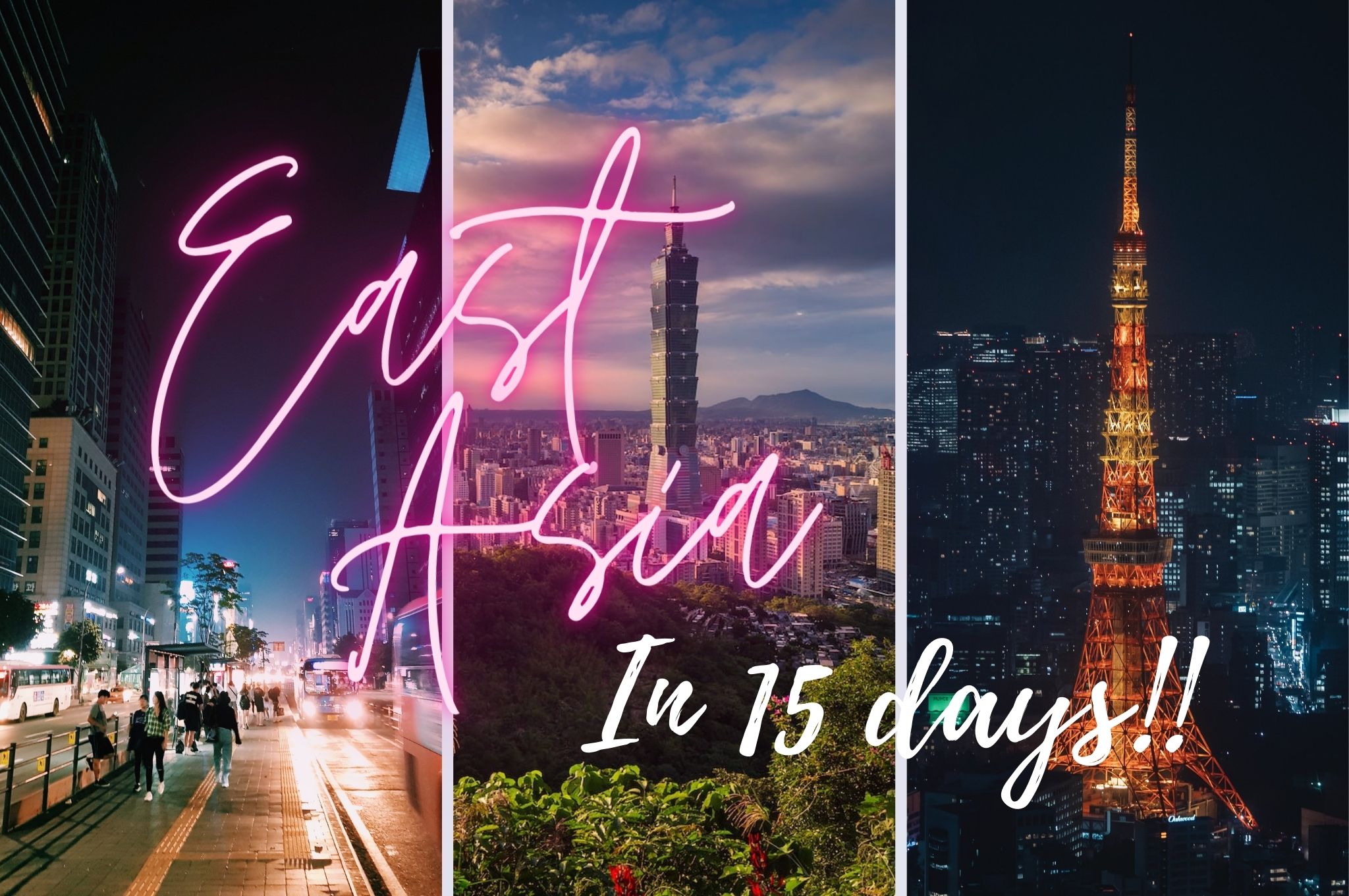
An epic 15-day adventure through some of East Asia’s most exciting destinations! Explore the bustling streets of Seoul and Busan, soak up the culture and history of Taipei and Kyoto, experience the futuristic cityscape of Tokyo, and much more! This itinerary will take you on a journey through three diverse and fascinating countries: South Korea, Taiwan, and Japan. Get ready to fire up your wanderlust, eat amazing food, and make unforgettable memories on this trip of a lifetime!
Days 1-2: Seoul, South Korea
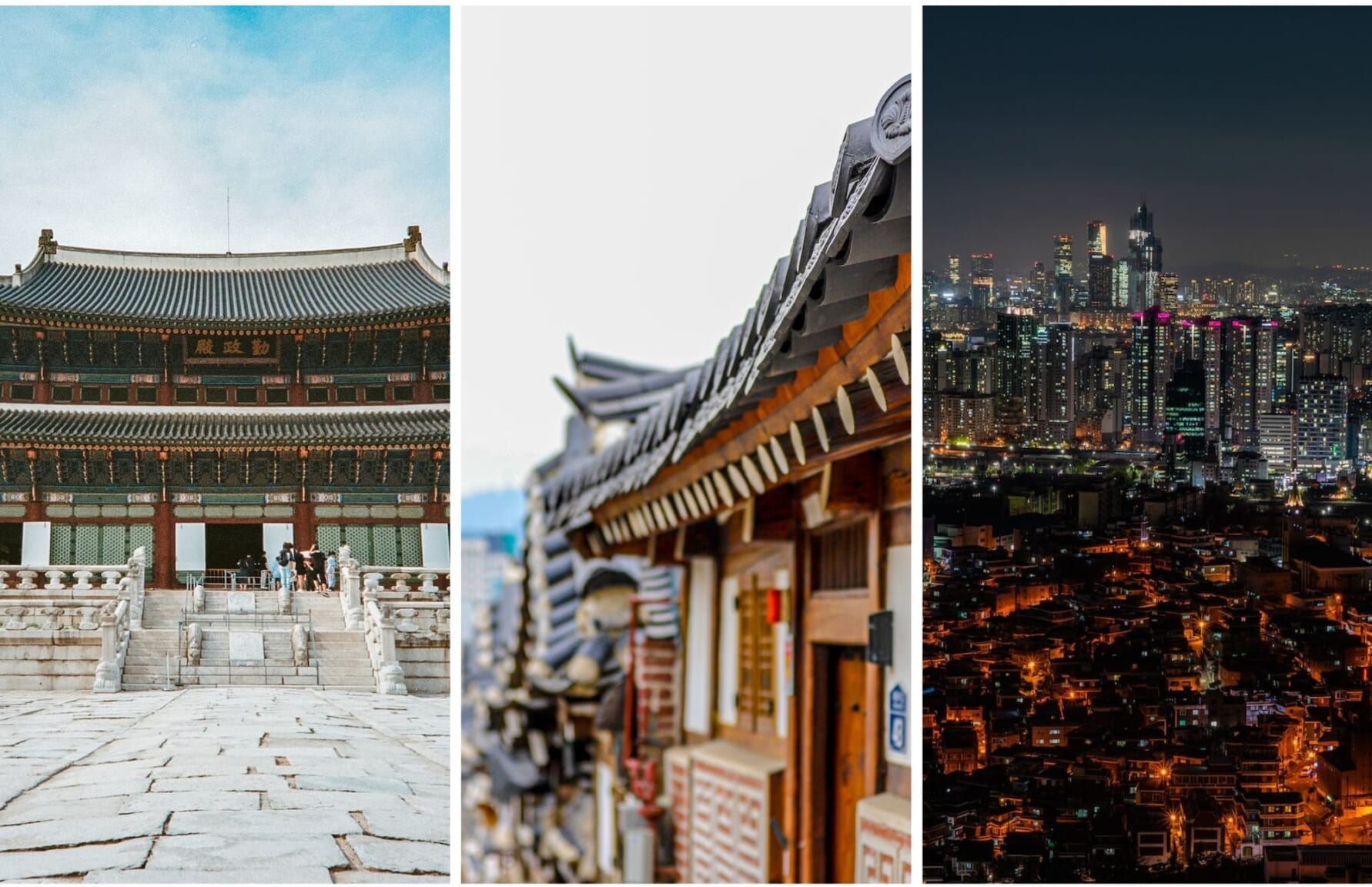
After your visit to the palace, head to nearby Bukchon Hanok Village , a charming traditional Korean neighborhood filled with hanok (traditional Korean houses). You can wander the streets and admire the architecture, and even try on traditional Korean clothing, called hanbok, for a fun photo opportunity.
In the afternoon, head to Namsan Tower , a landmark tower atop Namsan Mountain reachable by cable car that offers stunning panoramic views of the city, and also several attractions and restaurants to explore.
▽More things to do in Seoul!▽
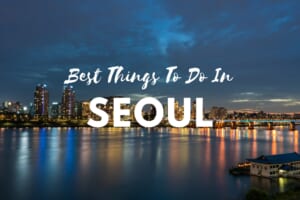
After shopping, visit the nearby Gwangjang Market , one of the oldest and largest traditional markets in Seoul. Be sure to try some Korean street food, such as tteokbokki (spicy rice cakes), kimbap (seaweed rice rolls), and hotteok (sweet Korean pancakes).
In the evening, dive into one of Seoul’s vibrant neighborhoods for nightlife, such as Hongdae or Gangnam . Hongdae is known for its indie music scene, street performances, and clubs, while Gangnam is known for its upscale bars and clubs.
Days 3-5: Busan, South Korea
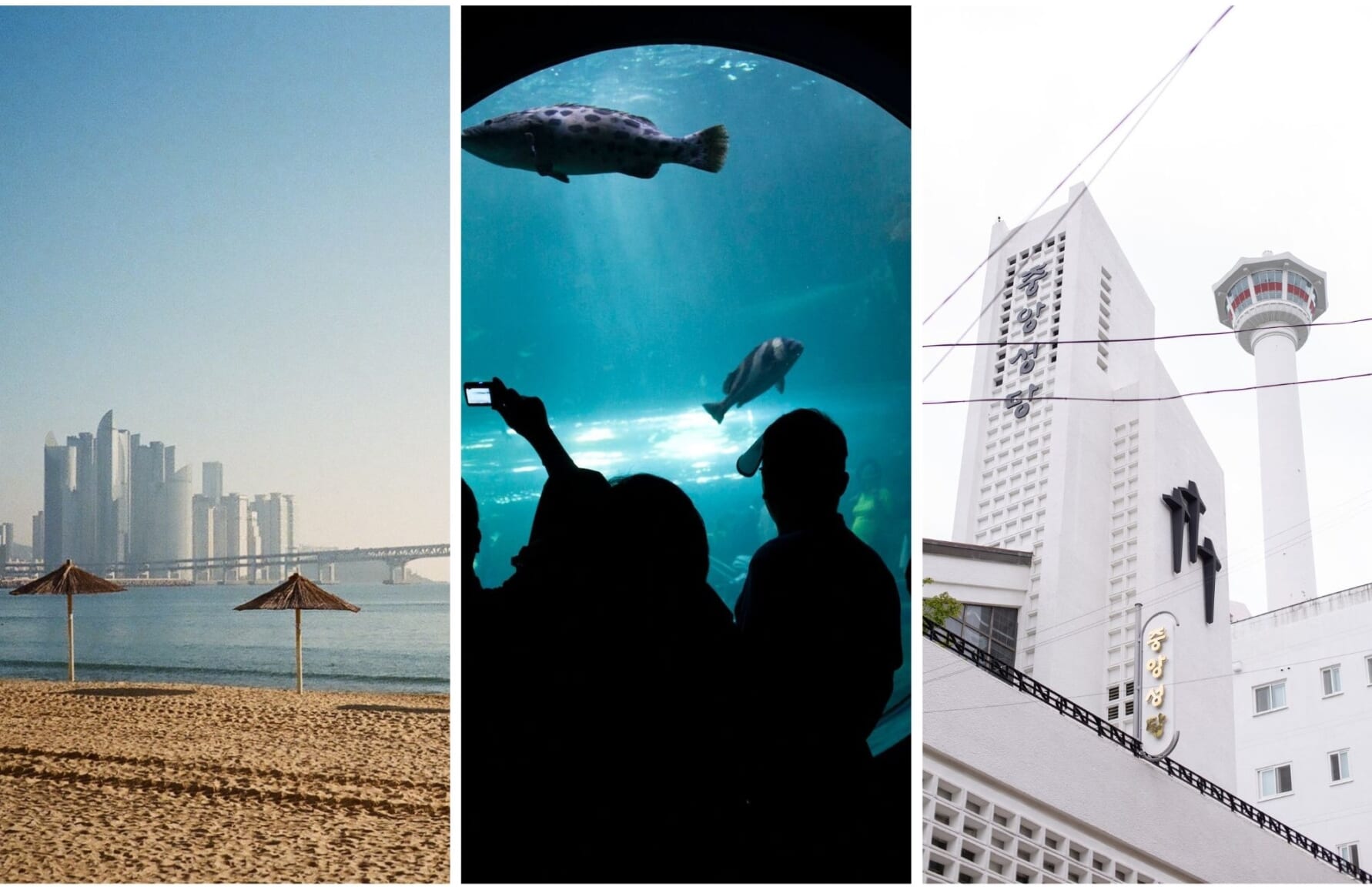
In the afternoon, head to Busan Tower , a landmark tower that offers stunning panoramic views of the city. You can take the elevator to the top of the tower to enjoy the view, and there is also a museum and observation deck to explore.
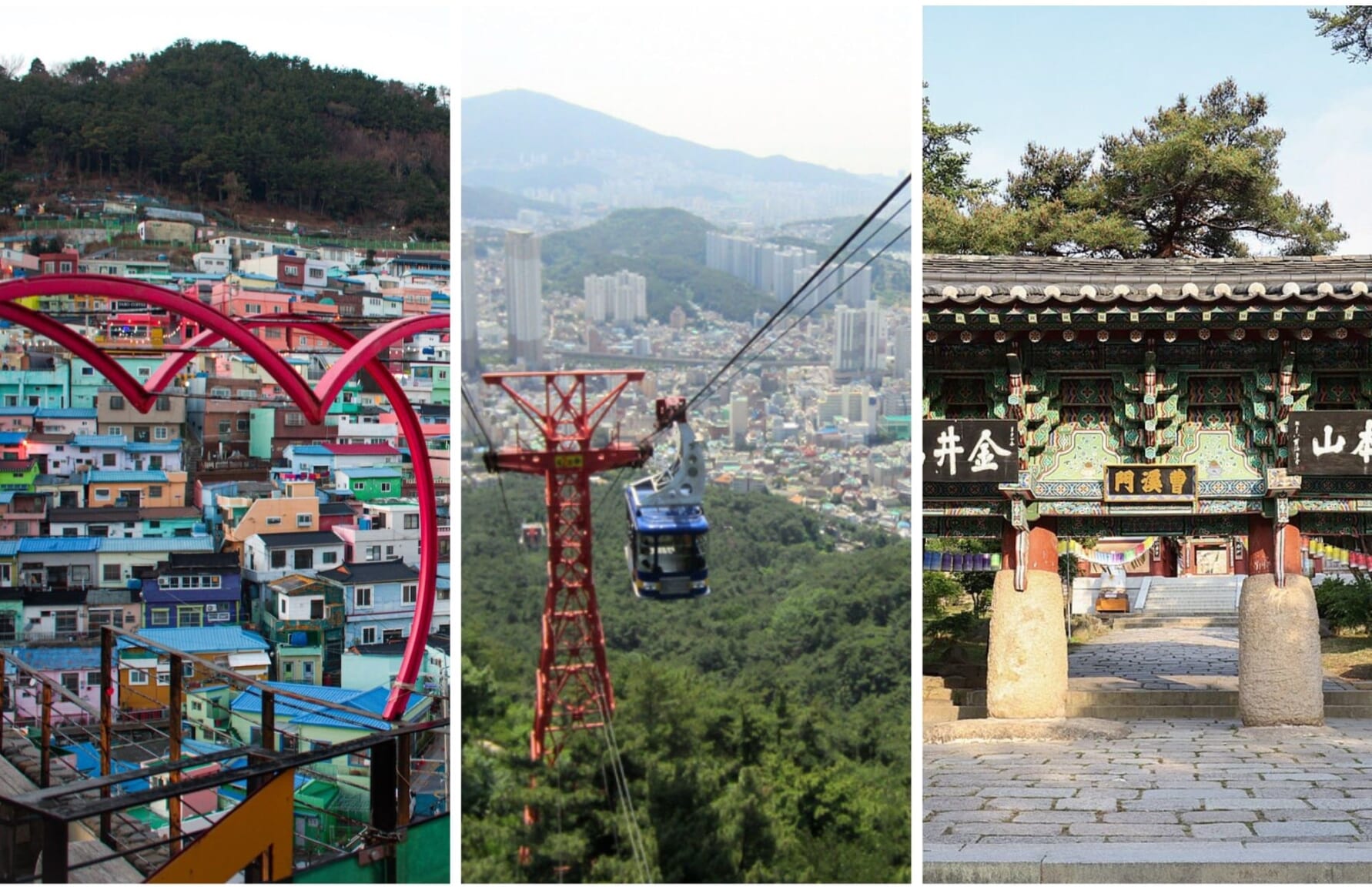
After visiting Gamcheon, go to Beomeosa Temple , a historic Buddhist temple located in the foothills of Geumjeongsan Mountain , which can be accessed by cable car. The temple was first built in the 7th century and has been destroyed and rebuilt multiple times. You can explore the different halls and buildings, and enjoy the serene surroundings of the temple.
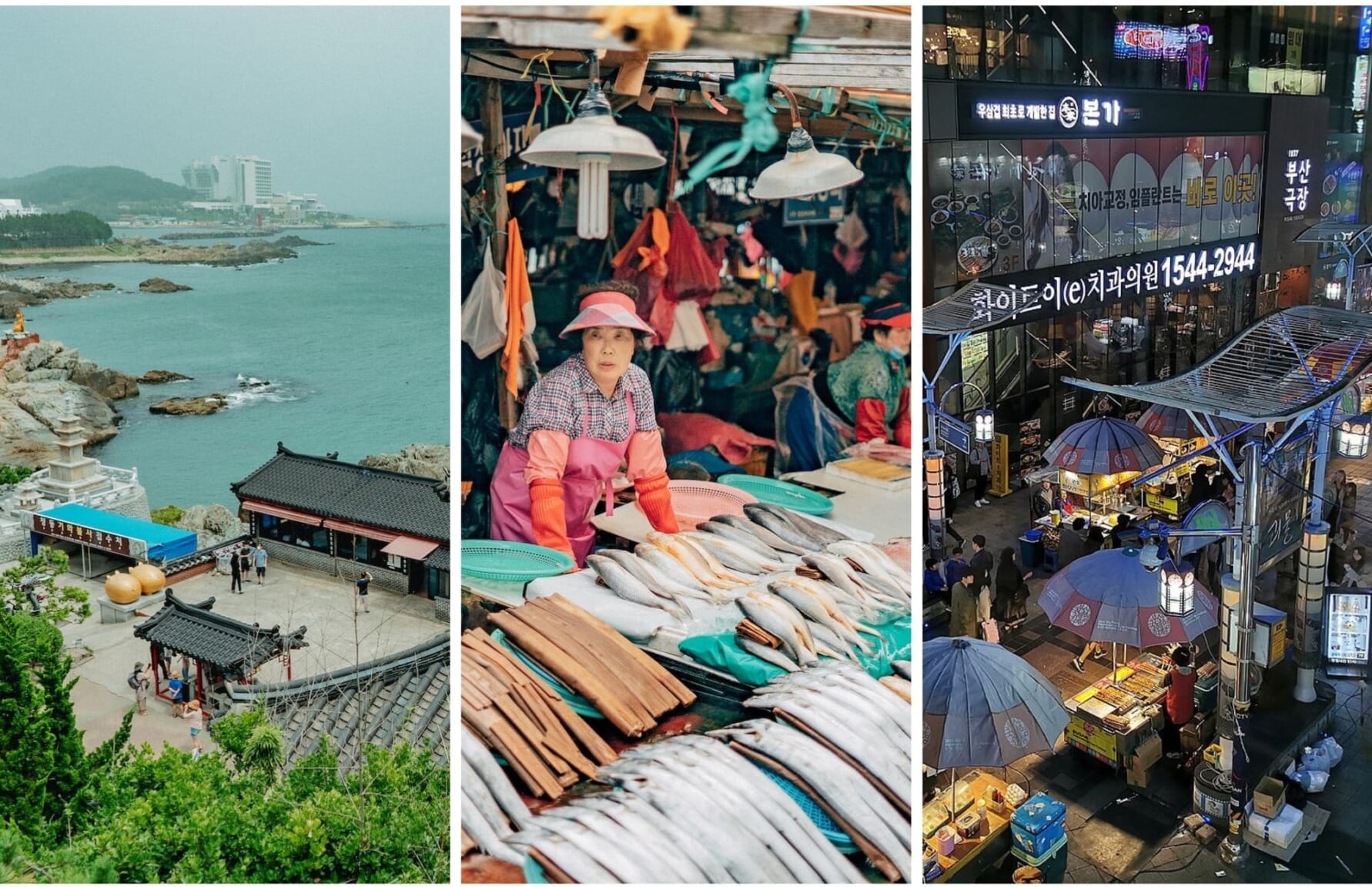
In the afternoon, you can go to one of Busan’s other attractions, such as Jagalchi Fish Market or Gukje Market , to experience the local culture and cuisine. Jagalchi Fish Market is the largest seafood market in South Korea, and you can try fresh seafood at one of the on-site restaurants. Gukje Market is a traditional market with a variety of goods, from clothing to food to electronics. Be sure to try some of the local street food, such as hotteok (sweet pancakes) and ssiat hotteok (sweet pancakes filled with seeds).
Days 6-8: Taipei, Taiwan
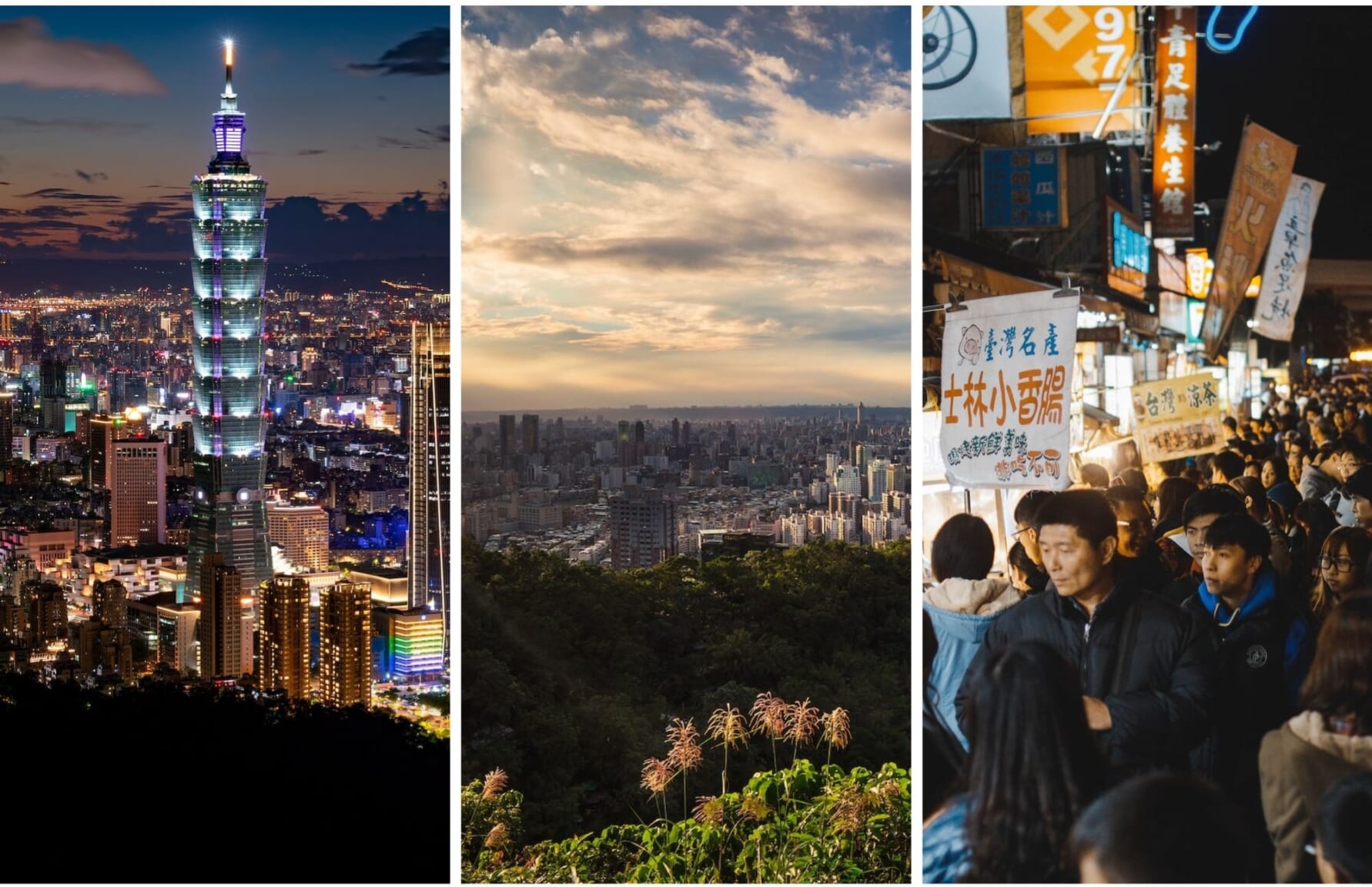
After your visit to Taipei 101, head to the nearby Elephant Mountain for a hike and even better views of the city. The hike is moderate in difficulty and takes about 30 minutes to reach the top. Be sure to bring water and wear comfortable shoes.
In the evening, visit Shilin Night Market , one of Taipei’s most famous and lively night markets. You can find a variety of food, from stinky tofu to fried chicken cutlets, as well as games and souvenirs.
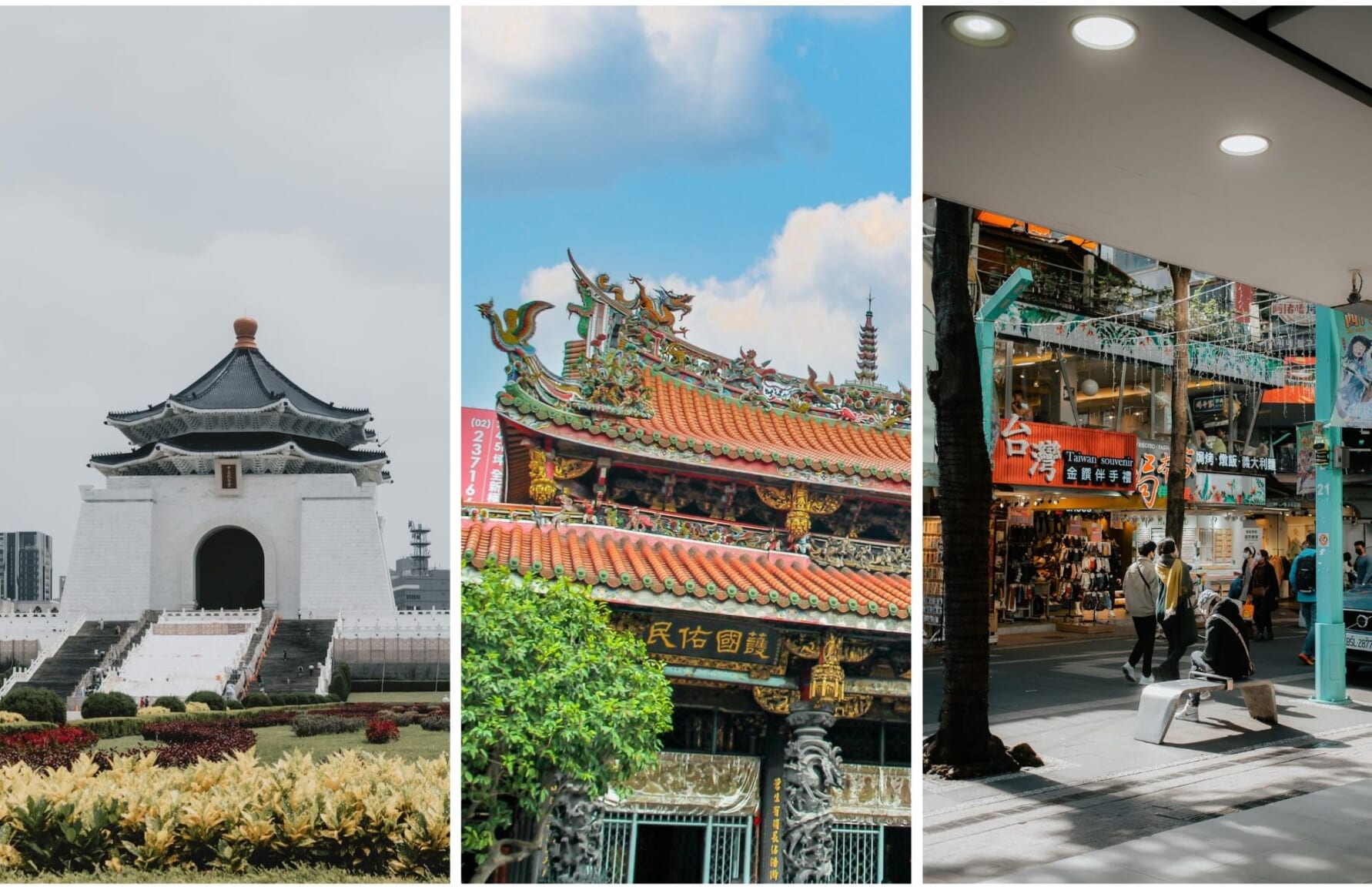
After your visit to the memorial hall, head to Longshan Temple , one of Taipei’s oldest and most famous temples. The temple was first built in the 18th century and features a mix of Buddhist, Taoist, and Confucian elements. You can explore the different halls and courtyards, and even make a wish at the wishing pond.
In the afternoon, visit the trendy Ximending neighborhood for shopping and entertainment. You can find a variety of shops, from local boutiques to international brands, as well as restaurants and cafes. Be sure to also check out the street performers and live music.
Start your day by visiting the National Palace Museum , one of the largest and most comprehensive museums of Chinese art and artifacts in the world. The museum houses over 700,000 pieces of ancient Chinese imperial artifacts and artwork, including paintings, calligraphy, ceramics, and jade.
In the afternoon, visit Beitou Hot Springs , a popular spot for relaxation and rejuvenation. The hot springs are located in a scenic area surrounded by mountains and forests. You can soak in the natural hot springs or visit one of the public or private hot spring spas in the area.
In the evening, visit the Raohe Night Market , another popular and bustling night market in Taipei. You can find a variety of food, from oyster omelets to pork buns, as well as games and souvenirs. Be sure to try some of the local specialties, such as black pepper buns and Taiwanese-style fried chicken.
Days 9-11: Osaka-Kyoto, Japan
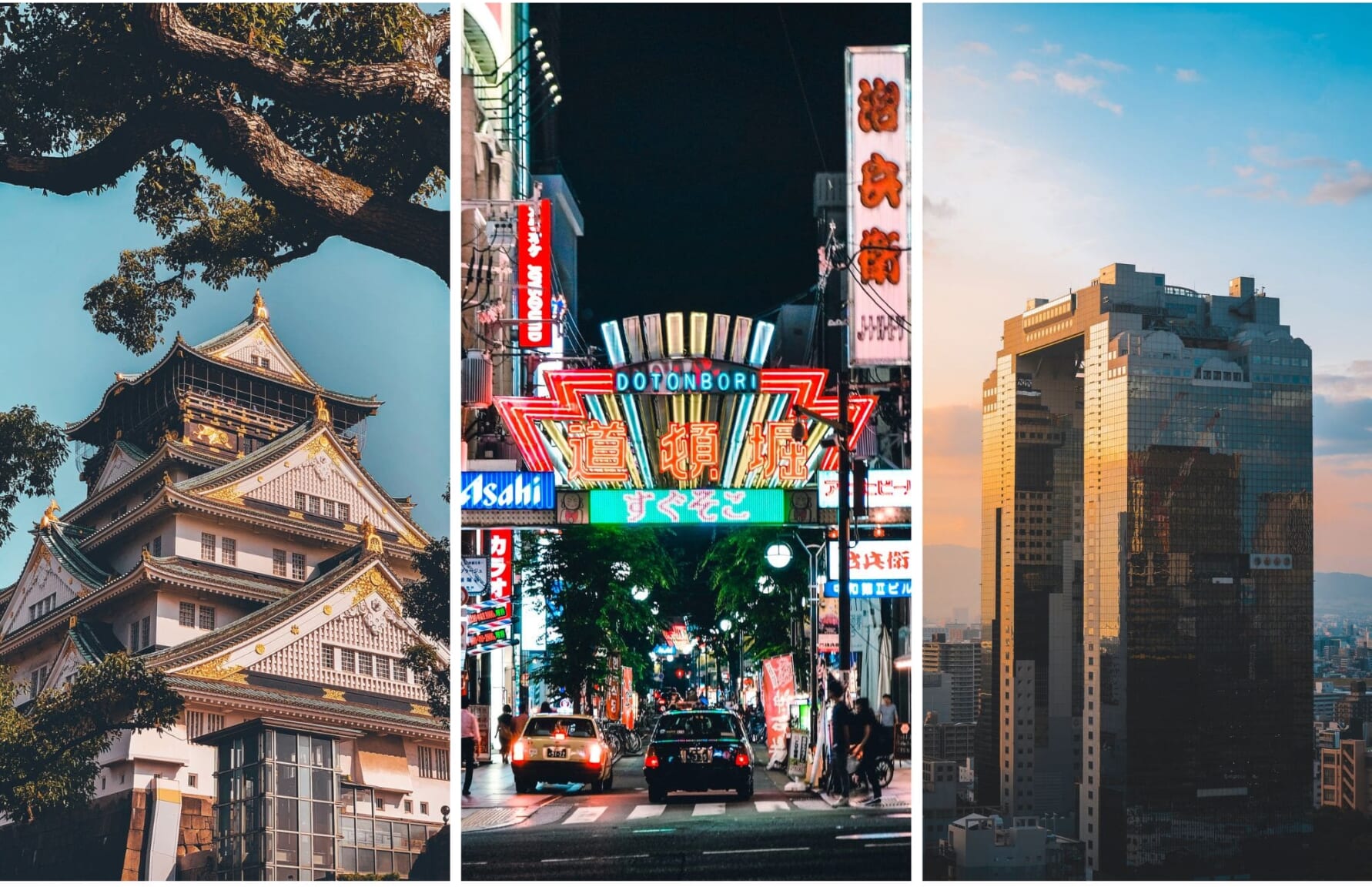
Afterward make your way to Dotonbori , a famous shopping and entertainment district in Osaka. This area is known for its bright neon lights, large billboards, and a wide variety of street food vendors where you can eat to your heart’s content the local specialties like takoyaki and okonomiyaki, and shop for souvenirs.
Make sure you visit Umeda Sky Building before sunset, so you can enjoy the stunning views of the city and see the sunset from the observatory deck. You can finish the day at the nearby Hankyu Umeda Station, with an enormous underground shopping center with lots of restaurants and entertainment options.
For more information about the best things you can do in Osaka, check the following article:

Then, head to Arashiyama , a district on the western outskirts of Kyoto. You can walk through the picturesque bamboo forest, visit the Tenryu-ji temple, and take a boat ride down the Hozu River. The district also has a popular shopping street with local souvenirs and snacks.
In the evening, visit the Gion district to experience Kyoto’s traditional geisha culture. You can stroll through the narrow streets lined with traditional wooden buildings, and try to catch a glimpse of a geisha or maiko (apprentice geisha) on their way to a performance.
For more information about what to do around Gion, check the following article:
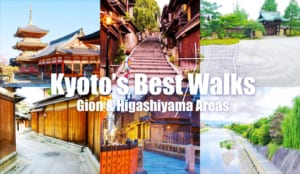
After your visit to Fushimi Inari Taisha, head to Nishiki Market , a long and narrow covered market in central Kyoto. You can find a variety of local foods and goods, including fresh seafood, pickles, and sweets. Be sure to try some of the local specialties, such as Kyoto-style sushi and matcha-flavored snacks.
In the afternoon, visit the Higashiyama district to see more of Kyoto’s traditional architecture and culture. You can walk through the historic streets, visit the Kiyomizu-dera temple, and enjoy the view from the temple’s wooden balcony.
For more information about what to do in Kyoto, check the following article:
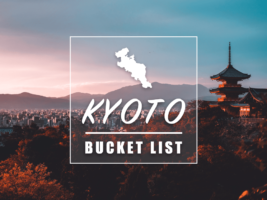
Days 12-14: Tokyo, Japan
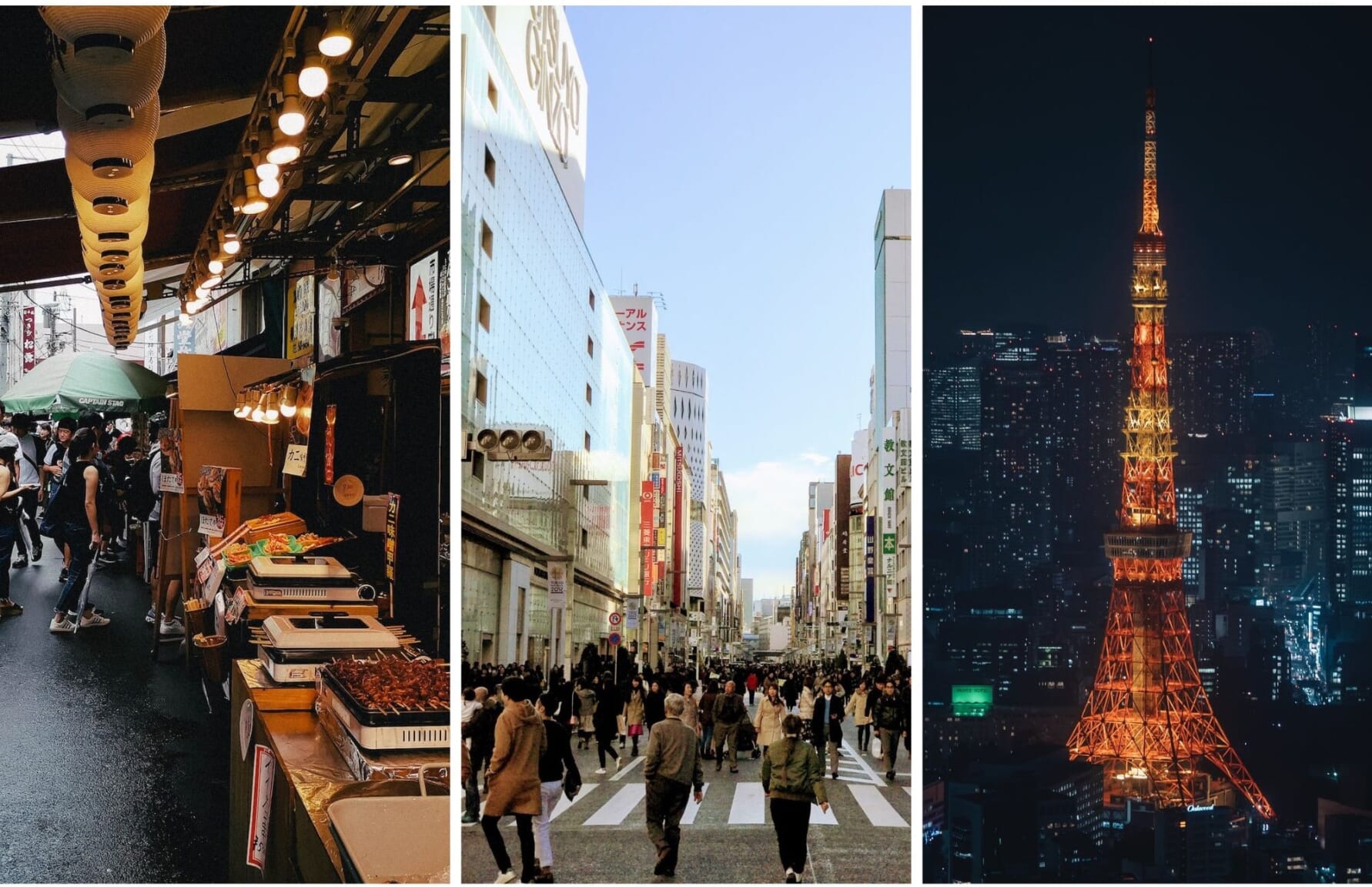
After your visit to the Tsukiji Fish Market, go to Ginza , Tokyo’s famous shopping mecca. It’s a chic and upscale district famous for its high-end boutiques, restaurants and department stores. There are also historic landmarks such as the Kabuki-za theater and the Imperial Palace is within walking distance.
In the evening, visit the Roppongi district, a popular nightlife spot with a variety of restaurants, bars, and clubs. You can also visit the Mori Art Museum in Roppongi Hills or the Tokyo Tower for a panoramic view of the city at night.

After your visit to Senso-ji, go to Akihabara , also known as Electric Town, famous for its many electronics shops and anime/manga merchandise stores. You can visit one of the many themed pop-up cafes and explore the different shops for quirky and fun items.
In the evening, visit the Odaiba district, a man-made island in Tokyo Bay with a variety of shopping malls, amusement parks, and museums. You can also enjoy the view of the Rainbow Bridge and Tokyo Tower from the waterfront.
If the energy allows it, try to go as early as possible, after daybreak, to Meiji Shrine , a Shinto shrine dedicated to the deified spirits of Emperor Meiji and his consort Empress Shoken. The peaceful surroundings with the sound of the morning prayers will be worth it. The shrine is located in a large forested park, and you can walk through the woods and see the traditional architecture of the shrine buildings.
After your visit to the Meiji Shrine, head to Shibuya , a bustling commercial and entertainment district famous for its Shibuya Crossing, one of the busiest pedestrian crossings in the world. You can also visit the Hachiko statue, a popular meeting spot for locals and tourists alike.
In the evening, visit Shinjuku , another popular entertainment district with a variety of restaurants, bars, and shops. You can also visit the Tokyo Metropolitan Government Building, which has observation decks with panoramic views of the city.
For more information about the best things to do in Tokyo, check the following article:
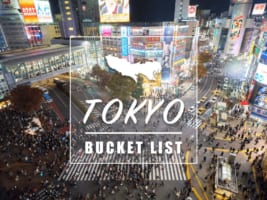
Day 15: Depart from Tokyo, Japan
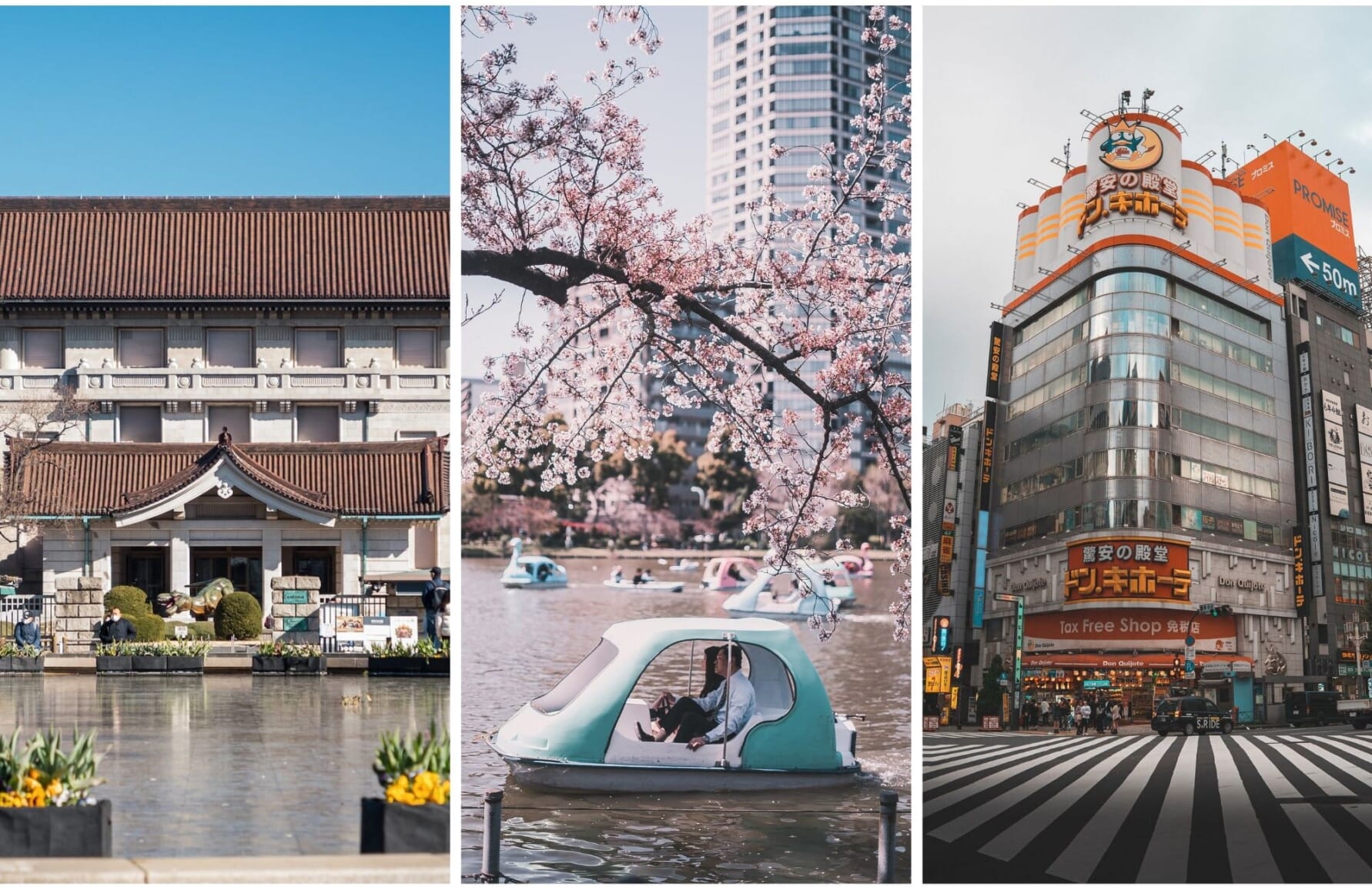
If you have some time in the morning, you could visit the Tokyo National Museum , which houses a large collection of Japanese art and artifacts or just take a relaxing stroll around Ueno Park .
After your final activities in Tokyo, make your way to the airport to catch your flight home. Depending on your flight time, you may need to leave for the airport quite early, so be sure to plan accordingly.
Overall, this 15-day itinerary should give you a great overview of some of the best sights and experiences that South Korea, Taiwan, and Japan have to offer. Of course, there are many other great destinations to explore in each country, so if you have more time, be sure to check out some additional places as well!
For more information about traveling around Japan, check out the following articles!
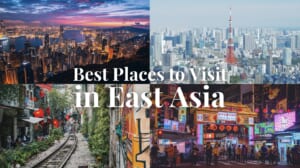
▽Related Articles▽
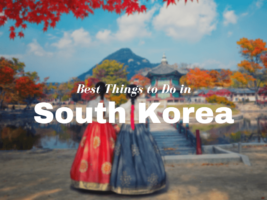
▼Editor’s Picks▼
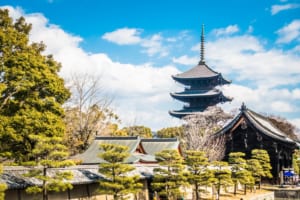
Photographer, journalist, and avid urban cyclist, making sense of Japan since 2017. I was born in Caracas and lived for over 10 years in Barcelona before moving to Tokyo. Currently working towards my goal of visiting every prefecture in Japan, I hope to share with readers the everlasting joy of discovery and the neverending urge to keep exploring.

South Korea & Japan: Seoul to Tokyo

You have up to 60 days to get a full refund
Feel good about putting a tour on the calendar today: Enroll in AutoPay or pay in full when you book, and if you change your mind, you’ll get your money back .†
Two sought-after countries. Twice the cultural cachet.
On the global pop culture scene, South Korea’s star has steadily risen in recent years. That’s thanks in part to sensationally popular Korean TV shows and films, foods, beauty trends, and pop bands that have taken the world by storm—and piqued travelers’ curiosity about the country in the process. Korea’s easterly neighbor, Japan, offers up rich history, cultural immersion, and impeccable hospitality that’s always in high demand. Spend two weeks getting to know these neighboring Asian nations, from their neon-lit cities to their rural villages to their serene, natural landscapes. If you want to venture a little farther off the beaten path, extend your tour and explore Hokkaido, Japan’s mountainous, northernmost island.
Your tour package includes
- 13 nights in handpicked hotels
- 13 breakfasts
- 4 dinners with beer or wine
Included highlights
- Gyeongbokgung Palace in Seoul
- Visiting with Buddhist monks at Bulguksa Temple
- UN Memorial Cemetery in Busan
- Gamcheon Culture Village in Busan
- Kushida-jinja Shrine in Fukuoka

An expert specializing in tours of this region is here to help.
Day-by-day itinerary

Board your overnight flight to Seoul today.
Welcome to South Korea! Settle in to your hotel this evening.
Meet up with your local guide and get to know South Korea’s capital city, Seoul. Situated in the northwestern reaches of South Korea, the thriving metropolis is home to modern skyscrapers, ornate Buddhist temples, grand palaces, and nearly 10 million residents. It’s also the perfect place to experience many of the fun and dynamic Korean cultural trends—from K-pop music to novelty foods—that have flourished around the world throughout the last decade.
- Step inside the 14th-century, 7,700-room Gyeongbokgung Palace, which was built by King Taejo and is widely considered the most beautiful of Seoul’s five grand palaces.
- Watch the Palace Royal Guard Changing Ceremony, a reenactment of the guard-changing procedure that took place during the Joseon dynasty; the ceremony features colorful reproduction costumes, as well as instruments and weapons, based on historical records.
- Visit the National Folk Museum of Korea to learn about traditional ways of life, which are rapidly disappearing as a result of modernization and urbanization.
- Enter bustling Gwangjang Market, the city’s oldest traditional market, where you’ll find everything from street food to silks to hanbok—traditional Korean clothing whose origins date back more than 2,000 years.
- Enjoy a tasting of the market’s not-to-be-missed street food, followed by free time to shop and explore on your own.
- Get to know your fellow travelers over an included welcome lunch, served with beer or wine.
Enjoy a free evening in Seoul or add an excursion.

Kimchi-Making Class & Dinner
From $155 per person
Enjoy a free day in Seoul or add an excursion.

History of the Korean War: DMZ Visit
From $119 per person
Board a high-speed bullet train bound for the city of Gyeongju. Often referred to as the “museum without walls,” Gyeongju is home to several impressive archaeological sites and three UNESCO World Heritage sites.
- Climb aboard your coach for a short transfer to Bulguksa Temple; the treasured head temple of the Jogye Order of Korean Buddhism was established on the slopes of Mount Toham in the eighth century.
- Explore the temple with a monk as your guide, then choose to make prayer beads or a lotus flower lantern.
Sit down with your group this evening for an included dinner served with beer or wine.
Spend the morning exploring the Daereungwon Tomb Complex, the final resting place of nobility of the Silla Kingdom, or Golden Kingdom, which ruled from 57 B.C.–935 A.D. You’ll have a chance to enter one of its burial mounds and view some of the 11,000 artifacts and royal crowns that showcase the lavish lifestyles of Korean royalty.
Later, travel to the mountainous, seaside city of Busan, where you’ll visit the United Nations Memorial Cemetery. Learn about the history and impact of the Korean War, and pay your respects to those buried in the cemetery.
Enjoy an included dinner this evening served with beer or wine.
Meet up with a local guide to explore Busan, a dynamic port city at the southern tip of the Korean Peninsula. Home to roughly 3.5 million people, Busan is the country’s second-largest city. Here, visitors will find a little bit of everything, from bustling city streets to scenic beaches to excellent restaurants.
- Pass through the heart of the city to popular Yongdusan Park and make a photo stop at its nearly 400-foot-tall Busan Tower, which features an observation deck and cafe.
- Travel to colorful Gamcheon Culture Village and learn how it evolved from a downtrodden destination for Korean War refugees to a must-see destination known for its colorful dwellings and labyrinthine alleyways.
- Head back to the city and visit the vast Jagalchi Fish Market, whose vendors sell just about every kind of fish and seafood imaginable.
- Enjoy free time for shopping and lunch along Gwangbok-dong Cultural & Fashion Street, whose shops sell everything from bargain finds to luxury goods.

Busan Harbor Cruise & Korean Barbecue Dinner
Today, fly to Fukuoka, the largest city on Japan’s Kyushu Island. Then, join a local guide for a tour of the city, which was formed in 1889 when the castle town of Fukuoka and the port city of Hakata merged.
- Visit the eighth-century Kushida-jinja Shrine, whose highlights include a fountain where people pray for eternal youth.
- Learn about the shrine’s famous Hakata Gion Yamakasa Festival, which takes place every July and culminates with residents of seven Hakata neighborhoods racing beautifully decorated floats along a three-mile course through the city.
- Wander along the Naka River to Nakasu, a small island packed with stalls selling street foods such as Hakata ramen and yakitori.
Head to a local restaurant this evening for an included dinner, served with beer or wine.
Travel to Nagasaki this morning and meet up with your local guide. Set out to explore the area, which was Japan’s early gateway to trade with the West, as well as the target of an atomic bombing by the United States in 1945. Today, the area’s unspoiled beaches and islands attract swimmers, divers, and sea kayakers.
- Visit Nagasaki Peace Park, which serves as both a symbol of hope and a reminder of the horrors of war.
- Explore the Nagasaki Atomic Bomb Museum’s exhibits, which shed light on the city’s devastating history and post-war life.
- Sit down for an included lunch this afternoon at a local restaurant.
- Set off on a walking tour through the city, including its cosmopolitan center, as well as historic neighborhoods, like Dejima, which was constructed in the 17th century as a man-made island to segregate Portuguese residents from the Japanese population.
Board a high-speed bullet train to Kyoto this morning. Then, get to know the city that served as the capital of Japan for more than 1,000 years and is still considered its spiritual capital.
- Start in western Kyoto’s historic Arashiyama district, which is known for its temples, shrines, and stunning natural beauty.
- Step inside the UNESCO-listed Tenryū-ji temple, which was originally constructed in the 12th century and is considered one of Kyoto’s most important sites.
- Wander through the famous and photogenic Arashiyama Bamboo Grove, whose towering, 160-foot-tall bamboo stalks flank a singular pathway.
- Take in views of the rolling, tree-covered hills that surround the Hozu River.
- Cross the wooden Togetsukyo Bridge, which was originally built more than 1,200 years ago and stretches nearly 170 feet across a river that’s known as the Hozu to the west and the Katsura to the east.
- See the famous, 14th-century Kinkaku-ji temple, widely known as the Golden Pavilion, which sits at the edge of a tranquil reflecting pond and is a UNESCO World Heritage site.
Enjoy a free day in Kyoto or add an excursion.

Fushimi Inari Walking Tour & Tea Ceremony
From $95 per person
Board a high-speed bullet train to Tokyo, then spend the afternoon exploring Japan’s bustling capital with your Tour Director leading the way. Ancient shrines and temples, peaceful parks, and modern skyscrapers make up the tapestry of the city, which is home to nearly 14 million people.
- Snap photos of the Imperial Palace, which occupies the site of the original Edo Castle and is home to Japan’s emperor; its impressive grounds feature moats and massive, stone walls.
- Pass through the Shinjuku District, a major hub for shopping and nightlife with neon signs as far as the eye can see.
- Ride an elevator to the top of the Metropolitan Building—a soaring structure with twin towers and observation decks—to enjoy bird’s-eye views of the city.
Join a local guide and get to know more of Tokyo, from its historic past to its vibrant present.
- Drive through central Tokyo to iconic Shibuya crossing and snap photos of the world’s busiest crosswalk—some 3,000 people cross from all directions simultaneously during rush hour—from an elevated viewing point.
- Stop inside Shibuya Station to view “The Myth of Tomorrow,” Japanese artist Tarō Okamoto’s famous 1960s mural that depicts the explosion of an atomic bomb.
- Drive to Yoyogi Park—one of the city’s biggest public parks—and take a short walk to Meiji Imperial Shrine, the final resting place of Emperor Meiji.
- Stroll through the colorful Harajuku neighborhood, where Tokyo’s history and present-day pop culture intertwine.
- Explore Tokyo’s old town, including the ancient Asakusa Kannon Temple, the city’s oldest and most sacred temple.
- Peruse a vibrant variety of handmade crafts and local fare at the centuries-old Nakamise Shopping Arcade.
Enjoy a free afternoon in Tokyo or add an excursion.

Japanese Cooking Class & Dinner
From $125 per person
Enjoy a free day in Tokyo or add an excursion.
Celebrate your trip during a farewell dinner this evening, served with beer or wine.

Aokigahara Forest & Mount Fuji
Transfer to the airport to board your flight home, or choose to continue your adventure with a visit to Hokkaido.
Today, fly to Sapporo—the capital of Japan’s mountainous Hokkaido island and one of the country’s youngest major cities (in 1857, its population clocked in at a mere seven people). The city also played host to the Olympics in 1972. Spend the afternoon exploring the city alongside your Tour Director.
- Enjoy a comforting bowl of Sapporo’s famous ramen—the iconic Japanese noodle soup originated here—during an included lunch.
- Walk through Odori Park—the sprawling green space separates the city into north and south—and enter the iconic Sapporo TV tower, which dates back to the 1950s, and take in panoramic views of the city from the observation deck.
- Pass Sapporo’s clock tower, the city’s oldest building, as you make your way to Niko Market.
Travel to the charming harbor city of Otaru. Here, you’ll take a short walking tour alongside your Tour Director, cruise along the city’s canals, and enjoy free time to explore at your own pace.
Later, visit the local brewery and enjoy a guided tour through the brewery where you’ll learn how the best ingredients are chosen, view the fermentation process, and see how the beers are manufactured and packaged. End the tour with a tasting of fresh off-the-line beer before enjoying free time for the rest of the day.
Enjoy a free day in Sapporo or add an excursion.

Volcanic Hokkaido
From $99 per person
Board a flight back to Tokyo and transfer to your hotel. Enjoy free time for the rest of the day or add an excursion.

Tokyo Dinner & Karaoke
From $105 per person
Enjoy a free morning in Tokyo. Then, transfer to the airport to board your flight home.
Book for just $99 down
That’s all it takes to secure your spot on tour with AutoPay. Then, pay for your trip in interest-free, monthly installments.†
Hotels, flights & FAQ
This downtown hotel is located in Seoul’s vibrant Myeongdong district. Guests enjoy the fitness center, city views, and on-site cafe. Nearby you’ll fi...

This grand hotel is located in historic city of Gyeongju. Guests enjoy the beautifully manicured gardens, outdoor pools, and on-site coffee house. Nea...

This contemporary hotel is located a few minutes walk from Busan’s beautiful Haeundae Beach. Guests enjoy the fitness center, spacious rooms, and on-s...

This boutique hotel is located the vibrant Sanjo district of Kyoto. Guests enjoy the thoughtfully designed décor, on-site restaurant, and the 1867 bar...

This comfortable hotel is located on Odaiba Island, Tokyo. Guests enjoy a fitness center, restaurant, and room service. Nearby, you’ll find Pallete To...

This modern hotel is located in Fukuoka’s Nakasu neighborhood. Guests enjoy the on-site restaurant and tea lounge, as well as Tempur-pedic pillows. Ne...

This centrally located hotel is in the heart of Sapporo. Guests enjoy the two different restaurants featuring Western and Japanese cuisine, bike renta...
- Round-trip flight for your tour
- Airport transfers at your destination
- A great price locked in today
- 24/7 support from our dedicated service team
- Options for arriving early, staying longer, or requesting an upgrade
- Flexible rebooking options if your tour itinerary changes
- Find out more about flights
- In order to enter South Korea and Japan, U.S. and Canadian citizens need a valid passport with an expiration date extending at least six months beyond the date of return.
- We recommend having at least two blank passport pages for entry stamps.
- Beginning January 1, 2025, U.S. and Canadian passport holders must purchase an individual visa from the South Korean government’s Electronic Travel Authority website www.k-eta.go.kr prior to departure.
- If you are not a U.S. or Canadian citizen, you must contact South Korea’s and Japan’s consulates for your specific entry requirements.
- You can see the most up-to-date entry requirements for the destination(s) you’ll visit on tour by going to goaheadtours.com/entry-requirements and searching the code SKJ.
- You will walk for about 2.5 hours daily across mostly flat terrain, including paved roads and gravel paths, with few hills. You may need to climb stairs when visiting temples.
- Travelers should be healthy enough to participate in all included walks without assistance. Adding optional excursions may increase the total amount of walking on your tour.
- You should feel comfortable managing your own baggage at times, as well as getting in and out of trains and small boats.
- Go Ahead Tours and the Tour Directors who accompany your group are unable to provide special, individual mobility assistance to travelers on tour. The responsibility of the Tour Directors is to ensure the group as a whole enjoys a relaxing and informative journey, and they cannot be relied upon to provide ongoing, individualized assistance to any one traveler.
- If you have any mobility concerns or physical restrictions, please contact our Customer Experience Team.
- You will have two separate Tour Directors on this tour: one in South Korea and another in Japan.
- Round-trip flights booked through Go Ahead Tours arrive in Seoul and depart from Tokyo. A representative from Go Ahead Tours will meet you at the airport and take you to your hotel. Please remain in the arrival lounge, as the representative might be escorting one of your fellow travelers to the bus at the time of your arrival.
- Transfers to and from the airport at your destination are included for travelers who have purchased their flights through Go Ahead Tours. Travelers who purchase their own flights may request airport transfers with Go Ahead Tours for an additional cost.
- High-speed train transfers from Seoul to Gyeongju, Fukuoka to Kyoto, and Kyoto to Tokyo, as well as a flight from Busan to Fukuoka, are included in the price of your tour. The tour extension also includes a round-trip flight between Tokyo and Sapporo.
- All other included transportation on this tour is by private motor coach.
- Please note that our travelers are limited to one checked bag and one carry-on bag per person due to storage limitations on motor coaches and other transfers, which may include train connections or flights.
- Contact your airline(s) for baggage size and weight restrictions for your flights, which may include on-tour flights in addition to your round-trip flights to and from tour. Please note that your included on-tour flights may have more restrictive baggage limits.
- Some airlines may impose additional charges if you choose to check any baggage or exceed baggage size and weight restrictions. Be advised that you are responsible for any baggage fees incurred on all flights.
- Make sure you label your baggage and keep valuables, medication, and documents in your carry-on bag.
- Travelers may only bring personal items or carry-on sized luggage on the train transfers. Any large-checked luggage will be transferred for you from Fukuoka to Kyoto and from Kyoto to Tokyo directly.
- We recommend packing lightweight, loose-fitting clothing that can be easily layered to accommodate varying temperatures, as well as a light jacket or rainwear.
- A sturdy pair of walking shoes or sneakers is recommended for sightseeing.
- You may want to pack dressier attire if you plan to visit a high-end restaurant or attend a special performance.
- It is preferable not to visit temples or other religious sites with bare legs and shoulders (and entrance may be denied on this basis).
- At least 60 days prior to departure, check with your doctor or healthcare provider for the latest updates and entry requirements, or visit the Centers for Disease Control and Prevention website at cdc.gov .
- If you have medication that you take daily, be sure you have enough for each day of the tour as well as any possible delays encountered.
- If you have dietary restrictions and/or food allergies please notify Go Ahead Tours at least 30 days prior to your departure by logging in to your account and updating your traveler info. To update this information closer to your departure date, please call our Customer Experience Team.
- In South Korea, typical foods include rice, noodles, kimchi (a traditional Korean side dish made from fermented cabbage, radish, or cucumber and seasoned with ingredients like fish sauce and chili flakes), and bulgogi—a popular Korean barbecue dish.
- Most Japanese meals are based around rice or noodles with fish, meat, and vegetables flavored with soy sauce and miso. You may recognize popular dishes like sushi, tempura, and hot pot.
- Japan operates on 100 volts and uses a Type A plug, the same as in the U.S.
- South Korea operates on 220 volts and uses Type C and F plugs.
- The strength of the air conditioning in Asian hotels is often not as strong or as cool as what one might be used to in the U.S. or Canada. When air conditioning is available, it is usually regulated seasonally and controlled centrally by the hotel.
- Your hotels may provide hairdryers, irons, and other small appliances. However, these amenities cannot be guaranteed.
- Wi-Fi is available in most hotels, though some charges may apply.
- There is no Wi-Fi on any of the motor coaches.
- Please contact your mobile service provider for information on roaming charges.
- All destinations visited are 13 hours ahead of Eastern Time (ET).
- When it’s noon in New York, it’s 1am on the following day on tour.
- You will use the the Korean won in South Korea and the Japanese yen in Japan.
- Better rates of exchange are usually available overseas, although it’s worth ordering some currency from your local bank to use when you first arrive.
- We strongly advise that you take debit/bank cards and credit cards, which can be used to withdraw cash at local banks as needed.
- You can use most debit/credit cards at ATMs on the international networks Cirrus and Plus, but make sure to check with your home bank about withdrawal fees.
- Inform your bank and credit card company of your travel plans so that they won’t confuse your international purchases for fraudulent charges.
- International banks and businesses primarily accept debit and credit cards that work with the EMV chip system. If you do not already have at least one debit or credit card with a chip in it, we strongly recommend requesting one from your bank prior to your tour.
- At the conclusion of your tour, it’s customary to offer your Tour Director and driver a gratuity in local currency. Please keep current exchange rates in mind.
- We recommend tipping the equivalent of $10USD to $12USD per person per day for your Tour Director and the equivalent of $3USD per person per day for your driver.
- If applicable, we also recommend the equivalent of $2USD per local guide.
- Tips can only be paid in cash.
- Most optional excursions will be available for purchase while you are on tour.
- Your Tour Director will only accept cash (in USD only), Visa, or MasterCard as payment for excursions.
- Please be advised that if you pay for an excursion by credit card while on tour, it may take up to three months for your card to be charged.
- Some optional excursions may only be purchased in advance. See page four of your tour itinerary for more information. International travel is, by its very nature, unpredictable. We must therefore reserve the right to change this itinerary, without advance notice, to meet with local conditions at the time of travel. We appreciate your understanding. Please refer to our website for Terms & Conditions, dates, and prices.
Compare similar tours
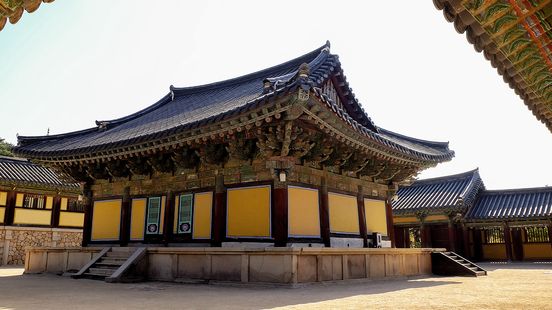
4.4 out of 5 stars

4.5 out of 5 stars

3.3 out of 5 stars

For a limited time, book your 2020, 2021 & 2022 group tour packages with no deposit required!!!

- Custom Groups Custom Groups Overview Student Groups MICE Special Interest Groups
- About Japan About Japan Destinations Attractions Must See & Do
- About Us About Us Contact us Testimonials Terms & Conditions Travel Agent Services Disclaimer Site Map
- News Press Releases Blog Media
- Your Trip Get Started How to make a reservation Travel Tip FAQs Inquiries
Last Name *
Highlights of Korea and Japan View Tours
Japan Deluxe Tours
Visit the must see sites of japan with group sizes ranging from 12 to 35 people..
These tours are great for first time visitors to Japan looking for comfortable accommodation with all entrance fees and most meals included. Our Japan Deluxe Tours are accomodated with professional tour guides, fluent in both Japanese and English, to ensure an educational and valuable visit. Air-conditoned, private coaches are also included, so you can enjoy a comfortable and hassle-free time in Japan. Our tours range from 7 to 21 days, to various regions of Japan.
Deluxe-Plus Small Group Tours
Experience the culture of japan at a slower pace with groups of 10 to 18 people. (smaller group departure available).
These tours combine enrichment, enjoyment, and education with time to truly absorb and appreciate your surroundings. Our Deluxe-Plus small group tours are created to cater to those who are interested in having a deeper understanding of Japan's culture. You will have the opportunity to participate in culturally rich activities and visit destinations only locals may know. Experience luxurious hotels and travel at a leisurely pace when you book a Deluxe-Plus small group tour.
Budget Group Tours
Our budget tours are designed for our guests who are on a limited budget..
Explore the must-see sights and enjoy the hassle-free trip to Japan at an affordable price. Our most cost-effective way to see the highlights of Japan while staying in budget-friendly accommodations. If you would like to have a quick stop to sample the must-see sights of Japan, or plan to explore Japan on your own but would like to take a short trip to learn about Japan before your self-guided journeys. These are the tours for you.
Active Small Group Tours
Travel japan more flexibly in groups of 6 to 13 people using public transportation..
Explore Japan off the beaten path via Japanese public transportation, walking, hiking, cycling and more. Take more time to enjoy local experiences and picturesque landscape. Our Active Small Group Tours combine the best of cultural destinations with off-the-beaten-path via Japanese public transportation, Discover the country of Japan the way the locals do and see Japan from a different angle. A focus on getting away from the crowds and into the real Japan, see the diversity of Japan’s countryside unfold before your eyes.
Group Tour | Deluxe Style
Highlights of korea and japan.
Korea (Andong - Gyeongju - Seoul ) Japan (Nara - Kyoto - Hakone - Mt Fuji - Tokyo)
Departure Months:
For those who love to explore and learn about differnt cultures, consider visiting these two major countries in Asia - Japan and South Korea! While the two countries share many similarities, they also have their own unique cultures. All Japan Tours has designed a special itinerary for guests, showcasing unique locales, “must see” tourist attractions, colorful cultural traditions, and delectable dining. Travel in comfort by private coach bus while your English-speaking guides show you t... View More
For those who love to explore and learn about differnt cultures, consider visiting these two major countries in Asia - Japan and South Korea! While the two countries share many similarities, they also have their own unique cultures. All Japan Tours has designed a special itinerary for guests, showcasing unique locales, “must see” tourist attractions, colorful cultural traditions, and delectable dining. Travel in comfort by private coach bus while your English-speaking guides show you the Highlights of South Korea and Japan. Begin your tour in the beautiful country of South Korea, staying in Seoul for your first night. You will then make your way to Andong Hahoe Village, a UNESCO World Heritage Site with a river flowing along its borders. Travel to Gyeongju, known as the “museum without walls” for the amount of tombs, pagodas, rock carvings, Buddhist statuary, and palace ruins that can be found in the area. Here, you will have the opportunity to visit Gyeongju National Museum and also Cheomseongdae, the oldest astronomical observatory in Asia. Make your way back to Seoul, where you will stay for two nights, exploring the enormous city. Visit the chief temple of Korean Buddhism and visit Insa-dong Antique Street, where you can purchase handmade crafts. Before leaving South Korea to continue your Asia expedition, visit the DMZ, which serves as a buffer zone for North and South Korea. Once you have flown from Seoul to Osaka, you will start your tour of Japan by traveling to Nara, where you can see the giant statue of Buddha at Todaiji Temple, or make new friends with the hundreds of wild deer. In the ancient city of Kyoto, you will experience the best gardens, temples, and shrines. Enrich your cultural side by partaking in a traditional green tea ceremony hosted by an apprentice geisha (maiko). Travel towards Mt. Fuji, visiting Hikone, where the beautiful Hikone Castle is surrounded by cherry blossoms in spring, and stopping at Hakone to take in the amazing views of Mt. Fuji. Stay overnight at a Japanese-style hotel, where you can relax in the hotel's hot spring bath. Once you have reached the bustling city of Tokyo, enjoy a bird's eye view of the city from Tokyo Tower, learn to make your own sushi, and during spring, visit Ueno Park, where you can see over a thousand cherry trees. With exclusive access to gardens, temples, shrines, castles, museums and specialty shops, you will have a one of a kind experience and a chance to see why these countries are popular tourist destinations. Selected tours also include a visit to Hiroshima, where you will learn about the tragic history and bright future of the city. With tours based on seasonal attractions, and must see sites in every tour, you will truly enjoy your time in these two wonderful countries. We plan our tours based on seasonal attractions, with must see sites in every tour. Below are our Highlights of Korea and Japan Tour itineraries with seasonal changes:

Tour Highlights
- Enjoy a beginner expedition to two countries and visit their must-see sites.
- Perfect for travelers who would like to see the main features of South Korea and Japan.
- Stay one night at Japanese-style accommodation and unwind in the hot spring they offer.
- See the award-winning “Nanta Cookin’ Show” at a theater in Central Seoul.
- Experience kimchi making, a kimono fashion show, and a sushi making class.
- Select itineraries include opportunities to visit during the cherry blossom season or visit Hiroshima.
- Experience a traditional green tea ceremony hosted by an apprentice geisha (maiko).
- Visit the DMZ, a buffer zone between North and South Korea.

Spring (Mar - May) (119)
Summer (Jun - Aug) (48)
Autumn (Sep - Nov) (95)
Winter (Dec - Feb) (21)
May 2024 (1)
June 2024 (1)
October 2024 (1)
March 2025 (2)
April 2025 (1)
May 2025 (1)
June 2025 (1)
October 2025 (1)
March 2026 (2)
April 2026 (1)
May 2026 (1)
June 2026 (1)
October 2026 (1)
Deluxe (222)
Deluxe-Plus (21)
Ultra-Deluxe (9)
Classic Tour (31)
Cherry Blossoms (73)
Autumn Leaves (41)
Festival (69)
Special Interest (94)
less than 9 nights (100)
9-14 nights (158)
15 nights + (25)
Hokkaido (49)
Tohoku (26)
Kanto (238)
Chubu (237)
Kansai (238)
Chugoku (110)
Shikoku (96)
Kyushu (32)
Okinawa (0)
Kyoto Aoi Festival (9)
Kawazu Cherry Blossoms (4)
Lavenders (11)
Snow Monkeys (52)
Shirakawago (85)
Gion Summer Festival (4)
Awa Odori Dance Festival (4)
Sapporo Snow Festival (5)
Otaru Snow Light Path (1)
Ice Breaker Cruise (5)
Wakasagi Smelt Fishing (5)
Shiretoko Nature Cruise (8)
Blue Pond (14)
Arashiyama Bamboo Forest (197)
Miho Museum (109)
Ise Grand Shrine (4)
Kumano (6)
Koyasan (20)
Himeji Castle (98)
Kurashiki Canal Area (99)
Miyajima Island (106)
Shimanami Kaido (88)
Takeda Castle (2)
Motonosumi-Inari Shrine (2)
Adachi Museum of Art (6)
Naoshima Island (12)
Tottori Sand Dunes (2)
Kyoto Cuisine with Maiko (35)
Shikoku Pilgrimage Route (4)
Takachiho (28)
Baby Blue Eyes Flowers (7)
Wisteria (11)
Takayama Festivals (16)
Shibazakura Festivals (10)
Tohoku 3 Great Summer Festivals (3)
Green Tea Ceremony with Maiko (163)
Sushi-Making (196)
Tateyama Kurobe Alpine Route (6)

Group Tour | Deluxe Book Now & Save $100
Group Tour | Deluxe Book Now & Save $100
12 Days 11 Nights | from US $4298.00
Korea (Andong / Gyeongju / Seoul), Japan (Nara / Kyoto / Koka / Hakone / Mt Fuji / Tokyo)
Explore two beautiful countries in asia - korea & japan in one tour..

Korea (Andong / Gyeongju / Seoul), Japan (Osaka / Nara / Kyoto / Koka / Hakone / Mt Fuji / Tokyo)

12 Days 11 Nights | from US $4498.00
Korea (Andong / Gyeongju /Seoul), Japan (Nara / Kyoto / Koka / Hikone / Hakone / Mt Fuji / Tokyo)
Explore korea & japan during the most beautiful time of the year - the cherry blossom season..

13 Days 12 Nights | from US $4598.00
Explore two beautiful countries in Asia - Korea & Japan in one tour, plus Expo 2025 Osaka!

Explore two beautiful countries in Asia - Korea & Japan in one tour, plus Expo 2025 Osaka.

15 Days 14 Nights | from US $5698.00
Japan (Tokyo / Mt Fuji / Hakone / Hikone / Koka / Kyoto / Nara / Osaka / Himeji / Kurashiki / Hiroshima / Shimanami Kaido / Obokekyo Gorge / Kotohira / Takamatsu / Kobe), Korea (Andong / Gyeongju /Seoul)
Explore japan & korea during the most beautiful time of the year - the cherry blossom season..
Spring Tours (Mar - May)
Summer Tours (Jun - Aug)
Autumn Tours (Sep - Nov)
Winter Tours (Dec - Feb)
Travel Styles
Deluxe-Plus
Ultra-Deluxe
Walking Tour
Cherry Blossom Tours
Autumn Leaves Tours
Festival Tours
Special Interest Tours
Seasonal Attractions
Cherry Blossoms
Takayama Spring Festival
Kyoto Aoi Festival
Shibazakura Festivals
Baby Blue Eyes Flowers
Lavenders in Hokkaido
Gion Summer Festival
Tohoku 3 Great Summer Festivals
Awa Odori Dance Festival
Autumn Leaves
Takayama Autumn Festival
Snow Monkeys
Sapporo Snow Festival
Ice Breaker Cruise
Wakasagi Smelt Fishing
Kawazu Cherry Blossom Festival
Things Not to Miss
Shirakawago
Miho Museum
Naoshima Island
Himeji Castle
Shiretoko Nature Cruise
Sushi-Making Experience
Kyoto Cuisine with Maiko
Green Tea Ceremony with Maiko
Ise Grand Shrine
Most Beautiful Places in Japan
Otaru Snow Light Path
Tottori Sand Dunes
Arashiyama Bamboo Forest
Miyajima Island
Motonosumi-Inari Shrine
Adachi Museum of Art
Shimanami Kaido
Takeda Castle Ruin
Kurashiki Canal Area
Takachiho Gorge
Pay in full discount on selected dates. Save $700 pp!
18 Day Authentic Japan & South Korea
pp Twin Share
From pp Twin Share
Fully Escorted
Moderate Pace
Group Tour - Classic
This tour is fully escorted by an expert English-speaking guide who will accompany you throughout the tour.
This tour is conducted at a medium-fast pace. Some long travel days may be required to complete this itinerary and you will typically spend two nights at each destination, with some one night stays required. This trip includes a mix of sightseeing and free time to explore at your own pace. You will be required to move about unassisted, including getting on and off vehicles, walking up and down stairs and some activities will be conducted on uneven or steep terrain. You will be required to handle your own luggage.
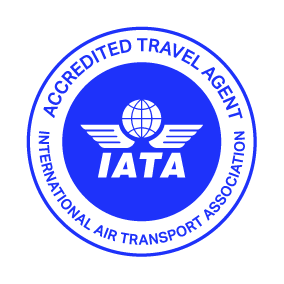
✓ Limited Time Offer – Add return international airfares from only $1,099 ✓ Incredible sightseeing including breathtaking Mt Fuji, UNESCO World Heritage Sites Golden Pavilion and Atomic Bomb Dome, the floating Torii gate of Miyajima Island, Tokyo’s buzzing metropolis, Bulguksa Temple, Jeonju Hanok Village and much more ✓ Internal flight from Osaka to Seoul ✓ 17 nights in central 3 and 4- star accommodation ✓ Breakfast daily and 1 lunch ✓ Fully escorted by professional, English-speaking tour guides ✓ Comfortable, dedicated transportation throughout ✓ In-depth sightseeing and entrance fees as per the itinerary
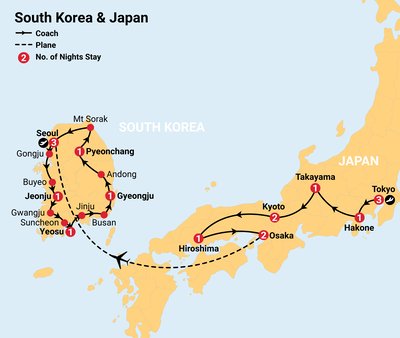
Travel with the experts for a carefully curated, value-packed discovery of the world's most iconic destinations. Our tours are bursting with must-see sights, rich experiences and quality inclusions, all at an unbeatable price. Bucket list dreams are ticked off on these all-encompassing journeys.
Day 1 Tokyo
Upon arrival into Tokyo, please make your own way to the starting point hotel. Take the evening to relax after your flight and prepare for your first full day of touring tomorrow.
Arrival & Check-in information
Haneda International Airport (HND). The easiest and most convenient way to travel from Haneda International Airport (HND) to Tokyo Central is by train or by Monorail. The airport is also serviced by many 'Limousine Bus' services which offer shared shuttle bus service from around 1300Yen per person.
Narita International Airport. The best way to travel from Narita International Airport to Tokyo Central is by the Narita Airport Express. The journey to most Tokyo stations take approximately 1hr and the ticket costs 4070 Yen. The airport is also serviced by many 'Limousine Bus' services which offer shared shuttle busses from around 1300Yen per person.
Hotel Check-in. Travellers will be arriving at various times throughout the day. If arriving prior to standard check-in time, which is generally 3pm local time, you are welcome to leave your luggage with hotel reception and explore your surroundings until check-in becomes available, as there are no scheduled activities on Day 1 of the itinerary. The hotel may grant early check-in, however this is strictly subject to availability and at the hotels discretion.
Day 2 Tokyo
After breakfast this morning your English-speaking guide will meet you to begin your full-day coach tour of Japan’s ultramodern capital – Tokyo.
Our exploration of Tokyo begins with a visit to Asakusa Sensoji temple–the oldest temple in Tokyo–famous for its huge lantern hung at the Kaminarimon gate (Thunder Gate).
We’ll drive-by the Imperial Palace, the primary residence of the Emperor of Japan. Previously home to samurai warriors, it’s a sprawling complex with beautiful 17th-century parks in the heart of the city.
Next, we'll venture into the vibrant neighbourhood of Shibuya, allowing you some time to explore at your leisure and discover a delightful local eatery for lunch (at your own expense). Nearby, we will visit the Meiji Jingu Shrine. Surrounded by green trees it’s a great place to escape the crowds and enjoy some peaceful time exploring before retiring to our hotel for an evening at leisure.
Day 3 Tokyo
Today is a full free day in Tokyo. There is no end to the spectacular sightseeing and activities available to you, as Tokyo truly has something for everyone. Take as much time as you like to relax at your leisure, explore the city, shop for souvenirs and eat the delectable cuisine. Be sure to ask your guide for recommendations on more must-see spots around the city.
Today, learn the Shodo - the way of writing. Experience the traditional Japanese calligraphy - from the preparation of the ink, to the writing with a brush. Start time approx: 10:30am Finish time approx: 12:00pm
Escorted by your tour leader, take a short Shinkansen ride to Atami (including transfers to and from the station). Atami is a famous resort town surrounded by mountains and the sea. You'll enjoy a walking tour around one of the main streets along with sweet and craft shops and you will enjoy a seafood lunch at a local restaurant (included in the cost).
Start time approx: 9:00am Finish time approx: 4:00pm
Day 4 Tokyo Hakone
After breakfast today we depart Tokyo and travel to Hakone. Away from the hustle and bustle of Tokyo, Hakone offers tranquillity among stunning natural scenery.
Upon arrival at Hakone, enjoy a boat trip across the serene Ashinoko Lake, followed by taking a cable car up the mountains to the sulphur vents of Owakudani. You’ll have spectacular views, and on a clear day, you can catch a glimpse of Mt Fuji in the distance.
Day 5 Hakone Takayama
Our journey continues to Takayama, a charming Edo period town located in the Japanese alps. Upon arrival in Takayama, take a walk with your leader who will point out examples of beautiful traditional architecture as you explore the old part of town. During the walk, you will visit a local sake brewery and try different kinds of sake. You also learn how the town’s isolated location caused it to develop a unique culinary scene. The area is particularly famous for Hida beef, which comes from a black-haired Japanese cattle breed that has been raised in the Gifu Prefecture for at least 14 months. Stop off on your tour to sample delicious Hida beef sushi or skewers (own expense).
Day 6 Takayama Kyoto
Before leaving Takayama this morning we'll visit the Hida Folk Village, also known as Hida no Sato, which serves as an open-air museum that showcases over 30 traditional houses from the Hida region. Creating a charming village-like ambiance, the museum encompasses various structures including a former village leader's residence, logging huts, storage buildings, and numerous gassho-zukuri farmhouses. The term "gassho-zukuri" translates to "hands folded in prayer," aptly describing the steep thatched roofs resembling hands joined in prayer. These distinctive farmhouses were transported from nearby Shirakawago, a location renowned for its gassho-zukuri houses, which contributed to the region's recognition as a World Heritage site.
Then, we travel to Kyoto where the afternoon is at leisure.
Day 7 Kyoto
We’ll see the sights of ancient Kyoto this morning, starting with Kyoto’s famed Fushimi Inari Shrine – known throughout the world as the ‘Path of the Red Gates.’ Take time to appreciate the quieter corners of the shrine, and if you’re feeling fit, a walk to the halfway point provides stunning city views.
We’ll continue onto some of Kyoto’s most iconic sites, like Kinkakuji (Golden Pavilion). This is a Zen temple and UNESCO World Heritage Site, with two floors covered entirely in thin layers of pure gold, set within a beautiful classical Zen garden.
This afternoon, you have free time to explore the city on your own.
Tonight, enjoy your experience of an Izakaya - a typical Japanese casual pub where Japanese go for a drink after work. You will be picked up from your guide at your hotel and will head to a local Izakaya to try the life style of a local while enjoying different type of alcoholic beverages and tradtional Japanese pub food. Start time approx: 6:00pm Finish time approx: 8:00pm
Also called Chado, "the way of tea" is the traditional and ceremonial preparation and presentation of Matcha. You will be shown how to prepare the tea and be able to experience preparing it as well. Your guide will be able to provide you with directions to the venue.
Start time approx: 3:00pm Finish time approx: 4:00pm
Today, experience Ikebana - the Japanese art of flower arrangement that dates back to the 7th century. The tradition believes that by arranging the flowers you give a new life to the flowers - Ike (live) Hana (flower). Head to a master's classroom where you will be able to try hands-on the art of flower arrangement in Japan
Start time approx: 4:00pm Finish time approx: 5:00pm
Day 8 Kyoto Hiroshima Miyajima Island Hiroshima
After breakfast this morning, we spend the day travelling to Hiroshima.
Upon arrival in Hiroshima, visit Miyajima, an island known for its forests and ancient temples. Just offshore, there's a 'floating' torii, which becomes partially submerged at high tide. It marks the entrance to the Itsukushima Shrine, which was first built in the 12th century.
Later, check in your hotel and relax in the evening. You might want to try a local famous dish okonomiyaki, a savoury pancake of egg, cabbage, soba noodles, and meat or seafood.
Day 9 Hiroshima Osaka
This morning we'll visit the Atomic Bomb Dome, otherwise known as the Genbaku Dome, or the Hiroshima Peace Memorial and Museum. A shell of a building that was one of very few left standing after the United States bombed Hiroshima in 1945. In Hiroshima today, locals have mixed feelings about the UNESCO World Heritage-listed structure: some see it as a reminder of war, while others consider it a tribute to the lost that ensures we'll never forget the tragic events that took place here.
Afterwards, we continue our Japan adventure to Osaka. Upon arrival, you have free time to explore Osaka.
Day 10 Osaka
Today we enjoy a coach tour with our guide, beginning by driving by the spectacular Osaka Castle, before making our way to Nara. Our first stop will be to the impressive Todaji Temple, which holds a world record as the largest wooden building in the world, and houses one of Japan’s largest buddha statues. You’ll then have some time to stroll Nara Park amongst the wild roaming holy deers, where you’ll then have some time to enjoy lunch (at your own expense).
We’ll also enjoy a walking tour of the Dōtonbori area. One of Osaka's most popular tourist destinations, this street runs parallel to the Dōtonbori canal and is a hugely popular destination for shopping, street food, bars and entertainment. At night the streets here are illuminated by hundreds of colourful neon lights and mechanised signs, including the famous running Glico Man sign and the Kani Doraku crab sign.
Celebrate the end of your Japan adventure with a casual meal at Izakaya, followed by a visit to a karaoke bar for that quintessential Japanese experience! Start time approx: 6:00pm Finish time approx: 9:00pm
Day 11 Osaka Seoul
At the appropriate time, make your way to Osaka Kansai Airport for your flight to Seoul. On arrival, you will be met at the airport and transferred to your hotel. The rest of the day is at leisure.
Day 12 Seoul
After breakfast, you will be picked up from your hotel for a full day sightseeing in Seoul and surrounds. Our first stop is at the Jogyesa Temple, which is the centre of Korean Buddhism. We then continue to Gyeongbokgung Palace to witness the changing of the guard ceremony before a visit to the National Folk Museum. After lunch, we travel to the Korean Folk Village on the outskirts of Seoul. Here, you will experience the culture of the late Joseon Dynasty as we wander through the village of over 260 different types of historical houses and buildings.
Day 13 Seoul Gongju Buyeo Jeonju
After breakfast we leave Seoul to travel to Gongju. Here we visit the UNESCO listed Tomb of King Muryeong and the Royal Tombs. Dating back to 500AD, the tomb complex was only re-discovered in 1927 and gives an insight into the Ungjin Period. We then visit the impressive Gongsanseong Fortress before continuing to Buyeo, an ancient capital of the Baekje Dynasty. Stop by Nakhwaam Cliff Observatory. where 3,000 court ladies of Baekje plunged into the river to avoid being captured and dishonored when the enemy breached the castle on the last day of the Kingdom. We continue to Jeonju where we spend the night at leisure.
Day 14 Jeonju Gwangju Suncheon Yeosu
After breakfast at our hotel we continue our journey to Gwangju, the leading city of Honam, the region and birthplace of a modern democratic movement in Korea. Here we visit May 18th National Cemetery dedicated to those who participated in the Gwangju Uprising in 1980.
Our journey continues to Suncheon where we will visit Suncheon Bay Garden. Afterwards, we travel to Yeosu, where we tour the modern port city before checking in to our hotel.
Day 15 Yeosu Jinju Busan Gyeongju
Our first stop today is the Jinjuseong Fortress, historically linked to Japanese invasion in 1592.
We then continue to Busan and visit the Jagalchi-Fishery Market , Busan’s largest seafood market, before seeing Haeundae Beach and Dongbaek Park . Our tour continues to the historic coastal city of Gyeongju where we check in to our hotel before an evening at leisure.
Day 16 Gyeongju Andong Pyeongchang
Today is a real highlight and our first destination is the Unesco World Heritage-listed Seokguram Grotto. The religious site was constructed between 742 and 765 AD and still serves as a significant site for Korean and international Buddhists for its ceremonial and artistic value. We then visit the UNESCO World Heritage-listed Bulguksa Temple before continuing to Andong Hahoe Folk Village, which has preserved the housing architecture and the village structure of the Joseon Dynasty. Moreover, the Village was naturally formed with people who actually live there. It has become world-famous for the visit of Queen Elizabeth II of Great Britain.
Afterwards we continue to the scenic city of Pyeongchang, renowned for its breathtaking scenery and for being the host city of the 2018 Winter Olympics. Pyeongchang boasts a wealth of attractions, from world-class ski resorts to enchanting natural wonders.
Day 17 Pyeongchang Seoraksan National Park Seoul
Today we visit t he venue of 2018 Winter Olympic Games in Pyeongchang.
We then p roceed to Mt. Seorak National Park. The peaks of the Seoraksan Mountains break through the clouds while jade-like water flows through the valleys, creating breathtaking views and making this Korea's most famous national park. Due to the many rare species found here, UNESCO designated this national park a Biosphere Preservation District in 1982. You have the opportunity to take a cable car to the summit (additional expense) before we transfer back to Seoul for our final evening in South Korea.
Day 18 Seoul
Today you will be transferred to Seoul Airport (ICN) in time for your departure flight.
What's Included
- Incredible sightseeing including breath-taking Mt Fuji, UNESCO World Heritage Sites Golden Pavilion and Atomic Bomb Dome, the floating Torii gate of Miyajima Island,Tokyo’s buzzing metropolis, Bulguksa Temple, JeonjuHanok Village and much more
- Internal flight from Osaka to Seoul
- 17 nights in central 3-4 star accommodation
- Breakfast daily and 1 lunch
- Fully escorted by a professional English-speaking tour guides
- Comfortable, dedicated transportation throughout
- In-depth sightseeing and entrance fees as per the itinerary
Sightseeing Highlights
- Tokyo - Enjoy the buzz and energy of one of the world’s great cities
- Tokyo – Drive-by the Imperial Palace, the primary residence of the Emperor of Japan
- Tokyo – Visit Asakusa Sensoji temple–the oldest temple in Tokyo–famous for its huge lantern hung at the Kaminarimon gate (Thunder Gate)
- Hakone – Cruise on Lake Ashi with views of Mt Fuji
- Hakone – Ride a cable car up the mountains to the sulphur vents of Owakudani
- Kyoto – See this ancient capital’s most famous temples and shrines including the Golden Pavilion and Fushimi Inari
- Hiroshima – Visit the Hiroshima Peace Memorial Museum and Genbaku Dome to understand the tragedies of Japan’s past
- Miyajima – See the famous floating torii gate
- Takayama – Experience the rustic charm of this quaint city with a walk through its beautifully-preserved old town and a visit to Hida Folk Village
- Takayama - Visit a local sake brewery and try different kinds of sake
- Osaka – Visit the expansive grounds of Osaka Castle, a grand monument of feudal Japan
- Osaka – Stroll through lively, colourful Dōtonbori and Shinsaibashi
- Seoul - See the changing of the guards at Gyeongbokgung Palace
- Experience the culture of the late Joseon Dynasty at the Korean Folk Village
- Visit the UNESCO World Heritage sites of Gongsanseong Fortress and Muryeong Gongsanseong Fortress
- Discover the UNESCO World Heritage-listed cave temple of Seokguram Grotto
Payment Terms
Secure your trip with a $99.00 deposit per person. Once we receive your deposit, we will send you an invoice with your remaining balance and payment options. Instalment Schedule:
- At the time of booking pay a $99.00 deposit per person.
- Pay a 1st installment of $2,119.00 per person within 28 days.
- Pay a 2nd installment of $1,437.00 per person within 90 days.
- You will then be invoiced for final payment 120 days prior to departure.
Important Information
Fitness Requirements While the tour itinerary should give you some guidance and overview to the expected requirements, to determine if this tour is right for you we categorise each of our tours in terms of their intensity. These guidelines are to ensure that each tour group is conducted as expected and to ensure the overall satisfaction of all Inspiring Vacations customers.
As a general rule, porterage is not included, therefore at all times you are expected to handle your own luggage where help may not be available.
This particular tour is categorised as a ”3”
- Moderate Tour: A good level of fitness and mobility is required, as this tour includes a moderate level of physical activity and is considered a medium-fast paced tour. You should be able to walk up and down stairs, get on and off the coach and able to walk reasonable distances of approximately 2 kilometres per day or more with ease. Any physical ailments you may have must be disclosed at the time of booking to determine your suitability. If you have any form of walking aids, other than a walking stick or hiking poles, then this tour is not suitable.
Tipping A friendly reminder that tipping is not included in your package. While tipping is not customary, it's of great significance to the people who will take care of you during your travels, inspires excellent service, and is an entrenched feature of the tourism industry across many destinations.
You may also consider tipping your tour leader and driver for outstanding service throughout your trip. Suggested amount for your guide, 500Y per person per day. Remember, a tip is not compulsory and should only be given when you receive excellent service.
Accommodation The accommodation listed is subject to change. Any changes will be of an equal or higher standard.
Twin Share Bedding Configuration At any time, bedding configuration is subject to confirmation by the hotel and based on availability. While you have the option to select either twin or double bedding at time of booking, our recommendation when travelling to Japan is to choose twin bedding, as the rooms are often bigger than those that have a double bed. If insisting on double bedding, please note that the rooms will be smaller and more narrow. As a general expectation, we cannot always guarantee bedding at all hotel stays.
Single Supplement Single supplement is $2,269.00 per person, in addition to the twin-share price.
Triple Share Not available.
Travel Insurance Travel insurance is recommended to protect yourself against the unexpected. In addition to the support that a policy may provide, you may be asked to present a copy of your travel insurance documentation while traveling.
We have partnered with nib to offer our customers competitive rates for their travel insurance. You can book Comprehensive or Essentials cover for your domestic, international or multi-trip journeys simply by clicking HERE .
Note that Inspiring Vacations cannot provide advice with regards to any insurance product.
Visa & Passport Information It is the traveller's responsibility to ensure they have a valid passport. The passport must be valid for a minimum of six months from the intended date of return.
Visas may be required.
Please note that these details are subject to change without notice. We recommend visiting https://smartraveller.gov.au for up to date information in terms of entry requirements.
Group Size Japan: Maximum of 40 people South Korea: You will travel with a maximum of 40 travelers in South Korea. You may travel with several different groups of people throughout your journey.
Children Children must be 5 years old or above and share a room with parents at all times. Children are charged the same price as adults.
Tour Style To meet the needs of various types of travelers, we choose to operate various types of tours, and depending on your selected package will mean different services are provided throughout your trip. The following descriptions of each tour style we hope will ensure that each traveller has appropriate expectations before they start their travels:
- Group Tour - Offers unparalleled value for money and are the perfect style of travel for those on a budget, though still eager to pack as much into their itinerary as possible. These tours tick all the boxes with an abundance of inclusions such as sightseeing highlights, expert tour guides, quality accommodation, transfers, coach transportation, some meals and more. Please note that the maximum group size will vary between deals and will be mentioned within the Fine Print of each deal page.
Cherry Blossoms Please note: cherry blossoms are weather dependent and it is not guaranteed that they will be in bloom at the time of your arrival.
Flight Information
This package includes international airfares or has the option of adding international airfares to your booking when selecting your departure city.
If international airfares are included this will be stated in the ‘Inclusions’ section
Alternatively, if international airfares can be added to your booking you will be able to select your departure city after clicking ‘Book Now’ and a cost will be stated next to your selected departure city. This cost will then be added to your booking and flights will be added to your booking. Conditions of flights for this package bookable by Inspiring Vacations:
- Flight Offer valid from select departure cities within the purchase path only
- Flights will be booked with the best available airline/s with luggage included. Low-cost carriers may be booked in conjunction with a full-service airline. Depending on the carrier, entertainment and meals may not be included but payable at an extra cost on-board. We cannot specify or guarantee the airline booked. If you would like a specific airline, please request this at the time of purchase. To make a flight request, please click ‘Book Now’ and select Would you like us to contact you around our flight service? By selecting this option you will be sent a request form after completing your purchases to make your request.
- Flights may not be direct and may include multiple connections
- Due to disrupted airline schedules globally with the pandemic, stopovers/transit times may be longer than usual (up to 12 hours in duration in some circumstances).
- Once ticketed, flights are non-refundable; any changes will be subject to the airline rules, Airline change fees and an Inspiring Vacations change fee of $250 per person.
- Full names as per passport (including all middle names) are required at the time of submitting your traveller booking form. Any error in the names submitted will be subject to an Inspiring Vacations name change fee of $150 plus any applicable fees charged by the airline, or the ticket may be non-refundable with the purchase of a new ticket required.
- If the required booking class is unavailable at time of booking, surcharges may apply. Total cost is final only at time of ticketing. Once issued, air tickets are subject to amendment and cancellation fees or may be non-refundable
- Any airline schedule changes or cancellations are outside of our control. It is important that you, as the customer, stay up-to-date with the latest airline schedule information prior to your departure. If a schedule change results in extended transits or an earlier/later departure from your destination, any additional accommodation or alternative arrangements will be at the traveler's expense.
- After booking, the price payable may be subject to change as a result of factors beyond the control of Inspiring Vacations. Inspiring Vacations reserves the right to increase the price payable and this will be reflected on the customer's invoice. Increases may be in relation to, but not limited to, currency fluctuations, airline taxes, airfare increases and fuel surcharges.
- Internal airfares (where applicable and included in the itinerary) will be using a local carrier and may include low-cost carriers without meals or entertainment. Checked baggage will still be included for each passenger. Any additional baggage required is payable at time of check-in.
- If you are travelling with another party on a separate booking, we cannot guarantee that the same flights will be booked for all parties, as this strictly depends on availability.
- You will be responsible for handling your luggage at all times as the services of porters are not included. If travelling over the recommended amount, you will be liable for any excess baggage fees enforced by the airline, payable directly.
- In the event of that you no-show on your scheduled flight, please be aware the airline will require you to pay a no show fee, Airline reissue fee plus any additional airfare and taxes. Inspiring Vacations will also charge a $250 admin fee to assist re accommodating you on the next available flight. Please note that depending on the airline's policy, purchasing a new ticket may be required.
Included baggage differs based on your country of origin. Included baggage will be as per the following:
Baggage allowances provided by the airline might differ to the values stated above. However limitations are required due to transport storage restrictions on your selected tour or package.
Flight requests, amendments or preferences
We understand customers may wish to request changes to their included airfares. If you wish to fly with a certain airline, land at a certain time or change your flight in other ways we will gladly provide you with a personalised quote tailored to your specific requirements. To make a flight request, please click ‘Book Now’ and select Would you like us to contact you around our flight service? By selecting this option you will be sent a request form after completing your purchase to make your request.
We would be more than happy to provide you with a quote for the following requests:
- Airline Preferences - You may wish to fly with a particular airline
- Cabin Preferences - These include upgrading to premium economy or business class
- Extensions (start and end cities must remain the same) - You may request to extend your stay pre or post tour.
- Meal Requests - You may request a specific meal for dietary requirements.
- Seat Requests - If you would like to request particular seating. However please note, not all airlines allow the selection of pre-purchased seat arrangements.
We are currently unable to provide a quote for the following requests:
- Stopovers - Is where you might want to stop in transit for a certain amount of days prior to your tour or after your tour.
- One way flights
- Different start or end city to the tour - you may not amend the arrival or departure city of your itinerary.
- Around the world tickets - Is when a ticket includes multiple stops in different continents.
- Return home to a different city from the one you departed.
- Frequent Flyer point redemption - Is when an airline allows you to redeem points to pay for your flights or upgrade your ticket.
If we can’t fulfill your request and you still wish to proceed with the booking, please select Land Only (excluding UK customers). This will allow you to travel on the land portion of the package without the included airfares. You will then be able to arrange your own flights separately.
For more frequently asked questions please view our FAQs section.
Online check-in
Some airlines may not permit online check-in where flights have been booked by a travel company. Where unavailable to do so online, you will be required to check-in at the airport. Inspiring Vacations cannot check-in online on behalf of our customers.
Pre and Post-Tour Accommodation & Extra Services
You can enhance your holiday by arriving or departing before or after the tour. On this tour you can choose from the following options:
Post Tour Accommodation
- $239.00 per room, per night for double and twin share
- $220.00 per room, per night for solo travellers
Please select the number of extra nights required in the 'Additional Nights Accommodation' field when making your purchase. The additional cost for these arrangements will be added to your final payment invoice and are subject to availability.
Optional Tours
To enhance your journey, we are offering guests a choice of the following optional activities (prices are per person):
- Calligraphy Class (Day 3) - $138 per person
- Izakaya Night tour in Kyoto (Day 7) - $236 per person
- Half Day Atami Tour by Shinkansen (Day 3) - $228 per person
- Green Tea Ceremony (Day 7) - $122 per person
- Flower Arranging in Kyoto (Day 7) - $127 per person
- Izakaya and Karaoke Experience (Day 10) - $57 per person
Optional tours can be selected once you have finalised your tour purchase and paid your deposit. When completing your Passenger Booking Form, you will be asked if you would like to add Optional Tours, where any applicable cost will be added to your final balance. If you choose not to select them at this time, you can choose to add them later by logging in to your Account online.
Please note that you must select your Optional Tours no later than 70 days before departure, Optional tours are unable to be purchased whilst on tour, therefore we suggest you book before you go to avoid disappointment. We appreciate your understanding.
Please note that transportation to and from each optional tour is not included in the price. You will be required to make your own way to the starting point of the optional tour, as well as back to your hotel. Your tour guide can provide you with the direction and guidance needed to make your own way.
- International Airfares (Optional)
- Airport Transfers (in Japan)
- Visas (if needed)
- Travel insurance (compulsory)
- Anything not mentioned in the itinerary
- Optional activities
- Personal expenses
What Climate to Expect
Click HERE for more information on weather in Japan
Click HERE for more information on weather in South Korea
Departure Dates
Select your departure month
Choose your departure month
- 0 && datePax[result.departure_date] Selling Fast = 5" class="corner-tip corner-blue px-2" :style="{color: result.tag_icon.color, borderColor: result.tag_icon.color}"> DEPART RETURN PRICE FROM $ Twin share PP Unavailable Sold Out Book Now
Enter your email & we will notify you as soon as more dates are added!
A member of our team will notify you as soon as dates become available.

You might also like
13 day cherry blossoms of japan, 22 day inspiring japan & south korea, 10 day south korea and jeju island, experiences, five of the best: tokyo parks to see cherry blossoms, five of the best: japanese castles, snapshot: tokyo, spotlight: oita, snapshot: okinawa islands, customers on tour: nicole and charlie on inspiring japan, customers on tour: unforgettable japan, customers on tour: rebecca and leanne on inspiring japan, know before you go: japan, how to spend a free afternoon in kyoto, staff on tour: japan, customers on tour: unforgettable japan, best places to see mount fuji, snapshot: hiroshima, five of the best: tokyo’s top sights, snapshot: nara, snapshot: scenic central honshu, snapshot: osaka, snapshot: himeji castle, snapshot: fushimi inari, snapshot: kanda matsuri, snapshot: mount koya, snapshot: nagasaki, snapshot: miyajima island, snapshot: kyoto, five of the best: japanese desserts, snapshot: kanazawa and shirakawa-go, snapshot: nagano, latest insights, everything you need to know about: hanami.
The act of viewing flowers in bloom is a sacred Japanese past time that dates back centuries What is hanami? The term hanami is a combination of two words: hana meaning flowers and mi meaning viewing. While it sounds like a vague expression, the term has become synonymous with the annual flowering of cherry blossom t...
Blooming beauties: a seasonal guide to Japan’s flowers
From cherry blossoms to sunflowers and hydrangeas, Japan is a country in bloom The change of the seasons and the floral displays they bring are celebrated across Japan. From the keenly anticipated cherry and plum blossoms to the cheery sunflower, flowers hold a special place in Japanese society. There is even an anci...
Guide to cherry blossom season in Japan
From March to April every year, millions head to Japan to see their famed cherry trees shower the landscape in pink and white petals The annual blooming of sakura (cherry blossom) trees in Japan is a sacred occurrence that has been celebrated for over 1,000 years. While its origins are somewhat disputed, with some so...
15 places to see Japan's autumn leaves
Where to experience the prettiest landscapes in Japan during the autumn foliage season Japan might be all about cherry blossom season, but once September hits, summer is farewelled and the focus shifts towards welcoming autumn and koyo zensen or tracking the progress of the leaves turning red. Much like the pink bloomi...
Fall in love with Japan in autumn
From September to December every year, Japan's temples and ancient shrines are transformed by seas of crimson foliage After months of steamy weather, an epic transformation begins across Japan. Trees change seemingly overnight from green to red, orange and yellow, turning the landscape into an artist's palette of autum...
Everything you need to know about: bullet trains in Japan
Get familiar with the Japanese love of innovation through its impressive network of bullet trains A needle-nosed train speeds past the base of beloved Mount Fuji. It’s an image as synonymous with Japan as a geisha shuffling through the streets of Kyoto or a steaming bowl of ramen—and for good reason. The East Asian nat...
Tokyo in five ways, over five days
Discover five faces of Japan’s sprawling capital over as many days with a jaunt through these diverse areas Day 1 – Shinjuku and Harajuku Dive headlong into two of Tokyo’s most colourful neighbourhoods. Begin in youthful Harajuku, where edgy boutiques line Omotesando Avenue and Cat Street and all things cute reign on T...
101 Things to do in Japan
From the delicious to the quirky, Japan is bursting with fun things to do If you're all templed-out or just have some time to kill while visiting Japan, here, 101 ideas to keep you busy. 1. Queue up for sushi at Daiwa Sushi in the Toyosu Market (Tokyo) Recently located to a new, larger location, the sprawling fish...
Japanese etiquette tips every visitor should know
Japan is a country with buckets of charm and ancient history, but its customs can be tricky to navigate There’s a lot to love about Japan. Its quirky streets, delicious cuisine and centuries-old castles attract millions of visitors each year, but while its culture intrigues, it also confuses. Manners and strict etiquet...
A first timer's guide to Japan
From sights to scenery and five-star fare, Japan is the ultimate Asian all-rounder Japan is undoubtedly one of the hottest destinations in the world right now, and for good reason. This geographically blessed country is spectacular year-round, easy to navigate and packed with ancient sights. In between attractions, d...
Five books to read before your trip to Japan
From modern classics to guides and memoirs, the many facets of Japan are best explored through literature These days, it seems like everything you need to know about a place can be found with a quick Google search. But sometimes, the best way to find out about the history or culture of a country is to turn to a good ol...
Eat like the Japanese: five must try regional dishes
Japanese food is treasured across the globe, but there’s much more to it than teriyaki chicken With such a vast array of flavours, dishes and regional specialties, it’s no surprise that Japan’s capital Tokyo, has been awarded the most Michelin Stars in the world, defeating culinary superpower Paris for 11 consecutive y...
The four seasons: when should I travel to Japan?
Japan can be visited year-round, with each season showcasing its own special charm While its eclectic capital Tokyo exudes modernity and is one of the most technologically advanced cities in the world, there are many prefectures throughout Japan that resemble their traditional forms with wooden minka architecture and t...
Everything you need to know about: Sapporo Snow Festival
Deep into Japanese snow season, the northern city of Sapporo hosts the country’s largest winter festival Japan has long been considered a leading winter destination, thanks to its powdery slopes and heavy snowfall. From February 4-11, 2024, the Sapporo Yuki Matsuri (Snow Festival) turns the capital of Hokkaido into a f...
When is the best time to visit Japan
Japan is one of East Asia's most beloved countries, with a cherished ancient culture and exquisite sights. But, when is the best time to go? Japan is an island country full of contrasts. From ultra-sleek modern cities, to soaring alps, traditional villages and ancient shrines. And with four distinct seasons that e...
We see that you are based in but you are viewing that is meant for residents.

How to Travel From South Korea to Japan?
Traveling from South Korea to Japan is an exciting and memorable experience. While there are various ways to travel, the most popular way for tourists is by air or by sea. Flying is usually the fastest and most convenient method of transportation, as it takes only about two hours to reach your destination. However, if you’re looking for a more leisurely journey or wish to explore both countries in depth during your trip, then taking a ferry may be the better option for you. In this blog post we will discuss how to go from South Korea to Japan via air and sea transport, including costs and other important details that travelers should consider before planning their trips. One of the first things travelers need to decide when choosing which mode of transportation they would like to use is whether they want direct flights between both countries or if they would prefer connecting flights with layovers at another city along the way. Direct flights are often cheaper than connecting flights but require more time in transit; on average it can take up three hours on some routes while others might take up 12-14 hours depending on connections chosen.
FUKUOKA TO BUSAN | Taking the Ferry from Japan to Korea
South korea to japan flight time, south korea to japan flight, south korea to japan: flight price, korea to japan distance by train, south korea to japan train, how can i go from korea to japan, how long is a train ride from korea to japan, can you travel from seoul to japan, how long is the ferry from south korea to japan.
- Research the travel route: Before you book your trip from South Korea to Japan, it is important to research all available flight, ferry and train options
- Look at various airlines that fly between the two countries and compare prices for different dates of travel
- Consider taking a ferry or a train if you are looking for an affordable way to get there
- Book your tickets: Once you have decided on the best option for getting from South Korea to Japan, book your tickets online or in person at a local travel agent or airline office
- Make sure that you read all terms and conditions before purchasing so that you know what kind of changes can be made in case something comes up later on
- Prepare necessary documents: Depending on which type of transportation you take, some documentation might be required such as visas and passports in order to enter either country legally so make sure that these are ready ahead of time along with any other necessary paperwork such as plane tickets or ferry reservations etc
- Pack appropriately: When travelling between countries it is important to pack light but also remember the weather conditions at both destinations when selecting clothing items – especially if travelling by plane where weight restrictions may apply! Remember essentials such as toiletries, electronics chargers etc
- , passport/visa copies (if applicable) and medications too! 5 Departure day: On departure day arrive early at the airport/train station/port before boarding time with plenty of time left
If you’re looking for a short flight between South Korea and Japan, you’ve come to the right place. Flying from South Korea to Japan is a relatively straightforward process with several different airlines offering direct flights from Seoul Incheon International Airport (ICN) or Gimhae International Airport (PUS) in Busan to one of many Japanese airports – Tokyo Narita International Airport (NRT), Osaka Kansai International Airport (KIX), and Fukuoka Airport (FUK). The average flight time between South Korea and Japan is just over 2 hours. Depending on which airport you choose as your departure point, as well as the airline and type of aircraft being used, the exact duration of your flight may vary slightly. On most flights originating at ICN or PUS, travelers can expect an approximate flying time of 2 hours 10 minutes when using a large commercial jet like Boeing 777-200ER or Airbus A330-300s. There are also some airlines that offer shorter nonstop times; Asiana Airlines has recently been advertising flights from ICN to NRT with an estimated flying time of 1 hour 55 minutes aboard their Boeing 787 Dreamliner aircrafts. Regardless of which route option you select for your trip, it’s important to remember that before any scheduled departure there will be check-in procedures that need to be completed at least two hours prior to boarding for domestic air travel within East Asia.
If you’re looking for a convenient and budget-friendly way to travel between South Korea and Japan, then look no further than the many flights available. Flying is the most popular option when traveling between these two countries as it is quick, relatively inexpensive, and offers great views of both countries on your journey. When booking a flight from South Korea to Japan, there are a few things to consider such as airline selection and departure airport. For example, if you are flying out of Seoul Incheon International Airport (ICN), some of the airlines that offer direct flights include Korean Air Lines (KAL), Asiana Airlines (OZ) , Jin Air (LJU), Eastar Jet (ESR) , Jeju Air(7C). Each of these airlines have different rates so be sure to compare prices before making your final decision. In terms of choosing an arrival airport in Japan, this will depend on what city you plan on visiting during your stay. Some popular airports that serve various cities across Japan include Narita International Airport near Tokyo (NRT), Kansai International Airport near Osaka(KIX) , Chubu Centrair International Airport near Nagoya(NGO ), Fukuoka Airport near Fukuoka City(FUK). Again make sure to compare fares with each airline operating at your chosen destination airport in order to find the best deal possible.
If you’re planning a trip from South Korea to Japan, you may be wondering how much it will cost for the flight. The answer depends on several factors, including which airlines you choose and when you fly. Fortunately, there are plenty of options available to make your journey affordable. The price of a flight from South Korea to Japan can vary greatly depending on which airline you use and what type of ticket (one-way or round-trip) that you purchase. Generally speaking, flights with major carriers such as Korean Air or Asiana Airlines tend to be more expensive than budget airlines like Jeju Air or Jin Air. Additionally, tickets purchased further in advance usually offer better prices than those bought at the last minute. When searching for flights on various websites such as Expedia or Skyscanner, keep an eye out for special promotions and discounts that could potentially save you money; some sites even offer coupon codes specifically designed for international travel! If time is not a major factor in your decision making process but affordability is then consider flying midweek instead of during peak weekends/holidays when airfares are typically higher due to increased demand. It’s also worth noting that airports located farther away from central Tokyo often have cheaper fares than those closer by because they don’t incur additional taxes/fees related to their proximity within city limits.
Train travel has long been a popular way to get around in Korea and Japan, with the two countries connected by an extensive rail network. The Korea to Japan distance by train is approximately 880 miles (1,417 km), making it one of the longest overland railway journeys in the world. While there are no direct trains from Korea to Japan, travelers can take advantage of connecting services that run through China or Russia. For those looking for a comfortable journey across the Sea of Japan, there are several different options available depending on your budget and time constraints. One of these is the Trans-Siberian Railway (TSR). This route connects Moscow and Vladivostok via Manchuria before crossing into North Korea and then onto South Korea’s capital Seoul. From here you’ll need to transfer at Busan station onto either a ferry or hydrofoil service bound for Fukuoka in southern Japan where you will again be able to catch another TSR train heading northwards towards Tokyo or Osaka – this journey would take around 48 hours including all transfers. Alternatively, if time isn’t an issue but budget is more important then taking a combination of regular domestic trains could be ideal; though bear in mind that tickets might not always be available during peak holiday periods when demand outstrips supply so advance booking is essential!
South Korea to Japan Train: A Guide for Travelers Are you planning a trip from South Korea to Japan? If so, you’ve probably heard about the various transportation options available, including air travel and ferries. But have you considered taking the train? Taking the train between South Korea and Japan is an excellent way to get around in comfort, while saving time and money. In this blog post, we’ll provide a comprehensive guide to traveling by train from South Korea to Japan. First things first – what kind of trains are available for your journey? There are two types of trains that operate on this route: KTX (Korea Train Express) and Shinkansen (also known as “bullet trains”). The KTX connects Seoul Station with Tokyo Station in just over 10 hours; it also makes stops at intermediate cities such as Busan and Daegu along the way. The Shinkansen is faster but more expensive; it takes only 6-7 hours to make the same journey. Both types of trains offer comfortable seating with plenty of legroom and reclining chairs or couches depending on your ticket type. They also both have restaurants onboard where passengers can purchase food or drinks during their ride. Now let’s talk tickets! Tickets for either type of train can be purchased online via official railway websites or at local stations in major cities like Seoul or Tokyo.
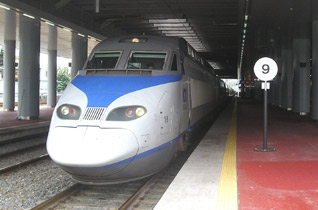
Credit: www.seat61.com
If you’re planning a trip from Korea to Japan, then you’ve come to the right place! In this blog post, we’ll discuss all the ways in which you can go from Korea to Japan. The most popular way of travelling from Korea to Japan is by air. There are several major airlines that offer direct flights between Seoul and Tokyo or Osaka (the two biggest cities in Japan). For example, Korean Air and Asiana Airlines both have direct flights connecting these two countries. The flight times vary depending on which city you fly into, but usually take about 3 hours. Prices for these flights range anywhere from $200-$400 USD depending on the season and availability of tickets. Another option is taking the ferry between South Korea and Japan. This service operates out of Busan Port in South Korea with routes going to Fukuoka and Osaka in Japan. The journey takes around 12-14 hours depending on your destination port so it’s best suited if you’re looking for an overnight journey rather than a day trip! Prices start at around $50 USD per person one-way but they do vary based on when you book as well as your cabin class selection (i.e., economy vs first class). Finally, if budget isn’t an issue then traveling by train is also possible!
Traveling by train from Korea to Japan is a great way to experience the beautiful sights and sounds of both countries. But, before you hop on board, there are a few things you should know about how long it will take. Depending on where in Korea and Japan you’re traveling between, as well as which type of train service you choose, the journey time can vary greatly. The shortest train ride from Korea to Japan would be aboard the KTX high-speed rail line that runs between Seoul and Busan in South Korea with Fukuoka City in Kyushu, Japan as its final destination. The trip takes just under four hours with no stops along the way for sightseeing or transfers. If you want to add additional destinations for more sightseeing opportunities during your trip, then multiple transfers may be required depending on what route best suits your needs. If instead of taking the KTX line directly from South Korea to Japan, travelers could opt for one of several ferry services that cross over from Incheon Port near Seoul into either Pohang or Mukho ports in Gyeongsangbuk-do Province in South Korea before arriving at Fukuoka port in Kyushu after 17 hours at sea (weather permitting).
Yes, it is possible to travel from Seoul to Japan. There are several different ways to make the journey, depending on your preference and budget. The most common way for travelers to get from Seoul to Japan is by air. Several airlines offer direct flights between the two countries which usually take around two hours or less. Additionally, there are many indirect flight options available with stopovers in other cities such as Shanghai or Hong Kong. Prices vary greatly depending on the airline and time of year you’re traveling but are typically quite affordable. Another option for getting from Seoul to Japan is via train or bus service. The KTX high-speed rail network connects several cities in South Korea with a number of destinations in Japan including Tokyo and Osaka among others. Travel times can range anywhere between 6-20 hours depending on where you’re headed so this isn’t really a viable option if you need to get there quickly! Bus services also operate along similar routes although they tend to be more expensive than trains and travel times longer too (upwards of 24 hours). Finally, if you want an even more unique experience then why not consider taking a ferry? Ferries depart multiple times per day from Incheon International Airport near Seoul heading across the sea towards various ports in mainland Japan such as Fukuoka or Nagasaki (depending on which route you take).
Taking a ferry from South Korea to Japan is one of the most popular ways for travelers to get between these two countries. But how long does it take? The answer depends on which route you choose and where your departure point is in South Korea. Most trips range anywhere from 6-18 hours, though some can be as short as 2 or 3 hours. The shortest routes are usually the ones that depart from Busan, South Korea’s second-largest city located on the southeast coast near Japan’s Kyushu Island. These ferries will typically travel directly to Hakata or Fukuoka in western Japan, taking only about 2-3 hours each way. On the other hand, if you’re departing from Incheon (near Seoul) or Mokpo (on the southwestern tip of South Korea), your trip could take up to 18 hours depending on where you’re going and what type of ferry service you use. Ferries traveling between Incheon and Japanese ports like Osaka or Tokyo may stop at several intermediate ports along the way such as Shimonoseki in western Honshu, making for much longer journeys overall. When planning a ferry journey between South Korea and Japan, keep in mind that there are different types of vessels available with varying levels of comfort and amenities onboard – including high-speed jetfoils (which often offer shorter travel times than traditional ferries).
Traveling from South Korea to Japan is a great way to experience two different cultures in one trip. Depending on the mode of transport you choose, it can be an easy and enjoyable journey or a more complex and time-consuming one. By air, travelers have several options for getting from South Korea to Japan such as flights with All Nippon Airways (ANA), Asiana Airlines, Korean Air Lines (KAL) or Jeju Air. The flight times vary depending on the airline but generally range between two hours and three hours. If you’re looking for an alternative method of travel, there are also ferries that depart regularly from Busan port in South Korea direct to Hiroshima or Osaka ports in Japan. It’s important to note that these ferries require advance booking so make sure you plan ahead if this option interests you! Finally, if traveling by sea isn’t your style then consider taking the train through China with either the KTX bullet train which departs from Seoul Station or via ferry/train combination departing from Incheon Port near Seoul City. Whichever route you decide upon, make sure you research both visa requirements and transport details before making any bookings – happy travels!
Izumi Kenta
Hi, I’m Izumi Kenta from Japan. By profession, I worked as a tourist guide and interpreter in Japan. Besides this profession, I’m a hobbyist blogger. I love to talk about different things about Japan and share them with a wider audience who wants to know about my country. To share my thoughts, I’ve created this site Visitjapan and brought some Japanese travel enthusiasts and tourists worldwide to share their experiences.
Leave a Reply Cancel reply
Your email address will not be published. Required fields are marked *
Save my name and email in this browser for the next time I comment.
Recent Posts
Why Does Japan Have So Many Earthquakes? Discovering the Secrets Behind Japan's Seismic Activity
Japan is a country that is known for its frequent earthquakes. The question of why Japan experiences so many earthquakes has intrigued scientists and researchers for years. In this article, we will...
Unlocking the Secrets: Kobe Beef Price per kg Revealed!
Unlocking the Secrets: Kobe Beef Price per kg Revealed! Understanding the Factors Affecting Kobe Beef Price per kg Kobe beef, renowned for its exceptional quality and flavor, is a delicacy that...

Advertisement
Supported by
Japan and South Korea Make Nice, but Can It Last?
Both sides face potential political snags, as well as a delicate balancing act in a region where the United States and China are competing for influence.
- Share full article

By Motoko Rich and Choe Sang-Hun
Motoko Rich reported from Tokyo, and Choe Sang-Hun reported from Seoul.
To underscore the celebratory atmosphere surrounding the long-awaited visit by South Korea’s president this week, Japan’s prime minister hosted not just one, but two, dinners on Thursday night in Tokyo.
Shortly after Yoon Suk Yeol, of South Korea, told reporters that “frozen ties should be thawed” and Fumio Kishida, of Japan, hailed “a new chapter” in their long-fraught relationship, they went with their wives to a traditional restaurant in Tokyo’s luxury Ginza district. The two leaders then broke off for a more casual meal of “omurice,” a popular dish of an omelet layered over fried rice. The Yomiuri Shimbun, Japan’s largest newspaper, noted that Mr. Kishida and Mr. Yoon were so relaxed that they “reportedly took off their jackets and ties” as they ate and drank.
Underlying the conviviality of the first bilateral summit to be held in Japan in a dozen years was the question of how long the fragile truce between the two countries will last.
Both sides have made good-will gestures. Seoul dropped its demand that Japanese companies compensate Korean victims forced into labor during World War II, a contentious issue for years. Tokyo plans to end its 2019 restrictions on technology exports to South Korea.
But the relationship remains a work in progress. Both leaders will face potential domestic political snags as well as a delicate balancing act in a region where two superpowers, the United States and China, are competing for influence.
“The real issue is how much solidity” there is to the warming ties, said Shihoko Goto, deputy director of the Asia Program at the Wilson Center in Washington. “And how much does this actually have legs?”
So far, Mr. Yoon has made the bolder move by offering an alternative to a 2018 South Korean Supreme Court decision ordering Japanese companies that relied on Korean forced labor during World War II to compensate survivors and their families directly. Under Mr. Yoon’s solution, the South Korean government will create a fund to pay the victims instead. President Biden called the announcement “ groundbreaking .”
When the deal was announced earlier this month, Japan did little other than reference an earlier government apology for “tremendous damage and suffering to the people of the Republic of Korea” during Japan’s colonial occupation of the Korean Peninsula, which lasted from 1910 to 1945.
Mr. Yoon has expressed hope that Japanese companies would make voluntary contributions to South Korea’s fund, but so far Japan’s leading business federation has only said it will set up a scholarship fund for student exchanges. South Korea’s main business group will reciprocate.
The Japanese government has been cautious, analysts say, because it fears that any new deal could unravel, much like a 2015 agreement in which Japan made an apology and promised an $8.3 million payment to provide care for Korean women who had been forced to serve as sex slaves for Japan’s Imperial Army.
The deal was labeled “final and irrevocable.” But three years later, the South Korean administration of then president Moon Jae-in effectively voided the agreement after a government-appointed panel said the deal had failed to represent the victims ’ needs appropriately.
In South Korea, Mr. Yoon’s forced labor solution may be more lasting, as it is not as “explosive” as the issue of the women who served as sex slaves, said Lee Won-deok, an expert on Korea-Japan relations at Kookmin University in Seoul.
Still, public opinion in South Korea has not been favorable toward Mr. Yoon’s proposals, with close to 56 percent of those polled describing the solution as “humiliating diplomacy.”
What’s more, the legal dispute in South Korea is still alive. Some of the victims are trying to persuade a local court to let them confiscate assets held by the Japanese companies in South Korea.
It’s important for “the Japanese businesses to take positive actions to provide the victims a justification” to embrace Mr. Yoon’s solution, said Choi Eunmi, an expert on South Korea-Japan relations at the Asan Institute for Policy Studies in Seoul.
Even that could be a problem in Japan, said Yoshike Mine, a former Japanese diplomat and researcher at the Institute for Peace and Diplomacy in Tokyo. Some companies, he said, might balk at voluntary contributions to the forced labor fund if they are viewed as “payback” for wrongs that Japan says have already been addressed in a much earlier 1965 settlement between the two countries.
If Japanese companies make voluntary donations to the South Korean fund, “certainly that would shift the current narrative, which is that South Korea is pulling all the weight,” said Jiun Bang , assistant professor of political science and Asian studies at Colorado College.
But a South Korean court decision to seize Japanese corporate assets could undermine everything that Mr. Yoon has tried to put in place.
For now, the two governments have chosen to set aside history and focus on the need for strategic cooperation.
Both sides committed to military intelligence sharing, and Mr. Kishida said he wanted to resume “shuttle diplomacy” between the two countries.
Both leaders pledged to work together to discuss closer cooperation on economic security. Mr. Kishida suggested that they would try to resume a trilateral dialogue with China at a time when both Japan and South Korea have been drawing much closer in cooperation with the United States.
While the United States regards the improving relations between its two strongest allies in Asia as an important step to help counter China’s rising military and economic ambitions, Japan and South Korea are more economically and culturally interdependent with China.
Joining a new cold war between the United States and China is not in either Japan’s or South Korea’s best interests, said Daniel Sneider, a lecturer in international policy at Stanford University. “An interesting outgrowth of this rapid reconciliation,” he said, might be for Tokyo and Seoul to come together to “push the U.S. into a more ameliorative stance and find a more nuanced way to deal with China.”
The last time leaders of China, Japan and South Korea met together was in 2019 in Tokyo . Suggesting that such meetings should be revived “is a way to say this is not zero sum and this is not an anti-China development,” said Mireya Solis, director of the Center for East Asia Policy Studies at the Brookings Institution in Washington. “It’s smart diplomacy to be saying this.”
In a statement, Wang Wenbin, a spokesman for China’s foreign ministry, said that keeping “industrial and supply chains stable and unfettered is in the interest of all three countries and the entire region. China opposes certain countries’ attempts to form exclusionary cliques.”
Ironically, it is anti-Chinese sentiment that could be a binding factor in the rapprochement between Japan and South Korea.
In a recent survey, 81 percent of South Korean respondents expressed negative or very negative sentiments toward China, according to the Sinophone Borderlands project.
“I do think that perhaps anti-Chinese sentiment may cushion the potential backlash against the Japan-South Korea deal,” said Ms. Bang. “It becomes a little easier to stomach, because Japan does pose more of a lucrative country to cooperate with.”
Motoko Rich is the Tokyo bureau chief, where she covers Japanese politics, society, gender and the arts, as well as news and features on the Korean peninsula. She has covered a broad range of beats at The Times, including real estate, the economy, books and education. More about Motoko Rich
Choe Sang-Hun is the Seoul bureau chief for The New York Times, focusing on news on North and South Korea. More about Choe Sang-Hun
- International edition
- Australia edition
- Europe edition

While Biden and Kishida exchange praise in Washington, Japan is asking ‘what if Trump’?
Despite warm words from the US and Japanese leaders during their summit this week, back in Japan the spectre of a second Trump White House looms large
Joe Biden was effusive in his praise for Japan and its “bold” prime minister, Fumio Kishida, during a state visit that took place this week amid new and growing security threats in the Asia-Pacific , wars in Ukraine and Gaza , and months of political uncertainty ahead for both leaders.
The first ladies, Jill Biden and Yuko Kishida, exchanged gifts and hugs, there was talk of cherry blossoms and a state banquet menu inspired by Japanese cuisine – and even a half-decent joke from Kishida about the Flintstones.
But Kishida’s speech to Congress on Thursday – only the second by a Japanese leader – was largely short on humour.
“I detect an undercurrent of self-doubt among some Americans about what your role in the world should be,” he said. “The international order that the US worked for generations to build is facing new challenges, challenges from those with values and principles very different from ours.”
He was referring to the loose alliance of nations lining up to challenge the US-led hegemony, in Europe in the form of Russia, but also closer to home in northeast Asia, where an increasingly assertive China is causing alarm in the South And East China seas, and a nuclear-armed North Korea is sinking deeper into the embrace of a needy Kremlin.
But Kishida may as well have been referring to another potential threat to the international order and his country’s relations with the US – the possible election in November of Donald Trump .
US- Japan ties – described by the former US ambassador to Japan, Mike Mansfield, as the most important in the world, “bar none” – could look very different under a Trump administration.
The warning signs emerged during his first term, when Trump urged Japan – and Washington’s other “free-loading” ally in the region, South Korea – to foot more of the bill towards hosting US forces, warning that failure to comply could see those troops removed.
That never came to pass, but unease about a possible Trump Mark II is running high in Japan, prompting the return to the lexicon of moshitora , or “What if Trump?” and a more emphatic follow-up: hobotora – “almost certainly Trump”.
Japanese attempts to pre-emptively court Trump, and understand what his presidency might mean for Japan, have failed. Taro Aso, a former prime minister, tried unsuccessfully to arrange a meeting earlier this year, according to media reports, while the foreign ministry has mobilised diplomats across the US to analyse any mention of foreign policy the Republican nominee makes during his campaign.
Less than eight months before the presidential election, the indications are that a Trump White House could shake the foundations of the US-Japan security arrangements referred to in such glowing terms by Biden and Kishida.
Under Kishida, Japan has adhered to the US playbook, vowing to double its defence budget over five years through to 2027 and easing strained ties with its neighbour South Korea, while remaining on message over Russian sanctions. It will develop a next-generation stealth fighter jet with Britain and Italy, and acquire the ability to launch “counterstrikes” against enemy targets, presumed to be North Korean missile sites. There is talk, too, of a future role for Tokyo in the Aukus defence partnership alongside the US, Britain and Australia.
A second Trump White House would throw curveballs in Japan’s direction, according to his former national security adviser John Bolton, who said recently that his former boss had a “lack of appreciation for what American alliances do”.
In policy terms, that could mean rewriting the countries’ 1960 security treaty. As president, Trump criticised the “one-sided” nature of the US-Japan alliance, because the treaty requires the US to intervene if Japan is attacked but places no reciprocal obligation on its “pacifist” ally.
“Get ready for Trump to say, ‘I want the treaty amended so that Japan is also obligated to defend the United States,’” Bolton said in an interview in March with Nikkei Asia.
Any uncertainty in Tokyo and Seoul over US commitments to the defence of its allies would ramp up the risks in an already unstable region, he added. It would, Bolton said, “lead, in Japan, in South Korea, and elsewhere, to the question, ‘Should we get our own nuclear weapons? If we’re not under the US nuclear umbrella, maybe we need our own.’”
To complicate the picture, there is no guarantee of political continuity on either side of the Pacific.
When he returns to Tokyo this weekend, Kishida will be confronted by the fallout from a funding scandal that has pitted him against the most powerful faction in his ruling Liberal Democratic party (LDP) and sparked speculation about his future.
Despite disciplining dozens of MPs and apologising for the scandal, Kishida’s approval rating slumped to 23% in a poll published this week, down two percentage points from last month.
While Japan does not have to hold a lower house election until autumn 2025, an LDP defeat in a byelection later this month could further weaken Kishida.
“LDP lawmakers have already suggested that if the LDP loses … it could trigger a movement to unseat Kishida in the coming months,” said Tobias Harris, the founder of Japan Foresight, a political risk advisory firm in Washington.
The US’s commitment to the defence of Japan is “ironclad”, Biden claimed this week. But look closer, and it is impossible to ignore the signs of danger.
- Donald Trump
- Asia Pacific
Most viewed

- 2 Weeks for Couple
- 2 Weeks for Family
- Thailand Lantern Festival
- Indonesia(Bali)
- South Korea
- China (HK, Taiwan)
- Itinerary Ideas
- Asia Highlights Travel Reviews
- Thailand Travel Reviews
- Vietnam Travel Reviews
- Cambodia Travel Reviews
- Japan Travel Reviews
- Myanmar Travel Reviews
- China Travel Reviews

- How to Plan a Trip to South Korea in 2024/2025
South Korea is a popular destination for many travelers, especially for families with teenagers and couples. Besides its history, nature, and modernity, South Korea offers unique and lively experiences, such as K-pop, the hanbok, Hanok hotels, bibimbap, and more, which continue to draw travelers from all over the world.
In this article, we'll explain everything you need to know to plan a wonderful trip to South Korea, including the top places to visit, how long you should spend there, the best times to visit, and the costs.
- 1. Do I Need a Visa to Visit South Korea
- 2. Top 4 Places to Visit in South Korea
- 3. Best Times to Visit South Korea
- 4. How Many Days to Spend in South Korea
- 5. How Much Does a Trip to South Korea Cost
- 6. How to Get To and Around South Korea
Do I Need a Visa to Visit South Korea?
Nationals of many countries are exempt from needing a visa to enter South Korea, including the United States, Canada, the United Kingdom, and Australia. Most travelers could stay in South Korea without a visa for 90 days.
Top 4 Places to Visit in South Korea
With so many wonderful destinations in South Korea, we know it could be difficult to narrow down where to visit. Below are some recommended places to visit for your first trip, based on our knowledge and feedback from our clients.
1) Seoul — Capital City with a Perfect Blend of History and Modernity
As the bustling capital city of South Korea, Seoul is a must-see city when planning a first trip to South Korea. It offers plenty of experiences that would enrich your trip.
If you want to explore history-filled attractions to deepen your understanding of South Korea, don't miss a visit to one of the oldest royal palaces, Gyeongbokgung, and the quiet Korean traditional village of Bukchon Hanok.
Beyond the representative attractions, you could also wear a traditional hanbok and stay in Korean-style accommodation to enrich your trip.
If your children are interested in K-pop, you could see the idols at the famous broadcasting buildings and visit the renowned Korean Wave music companies.
2) Busan — Bustling Seaside City
Busan is a charming seaside city known for its glistening beaches. You could enjoy the comfortable sea breeze and feed seagulls at Haeundae Beach and sample fresh seafood.
As well as beautiful sea views, Busan has many culture-rich attractions. Visit Korean Buddhist temples with stunning sea views, such as Haedong Yonggung Temple, and enjoy the unique art of Gamcheon Culture Village with its multicolored houses.
You can just tell us your preferences and requirements, and we will customize a tour for you.
3) Gyeongju — Ancient Capital with a Long History
Gyeongju, the ancient and medieval capital of South Korea , has a rich history that spans thousands of years and has well-preserved ancient buildings. There, you could explore some UNESCO World Heritage sites, including Bulguksa Temple, which has stood for over a millennium, and Yangdong Folk Village, which is home to the largest hanok village in Korea with Joseon Dynasty (1392–1897) buildings.
4) Jeju Island — Formed by Volcanic Activity and Suitable for Relaxation
Known all over the country for its picturesque natural views, Jeju Island is one of the most popular destinations for travelers to escape from the country's larger cities and relax for a few days.
Jeju Island was formed by volcanic activity, resulting in various natural landscapes, such as the Manjanggul lava tube, a UNESCO World Heritage site.
You could enjoy exciting sea outdoor sports, such as surfing, deep diving, and snorkeling. Additionally, you could relax by basking in the wonderful sunrise or sunset on the sandy beaches.
Discover real reviews of Highlights Travel Family 's best-rated service across trusted platforms.
Best Times to Visit South Korea
South Korea has four distinct seasons and it's suitable to visit all year round.
The best times to travel to South Korea are in spring (March to May) and autumn (September to November) , when you could enjoy pleasant weather, clearer days, and the best scenery. In spring, you could admire the blooming cherry blossoms and in autumn, you could view the vibrant red foliage.
Summer (June to August) is hot and humid in South Korea, and it is the rainy season as well. But it does not rain every day and you could still enjoy a flexibly planned trip. Compared with July and August (the summer vacation months), June is cooler and less crowded, which makes it a better time for families to visit South Korea.
Winter (December to February) is cold and dry in South Korea, making it a good time to bathe in the hot springs. Christmas and New Year are two of the busiest periods to travel so we suggest that you plan ahead at least 3–6 months in advance as hotels are easily booked up.
Just contact us if you are thinking of a trip to South Korea. We'd like to create a wonderful trip based on your needs and interests, whatever the weather.
How Many Days to Spend in South Korea
For a first trip to South Korea, we recommend a 10-day trip to explore the highlights in the top cities from north to south covering Seoul, Busan, Gyeongju, and Jeju Island.
Below are three well-selected South Korea itineraries ideal for vacations of three popular lengths (7, 10, and 14 days), each offering authentic activities to enrich your trip.
1) 7-Day Essence Itinerary: Explore Seoul and Busan
Here is the handpicked itinerary, for inspiration:
- Days 1–4: Seoul
- Days 5–7: Busan
7 days are enough to explore South Korea's top two cities of Seoul and Busan. You could wear a traditional hanbok to stroll around culturally-rich Bukchon Hanok Village and stay at a traditional Hanok hotel in Seoul, take a day trip to explore well-preserved UNESCO sites in Gyeongju, and relax with the sea breeze in Busan.
2) 10-Day Classic Itinerary: the Most Chosen Korea Tour Plan
- Days 1–3: Seoul
- Days 4–5: Gyeongju
- Days 6–7: Busan
- Days 8–9: Jeju Island
- Day 10: Departure
This 10-day itinerary is based on the 7-day itinerary with the addition of Jeju Island. It's perfect for first-timers to explore the best of South Korea without rushing and to enjoy its natural beauty.
On Jeju Island, you could explore unique volcanic landscapes, enjoy sunrise or sunset on a sandy beach, and enjoy some free time doing outdoor activities such as snorkeling and surfing.
3) 14-Day South Korea and Japan Itinerary
14 days is ideal for a trip to both South Korea and the neighboring country of Japan, spending 1 week in each country. Not only could you immerse yourself in Korean culture, but also you could experience kid-favored anime elements, stay at a ryokan with an onsen, and watch a geisha performance in Japan.
- Days 4–5: Busan
- Day 6: Fly to Osaka in Japan
- Days 7–9: Kyoto
- Days 10–11: Hakone
- Days 12–14: Tokyo
Week 1 in South Korea: Seoul–Busan
Start your wonderful trip in South Korea. Experience traditional activities in Seoul, such as trying on a hanbok to meander around Bukchon Hanok Village, and relax on a sandy beach and feed some seagulls in Busan.
Week 2 in Japan: Osaka–Kyoto–Hakone–Tokyo
Fly to Osaka to continue your trip in Japan. In the impressive medieval capital of Kyoto , you could dress up like a ninja to learn techniques from a ninja master, wear a kimono to visit the famous Fushimi Inari Shrine, and feed friendly deer in Nara.
Take the Shinkansen to Hakone , the well-known home to hot springs, and stay at a Japanese-style ryokan with an onsen.
In Tokyo, the capital city perfectly combines history and modernity. You could meander around the Asakusa district with its Edo-era vibe, make sushi with an experienced chef, and buy your favorite anime products at Pokémon Center.
Check more details about plan a 12-Day or 2 Week Itinerary in South Korea and Japan.
How Much Does a Trip to South Korea Cost?
The private tour cost in South Korea is about US$400–500 per day per person based on a family of 3–5 people , including 4-star hotels, a full-day itinerary, tickets for attractions, private cars, and private guides.
Travel costs are typically one or two times higher in peak times such as the cherry blossom season in March to April, Christmas, and New Year. Therefore, we recommend that you plan your trip at least 3–6 months in advance.
How to Get To and Around South Korea
Most flights from international starting points, such as North America, Europe, and Australia, land at Incheon International Airport in Seoul or Gimhae International Airport in Busan . These airports are conveniently close to their corresponding cities and are international hubs for some of South Korea's leading airlines.
Most cities in South Korea are conveniently connected by the KTX (South Korea's high-speed railway) , which is the most comfortable and efficient way of traveling. For instance, the journey from Seoul to Busan takes approximately 2½ hours.
Why Asia Highlights (10,000+ reviews & 98.8% 5-star rating)
- Save Your Time:
- Less research, more enjoyment!
- Real-time 1V1 expert planning
- Maximize Your Flexibility:
- Personal local guide and ride
- Explore at your own pace
- Celebrate Your Journeys:
- Specially-crafted family adventures
- Celebrate milestones with style!

- 16-Day South Korea and Japan Cultural Adventure Tour
- 7-Day Japan Cherry Blossom Tour 2025: Essential Springtime Mini-Group Tour
- 7-Day Tokyo, Kyoto and Osaka Tour
- 8-Day Tokyo, Hakone, Kyoto, Hiroshima and Osaka Tour
- 9-Day Japan Highlights Tour
- 10-Day Tokyo, Yokohama, Hakone, Kyoto, Nara and Osaka Tour
- 11-Day Traditional Japan Tour
- 12-Day Classic Japan Tour
- 12-Day Tokyo, Hakone, Kyoto, Osaka and Himeji Tour
- 2-Week Highlights of Japan in the Cherry Blossom Season
- 16-Day Japan and China Discovery Tour
- How to Plan a 12-Day Trip in Japan and South Korea
- How to Plan a 2-Week Itinerary in Japan and South Korea
- How to Plan a Trip to China and Japan
- Plan a Family Trip to Japan 2024/2025: Experiences and Itineraries
- Best (and Worst) Time to Visit Japan 2024, Cherry Blossom Time
- 1 Week in Japan: Top 5 Itineraries for First Visit 2024/2025
- 8 Days in Japan: Top 5 Itineraries for First Visit 2024/2025
- 10 Days in Japan: Top 5 Itineraries for First Visit 2024/2025
- 12 Days in Japan: Top 4 Itineraries for First Visit 2024/2025
- 2 Weeks in Japan:Top 5 Itineraries for First Visit 2024/2025
- Plan a Japan Cherry Blossom Trip 2024/2025, Dates and Avoid Crowds
- Japan Weather in January: Travel Tips for First-Timers
- Japan Weather in February 2024: Travel Tips for First-Timers
- Japan Weather in March 2024: Travel Tips for First-Timers
- Japan Weather in April 2024, Travel Tips (for First-Timers)
- Japan Weather in May 2024: Travel Tips for a First Visit
- Japan Weather in June 2024: Coolest Summer Month, Travel Tips for First Visit
- Japan Weather in July 2024: Full of Festivals, Travel Tips for First Visit
- Japan Weather in August 2024: Travel Tips for First Visit
- Japan Weather in September, Travel Tips (for First-Timers)
- Japan Weather in October 2024: Travel Tips for First-Timers
- Japan Weather in November 2024: Best Autumn Month, Travel Tips
- Japan Weather in December 2024: Travel Tips for First-Timers

Jessie was amazing ! Everything from her level of English to her understanding of what we valued .
We had a good time exploring the city with Selinda!
Our guide lele is a wealth of information, Lele is very professional and very attentive to our needs. Lele is amazing. Lele got everything spot on. It probably helps that Guilin is a brilliant place to visit so Lele has great material to work with but that doesn't take anything away from how much Lele helped make it a great trip.
Our guide for Beijing was super knowledgeable and experienced and able to help us to achieve as much as we wanted within the time given. We had a fun time guided by him as he is also super humorous and you can see how he interacts with the vendors and people whom he comes by. Thank you for a very enjoyable time in Beijing and accommodating to all our needs!
Our China Highlight guide. Michael, was attentive, thoughtful and knowledgeable. He narrated many interesting historical events about Chengdu while touring around the city and having afternoon tea with us. He was thoughtful to provide us with snacks during long hikes at Leshan or walks around the city.
She was very flexible and added extra time when we needed it and we felt extremely well taken care of. She also chose the best restaurants for us,
Our tour guide Helen, was excellent, she was very kind, professional and passionate for her work and she also loves Pandas! She will take you to take the best panda photos and to know more about Chengdu city. Our tour was great, she took us to all our destinations always with the best spots: Temples, pagodas, famous streets, theaters, pandas...you name it! Everything was great.
He picked up our pre-booked boat/other excursions tickets so we were able to avoid all the long lines and chaos. He is knowledgeable of the places we visited, courteous, fun to travel with and well-versed in Chinese classics.
Tom is the guide that will take you to where no other guide will. We pushed for the experience and Tom and the team delivered more than what we could have ever asked for. His English speaking ability and his Chinese history knowledge is second to none.
More reviews
Get Inspired with Some Popular Itineraries
At Asia Highlights, we create your kind of journey — your dates, your destinations, at your pace. You can have any trip tailor made for your travel.
More Travel Ideas and Inspiration
Sign up to Our Newsletter
Be the first to receive exciting updates, exclusive promotions, and valuable travel tips from our team of experts.
Why Asia Highlights
Where can we take you today.
- Middle East
- African Safari

- Travel Agents
- Our Differences
- Privacy Policy

Address: Building 6, Chuangyi Business Park, 70 Qilidian Road, Guilin, Guangxi, 541004, China

IMAGES
VIDEO
COMMENTS
Japan is almost four times bigger than South Korea. And while there's arguably more to see in Japan overall, that's part of the problem. Itinerary planning is a headache, and getting around is expensive. No such worries apply in South Korea, however. You can travel the length of the country - from the electric capital Seoul to the ...
Knowledge Base. Deciding between a trip to Japan or Korea can be quite a pickle! Both countries offer rich cultural experiences, delicious cuisine, and unique attractions. It's like choosing between two equally tempting dishes on a menu. Japan, known for its blend of tradition and tech, offers a journey into the future and the past all at once.
The verdict. Japan and South Korea might be similarly located in Asia, but they couldn't be more different, and to be honest, choosing between the two is pretty much impossible. Both countries offer incredible experiences thanks to their respective cultures, cuisines, and attractions - in fact, you can't really go wrong with either of them.
Japan and South Korea both fascinate me and I wish to visit both, but I'd like to stay with one for now. When I eventually go travel I want to go through all these aspects: the culture, the cuisine, the traditions, the cities, the nature, the history and the people.
10 days, two weeks, or even one month of travel to South Korea or Japan can really add to your travel budget. Accommodation is often cheaper in South Korea compared to Japan ($50 vs. $59). Budget travelers usually stay in less expensive hostels and guest houses, while nicer hotels often appeal to families and upscale travelers.
Visit traditional villages in both countries, interact with locals, and see the World Natural Heritage on Jeju Island. Here is a hand-picked itinerary summary with more detail following: Days 1-3: Tokyo, Japan. Days 4-6: Takayama, Shirakawa-go, Kanazawa. Days 7-9: Kyoto. Day 10: Osaka, fly to Seoul in South Korea.
During this time, crowds, hotel accommodation, and temperatures are at an all-time high. The best time to visit South Korea is in spring and fall. Crowds are much lower than the peak season and weather is overall quite pleasant. Hotel rates are also much more reasonable. Spring: March, April and May.
Korea or Japan - Which is Better to Travel. May 25, 2023. With the rise of the Hallyu wave and the sustained popularity of Japanese culture globally, it's no wonder that you're torn between choosing South Korea or Japan for your next travel destination. Both countries offer unique experiences, brimming with rich history, diverse cuisines ...
Visa/Covid policy. South Korea and Japan have quite different visa policies. Travellers with passports from North America (including Mexico), Argentina, Chile, Uruguay, Suriname, French Guinea, most of European, some of Southeast Asia, most of Oceania, and its neighbour South Korea, can enjoy visa-free travel to Japan for 15-180 days depending on the passport you have.
Both South Korea and Japan offer many thrilling activities, including plenty of mountains and hiking opportunities. Overall, Japan is a more popular and iconic adventure destination, as it includes the impressive Mount Fuji, the tall Japanese Alps, and offers a greater range of winter sports activities. However, South Korea still has plenty of ...
Japan and Korea are two of the hottest travel destinations lately, and for good reasons. Despite being geographically close to each other, they offer very different tourist experiences, calling for a visit to both the countries at least once in your lifetime. ... Both Japan and South Korea have their unique appeal, and which is the country that ...
Here's a guide for all the pre-trip essentials to book before visiting Japan, Korea or Taiwan! The Travel Intern ... Itinerary Planning Cheatsheet For East Asia — Japan, South Korea, Taiwan (incl. deals and pro-tips) ... Show (~S$670), or this Ninja Experience in Tokyo (S$74) — learn ninja tricks like the shuriken and blowgun as you visit ...
Itinerary #1: Highlights of Japan & South Korea: Tokyo, Kyoto, Osaka & Seoul. This 10-day highlights itinerary is perfect for first-time travelers to Japan and South Korea eager to delve into city, culinary, and historic highlights. Between fascinating tours that reveal each city's storied history, you'll sample regional specialties at buzzing markets and enjoy time to wander futuristic ...
4. Take advantage of Korea's world-class public transportation. Korea's subways, trains and buses are clean, convenient and efficient. It can sometimes seem like a new station is added to the Seoul metro every month, and the rail and intercity bus networks will take you to every corner of the country.
Whether you travel from South Korea to Japan or vice-versa, you're in for a culinary treat. Largely, I would say that Japan's cuisine is more diverse, ranging from delicate dishes like sushi and sashimi to down-home comfort food like tonkatsu fried pork cutlet and ramen noodle soup. Korean food has some range too (beyond kimchi and bibimbap, you can enjoy kimbap rolls and dakgangjeong ...
East Asia Essentials: Seoul, Busan, Taipei, Osaka, Kyoto and Tokyo. Toshiko. Update: May 02, 2023. 34. An epic 15-day adventure through some of East Asia's most exciting destinations! Explore the bustling streets of Seoul and Busan, soak up the culture and history of Taipei and Kyoto, experience the futuristic cityscape of Tokyo, and much more!
Kyoto 2 nights. Day 10: Train to Kyoto & sightseeing tour. Included meal: Breakfast. Board a high-speed bullet train to Kyoto this morning. Then, get to know the city that served as the capital of Japan for more than 1,000 years and is still considered its spiritual capital.
Tour Highlights. Enjoy a beginner expedition to two countries and visit their must-see sites. Perfect for travelers who would like to see the main features of South Korea and Japan. Stay one night at Japanese-style accommodation and unwind in the hot spring they offer. See the award-winning "Nanta Cookin' Show" at a theater in Central Seoul.
When South Korea's president, Yoon Suk Yeol, touched down in Japan on Thursday, it was the first time in a dozen years that a leader from Seoul had made the short flight for a one-on-one visit ...
Embark on an epic East Asian Adventure: explore South Korea and Japan with a 2-week expedition across Seoul, Gyeongju, Busan, Osaka, Nara, Kyoto, Hakone, and Tokyo. Immerse yourself in the vibrant cultures of these mesmerizing destinations, witness world-famous landmarks, and discover historical cities. With our meticulously planned itinerary ...
The leaders of South Korea and Japan promised to resume ties in a fence-mending summit - the first such meeting in 12 years - as the two neighbors seek to confront threats from North Korea and ...
Here is the handpicked itinerary, for inspiration: Days 1-3: Seoul in South Korea. Day 4: Gyeongju. Days 5-7: Fly to Osaka in Japan and then take the Shinkansen to Kyoto. Days 8-9: Hakone. Days 10-12: Tokyo. Start your wonderful trip in the energetic capital city of Seoul, South Korea.
Escorted Type. Fully Escorted. 🌸 SALE EXTENDED - BOOK BEFORE WEDNESDAY 10 APRIL, 2024 AND SAVE 15% USING CODE BLOSSOM AT CHECK-OUT. . Incredible sightseeing including numerous UNESCO World Heritage Sites, v. isiting the DMZ on the border of North Korea, marvelling at breathtaking Mount Fuji, and riding the shinkansen bullet train. .
Japan: Maximum of 40 people South Korea: You will travel with a maximum of 40 travelers in South Korea. You may travel with several different groups of people throughout your journey. Children Children must be 5 years old or above and share a room with parents at all times. Children are charged the same price as adults.
The shortest train ride from Korea to Japan would be aboard the KTX high-speed rail line that runs between Seoul and Busan in South Korea with Fukuoka City in Kyushu, Japan as its final destination. The trip takes just under four hours with no stops along the way for sightseeing or transfers.
March 17, 2023. To underscore the celebratory atmosphere surrounding the long-awaited visit by South Korea's president this week, Japan's prime minister hosted not just one, but two, dinners ...
Today, President Biden welcomed Prime Minister Kishida of Japan for an Official Visit with State Dinner to celebrate the deep and historic ties between our two countries. This visit also reflects ...
Japan's Kishida to Visit South Korea Before G7 Summit By Mari Yamaguchi. On May 7, Japan's prime minister will reciprocate President Yoon's trip to Tokyo. Kishida will be the first Japanese ...
Under Kishida, Japan has adhered to the US playbook, vowing to double its defence budget over five years through to 2027 and easing strained ties with its neighbour South Korea, while remaining on ...
Days 12-14: Tokyo. Week 1 in South Korea: Seoul-Busan. Start your wonderful trip in South Korea. Experience traditional activities in Seoul, such as trying on a hanbok to meander around Bukchon Hanok Village, and relax on a sandy beach and feed some seagulls in Busan. Week 2 in Japan: Osaka-Kyoto-Hakone-Tokyo.